


























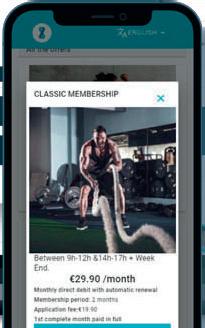


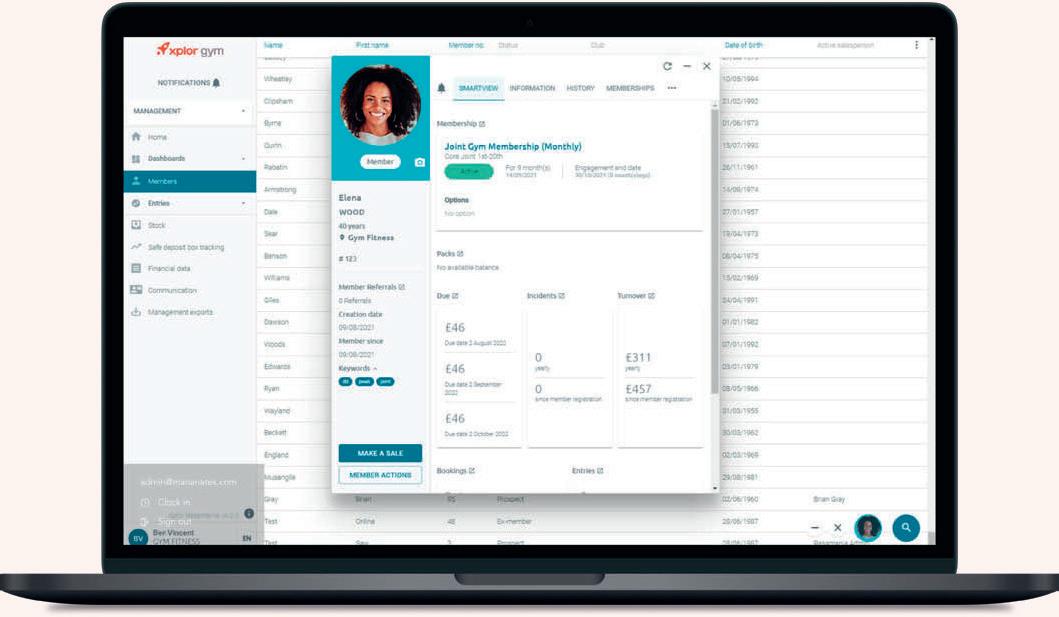
Best-in-Class ‘API First’ Technology



Embedded Full-Service Payments
Smart Marketing Automation

Member Self-Service
Digital Joining & Onboarding


Dashboard & Analytics
Recovery & Retention
Integrated Access Control
“IappreciatehowsimpleandeffectiveXplorGymis–It’seasytolearn,newstaffmembershavecompletedthe basictrainingin10minutesontheirfirstshift.I’drecommendXplorGymtoothergymoperatorsbecause ofhowsimpleitis.Ithaseverythingyouneedwithoutunnecessarycomplication.”
Luke Tyler, Head of Health and Wellbeing Services, YMCA Black Country GroupDiscover how Xplor Gym can elevate your fitness business. Book a free demo www.xplorgym.co.uk | hello@xplorgym.co.uk

Recently-formed body, Romania Active, has achieved a trailblazing breakthrough by winning tax-free advantages for health club memberships and other preventative care
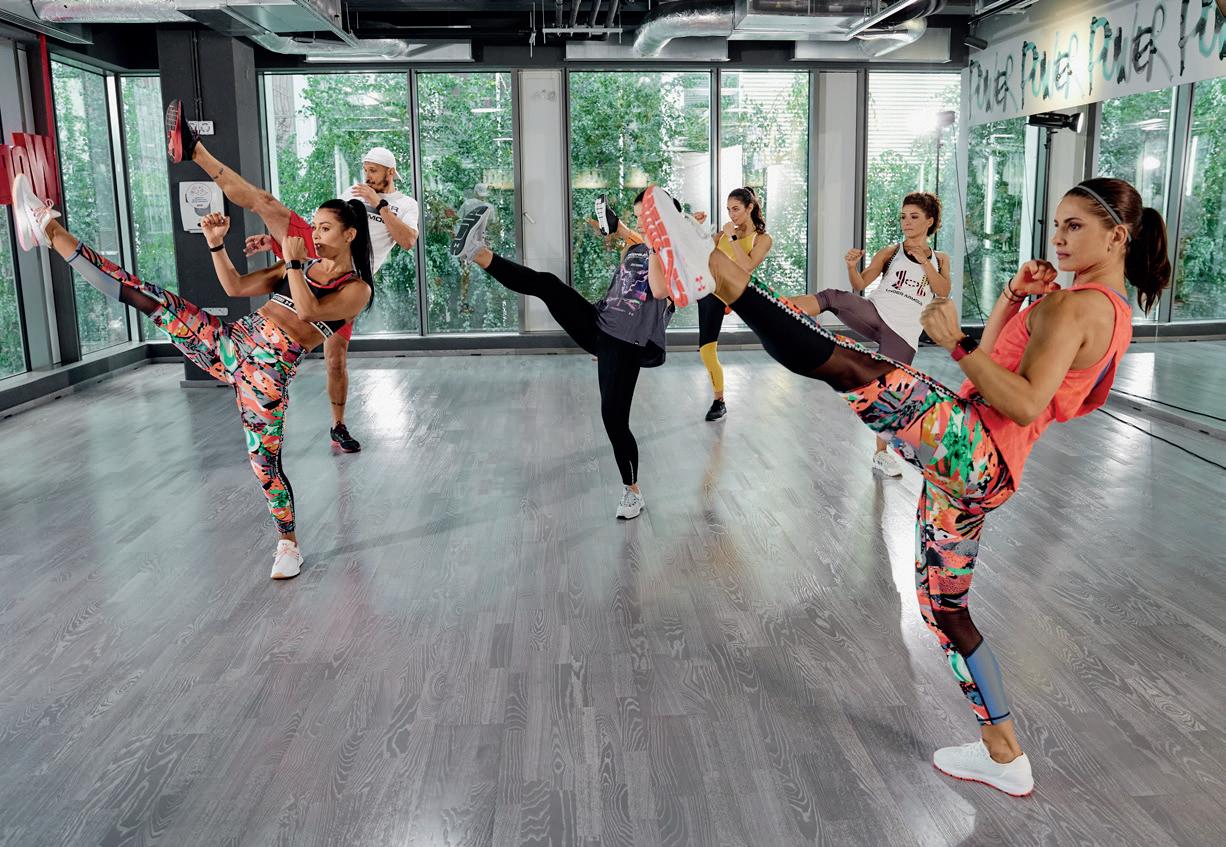
The government of Romania, working with recently established representative body, Romania Active, has delivered a radical new policy by declaring that payments made for health club memberships – and a raft of other preventative services – will be subject to generous tax breaks.
A new law will result in all gym and health club subscriptions being made tax-free and tax deductible up to the value of €400 (US$442, £355) per year for each employee, meaning companies can offer gym memberships and other fitness subscriptions as non-wage benefits.
The tax exemptions also cover companies offering “mixed preventative care”, which covers physical activity and medical subscriptions relating to recovery and recuperation – all important to the growth of the sector.
Tax-free subscriptions can also be offered to the children of employees and other people in their care, further extending the reach of preventative measures in Romania.
On page 14, Kent Orrgren, president of Romania Active, tells HCM: “This is a huge breakthrough and the new law is a valuable recognition of the importance that physical exercise has for the health of the nation and the impact the fitness industry has on the health of the economy.”
At a time when the industry globally is battling for recognition and support from governments, as well as a seat at the table when it comes to the whole prevention agenda, this is a most welcome breakthrough and will give heart to other representative associations battling for similar recognition.
It could also offer a framework for consideration by other governments and once results are available to show the impact of this investment on the economy, this evidence will be invaluable to the sector when it comes to representation.
The move is not the only support being given to the health and fitness and wellness sectors in the burgeoning Romanian economy – tax breaks are also available for inbound investment, corporation tax is
low at 16 per cent and a law determines that profits reinvested in tech – including fit tech – are exempt from taxation, creating a fertile environment for growth.
As the world grapples with the twin challenges of rebuilding from the impact of COVID and tackling soaring health costs, the case for government interventions such as this – as well as a more effective focus on prevention – are ever more powerful and we hope that this breakthrough will be the first of many as the governments of the world wake up to the power of turning to wellness.
Liz Terry, editor lizterry@leisuremedia.com
The new law will result in all gym and health club subscriptions being made taxfree and tax-deductible
ISSUE 4 2023 N o 313
05 Editor’s letter
Increasing demand for mindfulness classes is creating opportunities, while acting as a gateway for the inactive, says Liz Terry
12 Letters
Rod Hill writes about offering free fitness to the over-70s in Spain, while Haroon Mota details a scheme to support the Muslim Hikers
14 HCM people
Kent Orrgren
The CEO of fitness chain World Class Romania and chair of fitness association Romania Active talks to HCM about the country’s huge potential for market growth
22 HCM people
Debbie Bellenger
There’s never been a better time for fitness professionals to step into the gaps left by public health, says the CEO of Body by Definition
26 HCM news
The Gym Group appoints its new CEO, Xponential does a deal with LG and Deloitte numbers show recovery in Europe
36 Interview
Nerio Alessandri
As Technogym celebrates its 40th anniversary year, its founder talks about his passion for spreading the message of wellness worldwide
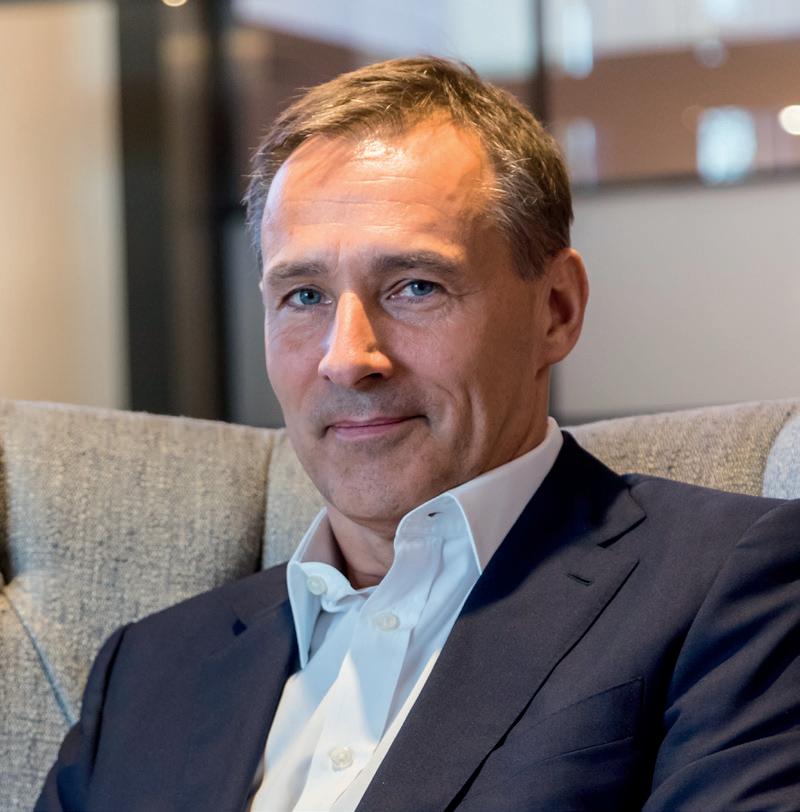
As data shows health spend correlates with longevity, experts discuss how this insight is driving new industry priorities
Dave Courteen
The industry veteran and CEO of Mosaic Spa and Health Clubs talks about the challenges of being a high-end operator when budget clubs arrived on the scene
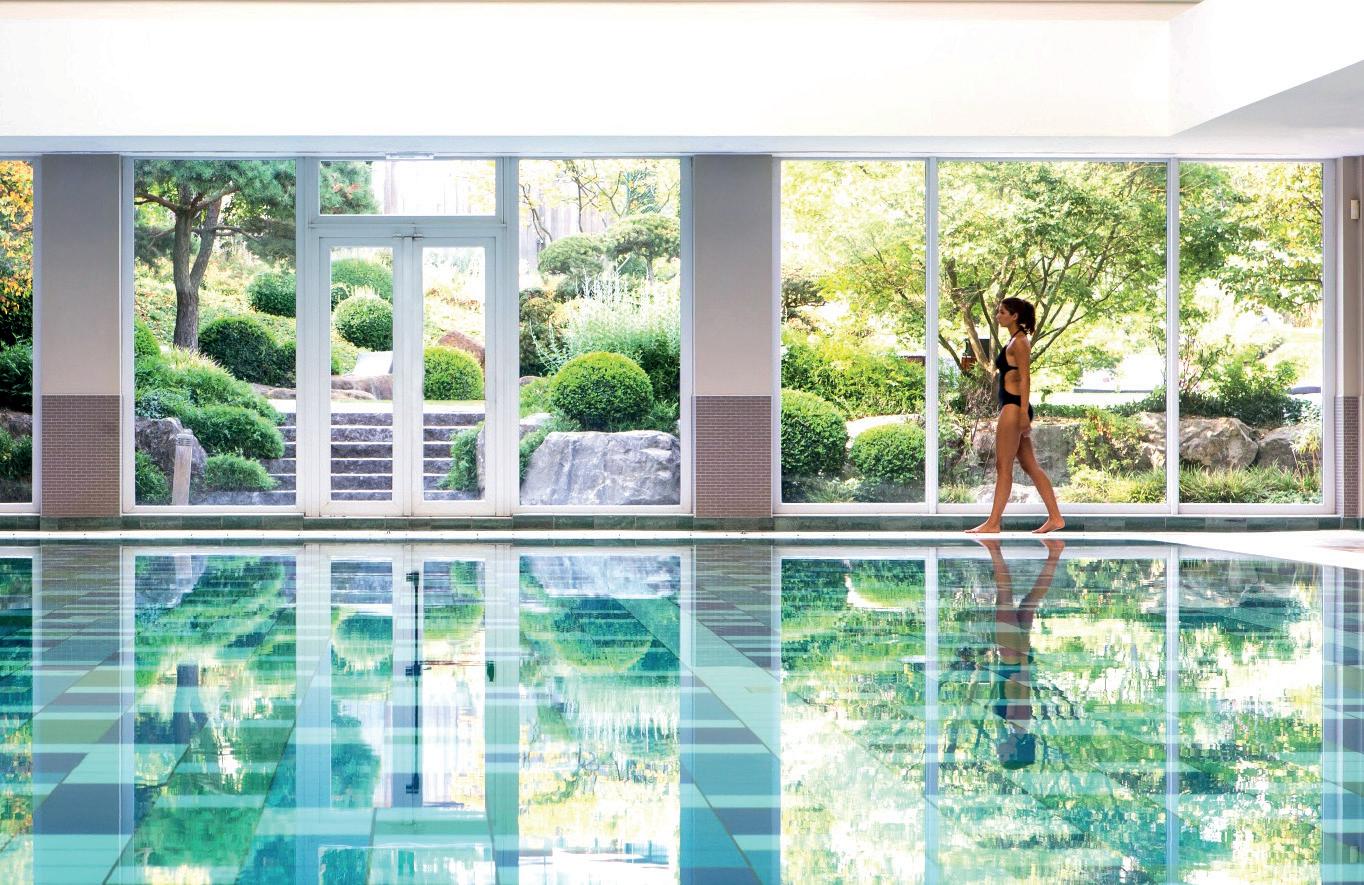
Long COVID is affecting 30 per cent of people who’ve had the virus. Dr Cedric Bryant details his own experience, and suggests ways clubs can offer support
With more people waking up to the importance of mental wellbeing, Kath Hudson explores ways clubs can best support members on this journey
68


Brian Morris
The CEO of high-end club operator Aspria talks about the company’s launch of Aspresso, a full-service budget brand for the family market
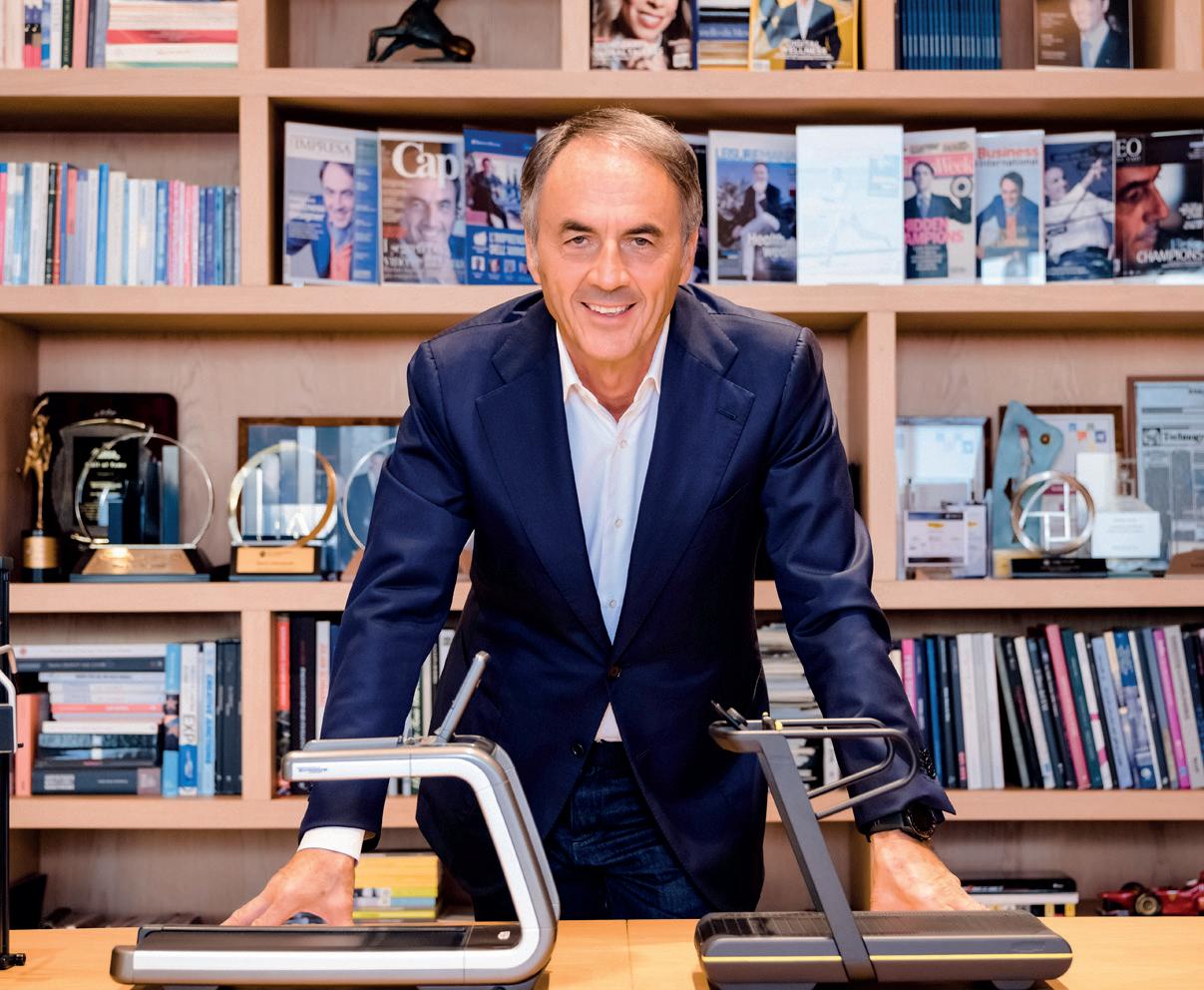

What’s trending in the world of exercise monitoring in 2023? Frances Marcellin catches up with some leading fit tech suppliers to find out
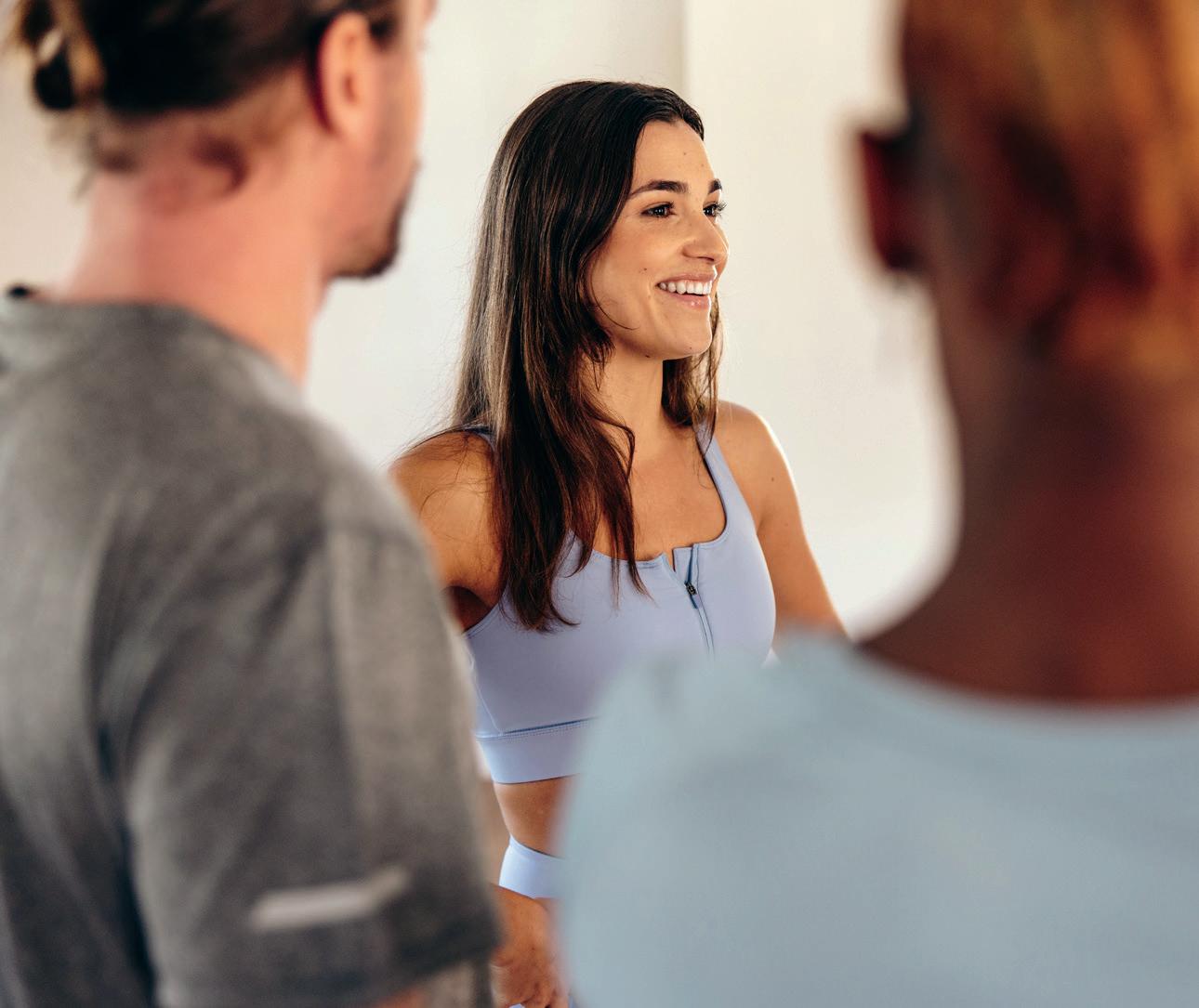

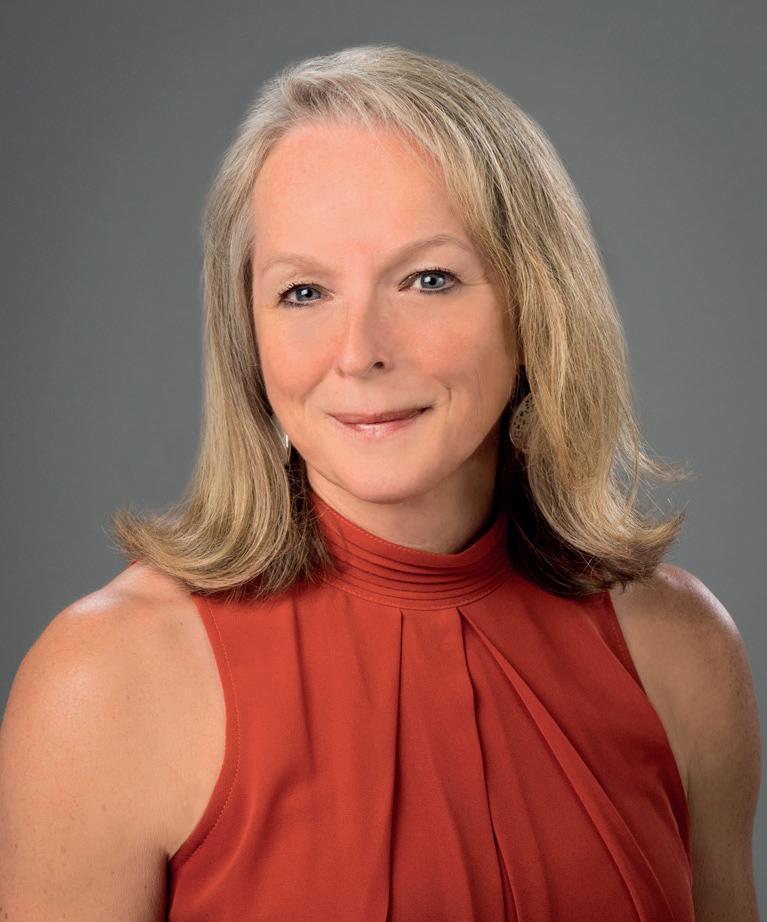

86 Elevate 2023
What to expect at this year’s Elevate show at London’s Excel
94 Product Innovations
The latest fitness kit launches from suppliers, including Eleiko and Wattbike
The HCM directory is part of a network of resources for buyers that includes www.HCMmag.com/CompanyProfiles,
sleep
How regular, good-quality sleep can improve exercise outcomes
www.HCMmag.com


theteam@leisuremedia.com
Other
Print HCM magazine is available in print from www.leisuresubs.com
HCM digital
Read free online and enjoy extra links and searchability
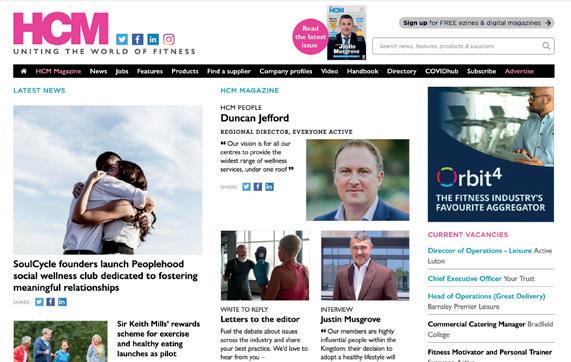
www.HCMmag.com/digital
HCM PDF
(0)1462 431385
+44 (0)1462 471901 Advertising +44 (0)1462 431385

Subscriptions +44 (0)1462 471910
Circulation +44 (0)1462 471932
Finance
+44 (0)1462 471930
Credit control +44 (0)1462 733477
A PDF edition is available to read offline at: www.HCMmag.com/pdf
Fit Tech magazine
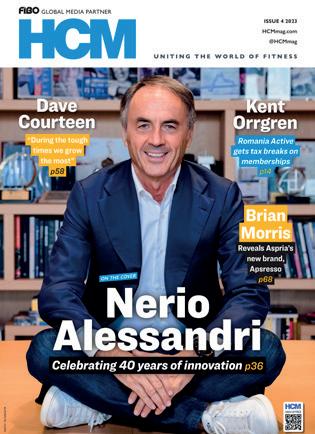
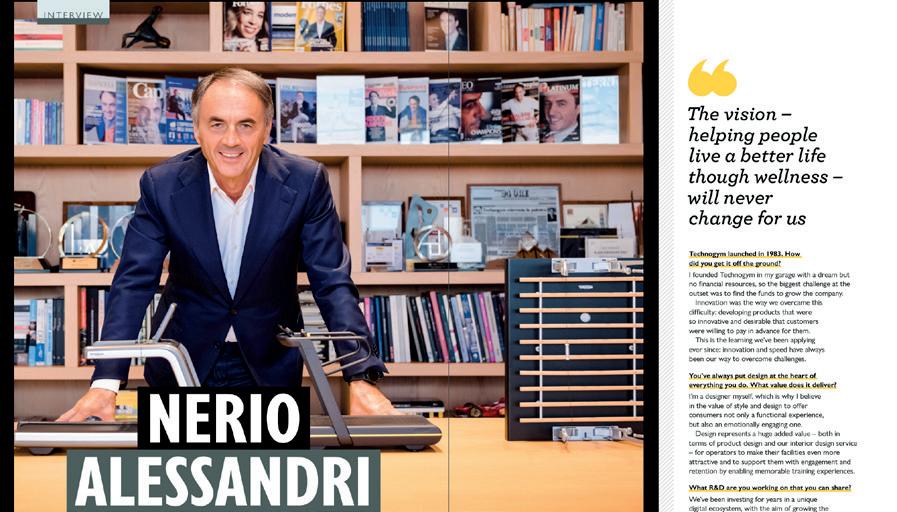
www.fittechglobal.com

www.fittechglobal.com/archive

HCM Handbook
www.HCMhandbook.com

www.HCMhandbook.com/pdf
HCM Online library
www.HCMmag.com/archive
HCM Ezine & Instant Alerts
www.leisuremedia.com/subscribe
Leisure Opportunites jobs & news
www.leisureopportunities.co.uk
Buyer Search Engine
www.fitness-kit.net

©Cybertrek Ltd 2023 ISSN 1361-3510 (print) / 2397-2351 (online)
To subscribe to HCM (Health Club Management): log on to www.leisuresubs.com , email subs@leisuremedia.com or call +44 (0)1462 471930.
Annual subscription rates are UK £45, Europe £57, rest of world £80, students (UK) £22.
Style: HCM follows an editorial house style which precludes the use of marketing devices in body text and headlines, eg: capitalised or part capitalised names and registered trademarks. CamelCase is allowed Contact the editor for more details – lizterry@leisuremedia.com.


Copyright details: HCM (Health Club Management) is published 12 times a year by Leisure Media, PO Box 424, Hitchin, SG5 9GF, UK. The views expressed in this publication are those of the authors and do not necessarily represent those of the publisher. All rights reserved. No part of this publication may be reproduced, stored in a retrieval system or transmitted in any form or by means, electronic, mechanical, photocopying, recorded or otherwise, without the prior permission of the copyright holder, Cybertrek Ltd 2023.
Print and distribution
Printed by The Manson Group Ltd. Distributed by Royal Mail Group Ltd and Whistl Ltd in the UK and Total Mail Ltd globally.





Biostrength™ helps you avoid the most common strength training mistakes to get up to 30% more results from your workout. Thanks to the patented Biodrive System, you can easily and automatically: Select the goal and get the best resistances and biofeedback for it
Train with the correct workload
Find the proper range of motion
Set the right tempo and number of reps
Get the correct rest time
Discover more on technogym.com/HCM1
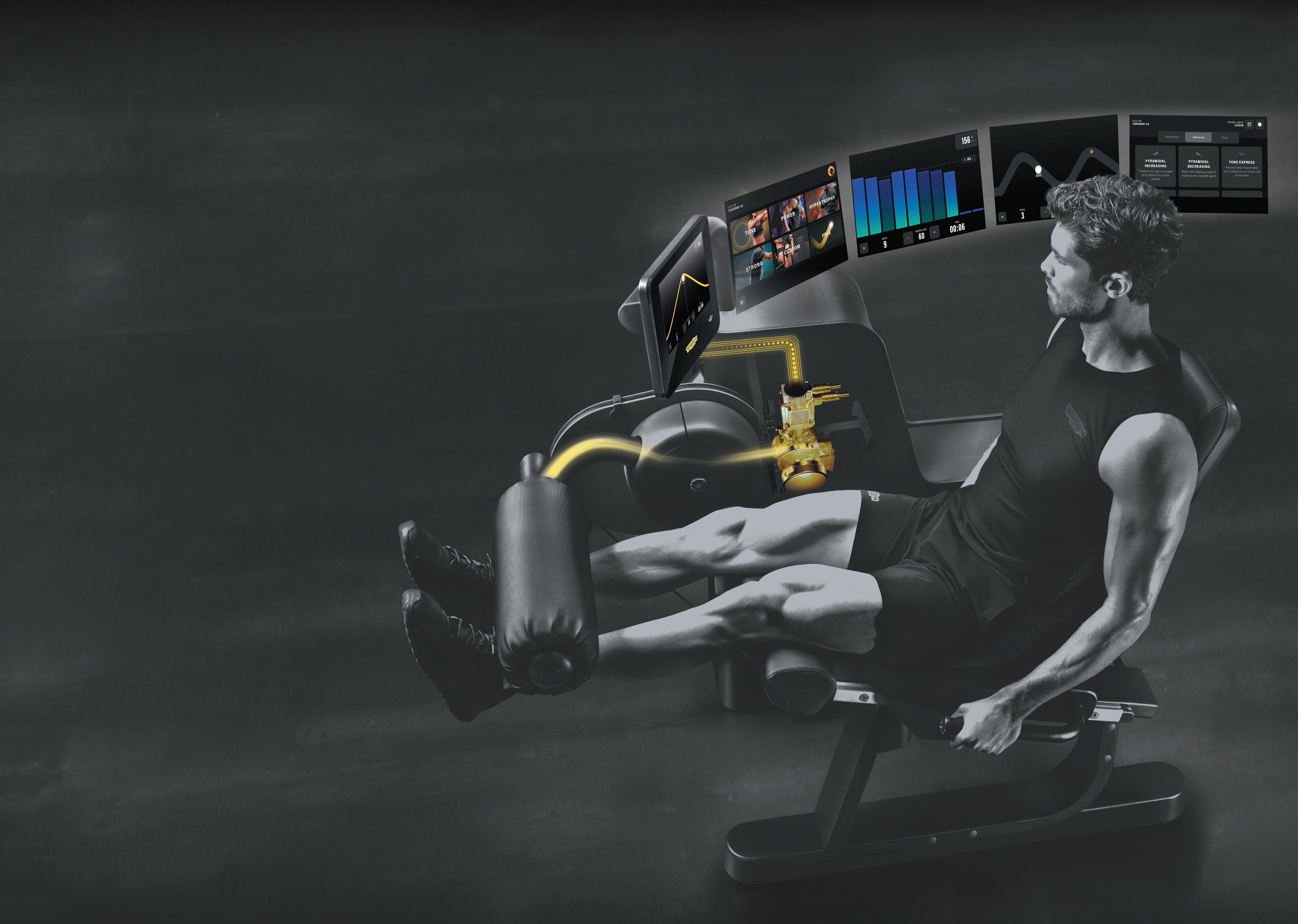
ENGAGEMENT AND MOTIVATION
Biofeedback and AI for real time guidance
PERSONALISED ROM
Right ROM and speed
PATENTED
NEUROMUSCULAR ACTIVATION
Increased neuromuscular activation
CORRECT POSTURE
Automatic posture setup

OPTIMAL WORKLOAD
Maximum muscle contraction
CLICK TO PLAY VIDEO
letters@leisuremedia.com
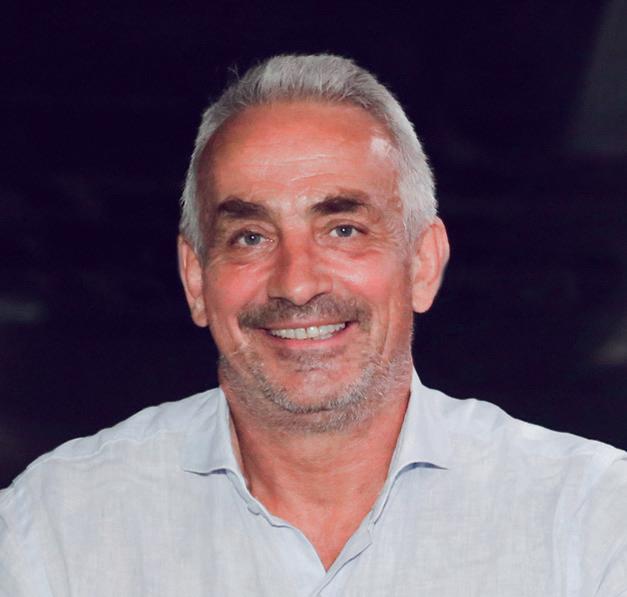
Diseases such as osteoarthritis, arthritis and rheumatism are very common among the elderly in Spain where the presence of general pain in people older than 75 years is reported by 43 per cent of the population. It’s also estimated that approximately 40 per cent of European spending on medical care is channelled to the elderly.
In addition, more than one in two older people in Spain lives with joint disease.
To address this challenge, Énergie Fitness Iberia has created a free strength training programme to improve the quality of life of adults over 70 years-of-age.

We love our young members, but we didn’t have any people over 70 in our gyms and as the benefits for seniors are so enormous, we decided to create Silver Warriors strength training.
The programme seeks to demonstrate that fitness and physical activity are for all people, regardless of age, level or physical condition, as the fitness industry has for a long time been primarily focused on people between the ages of 18 and 35 who want to stay in shape.
Strength training is much more important than cardio for people over 70 because it maintains muscle and joints and helps them stay independent, healthy, and strong. It helps retain balance, resulting in fewer falls and hip fractures and helps relieve pain from stiff joints and arthritis.
At the start of Silver Warriors, the Énergie Fitness team carry out a strength test of main muscle groups, including quadriceps, glutes and lower back. This enables an exercise programme to be personalised for each person’s physical abilities.
Fuel the debate about issues across the industry and share your ideas and experiences. We’d love to hear from you.Rod Hill Around 43 per cent of people in Spain report general pain
Silver Warriors is seeking to demonstrate that physical activity is for all agesPHOTO: EMPOWERED BRANDS PHOTO: ENERGIE FITNESS
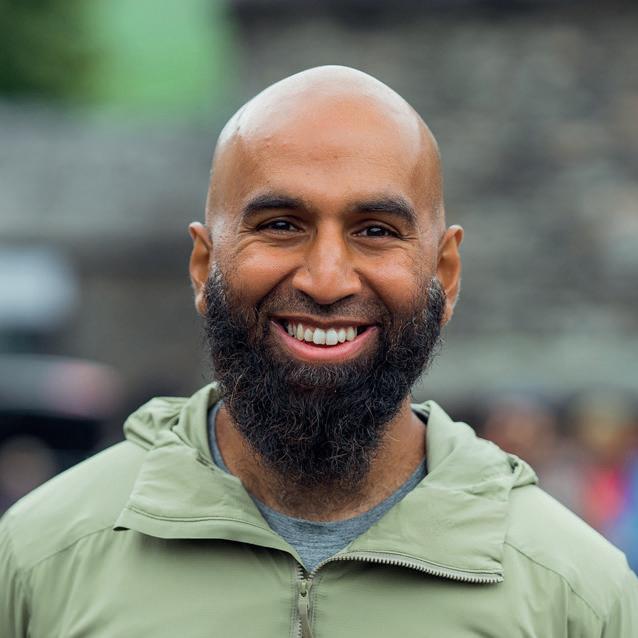
The Muslim Hikers (www.instagram. com/muslim.hikers) have teamed up with Adidas, Wiggle and OUTO (www.openinguptheoutdoors.com) to tackle the lack of inclusivity in physical activity in the great outdoors.
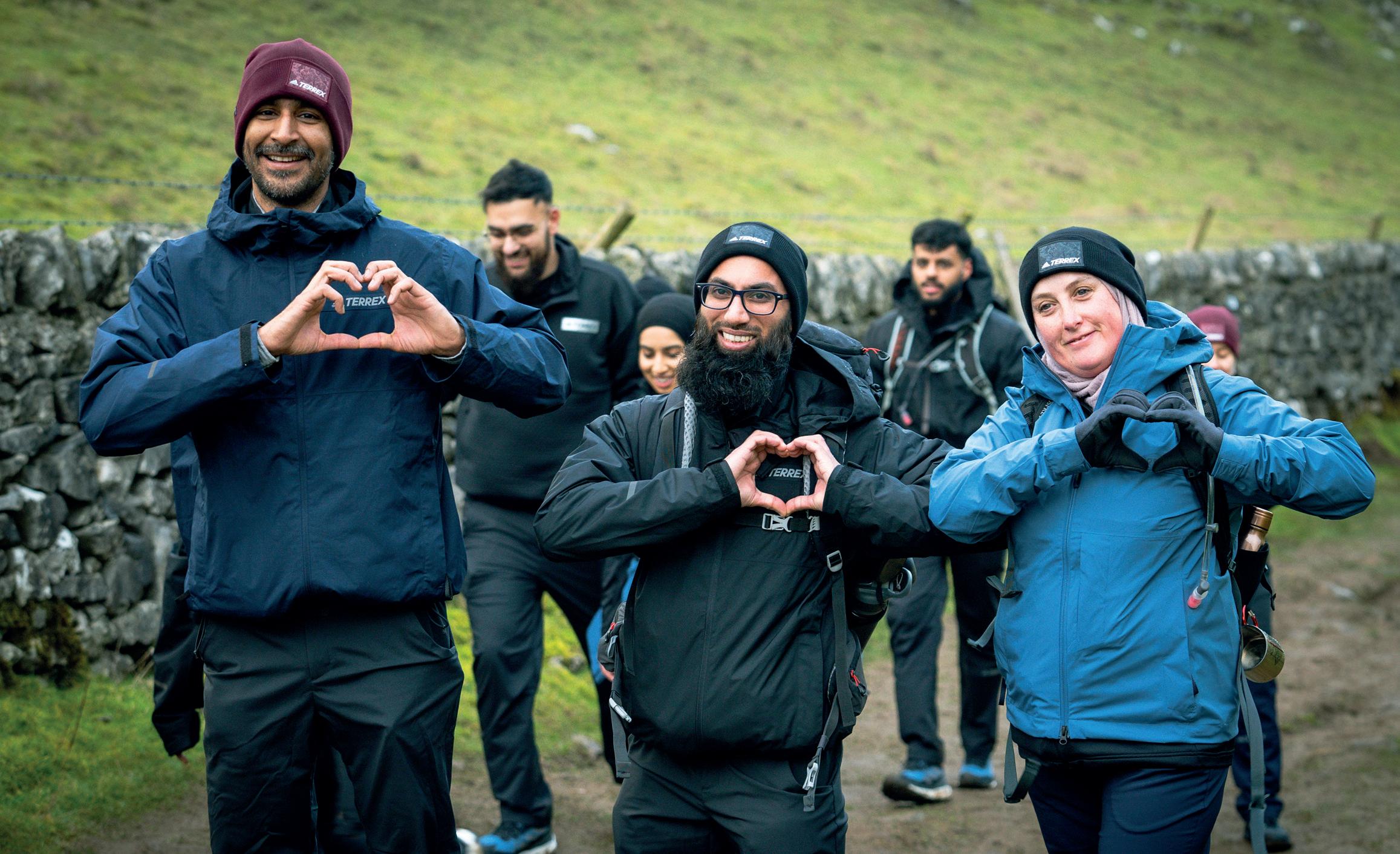
The initiative was founded after Muslim Hikers received racist online abuse following a hike in the UK and after appearing on the Countryfile
TV programme in September 2022, when our group was accused of not being ‘proper walkers’.
The three brands have worked closely with us to identify the barriers that need to be broken down to make the countryside feel like a place Muslims can enjoy.
Muslims pray to Mecca five times a day and as result of the partnership, signs pointing to Mecca have been installed on one of the Peak District’s most popular hiking routes – Cave Dale. A range of prayer mats has also been designed and produced specifically for outdoor use.
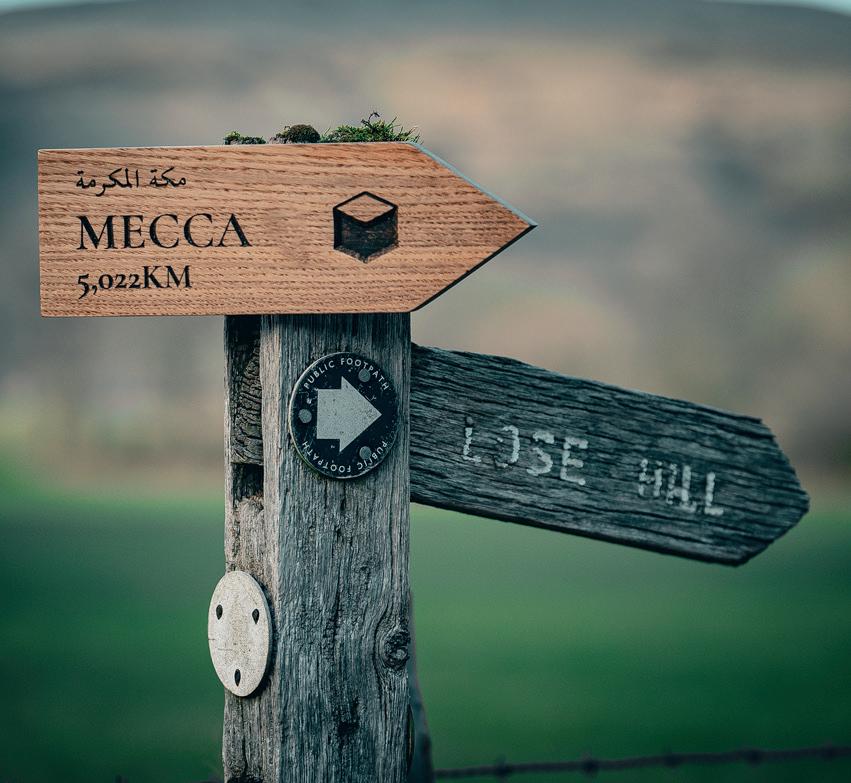
Working with OUTO, Wiggle and Adidas has allowed us to take a huge step in the right direction when it comes to promoting inclusivity in the outdoors. Everyone should feel empowered to get outside and enjoy nature and this initiative makes it easier for the Muslim community to do this without having to worry about the practicalities of prayer.
The prayer mats are made from 100 per cent polyester to make them lightweight, waterproof, and able to withstand the outdoor elements. Their design depicts contours – used on maps to represent topography – and was created in partnership with QM Design, a seventh generation Islamic crafts company.
The first 100 mats have been donated to the Muslim Hikers, with further prayer mats being produced for sale on Wiggle’s website, with all proceeds generated from the sales going to Wiggle’s charity partners. l
The partnership has enabled us to take a huge step in the right direction when it comes to inclusivitySignposts to Mecca have been installed
We’ve been in discussions with the Romanian government for tax deductions on health club memberships and have recently been successful


During the early stages of the pandemic a team of industry people in Romania proposed the founding of the association and as the largest operator – World Class Romania – we’ve fully supported its formation.
It took a year to incorporate and get through the legal paperwork and we finally launched in August 2021.
It's about having one voice to represent the industry, bringing more awareness to physical activity in Romania.

Many Romanians are very active, but there are not enough brick-and-mortar clubs to serve the population. This creates an opportunity for growth, which is what we're trying to build with Romania Active.
Today there are 700 clubs across the country and 4.5 per cent market penetration. We believe this could grow to 8 or 9 per cent penetration in the next five to six years.
The first step is to get it to the average market for Europe – around 12 per cent. That would treble the penetration in terms of number of clubs and members.
The organisation encourages networking and best practise and does benchmarking against other markets and other industries so we all benefit from this knowledge. We also collaborate with Europe Active.
Romania Active is the voice of the industry in dealings with government and the aim is to get the sector high in the agenda, so we’re part of the big discussions.
We’ve been working to get tax deductions on health club memberships and have recently been successful, meaning Romania is now one of the few countries in the world with a dedicated gym, health and fitness membership deductibility law for all employees – this is a huge breakthrough.

The new law is a valuable recognition of the importance that physical exercise has for the health of the nation and the impact the fitness industry has on the health of the economy.
Yes, there are increasing levels of affluence and a growing middle class, so two segments are growing fast – low-cost and premium. Romania has one of the fastest-growing health and fitness markets in Europe.
The latest research shows the sector is expected to see a 30-35 per cent growth in memberships in 2025, adding an estimated 250k – 300k members and the overall market is expected to grow by +45 per cent over the next five years.

Market value in 2025 is projected to be between €360m and €380m, a 45 – 55 per cent increase on 2018. There’s also a growing demand
for premium clubs, accompanied by higher willingness to pay. My organisation, World Class, is at the top end of the market and we had our best ever months recently, while also reaching a record number of active members at 76,000. With the new law of fitness membership deductibility we also expect corporate wellness to grow, so we’re developing new programmes, to help companies nurture a healthy and productive workforce.
In 2019, a study by Ipsos showed only 9 per cent of Romanians placed health at the top of their happiness scale, but by 2022, they found 64 per cent reporting physical wellbeing is their first source of happiness and 85 per cent saying they believe physical and mental health are ‘extremely important’. These are game-changing numbers.
Set against this, however, 60 per cent are not active and spend a lot of time sitting. Physical inactivity is recognised as one of the main causes of diabetes, cardiovascular diseases and obesity – the chronic diseases of the century according to Eurobarometer 525, which was published in 2022 (www.hcmmag.com/EB525).
We believe this set of factors highlights our opportunity as an industry to educate people about the benefits of physical activity.
A recent report completed by Daedalus Online and AT Kearney for World Class shows 85 per cent of the Romanians who don’t go to health clubs are open to purchasing a membership in the next six months. These figures are encouraging and show the enormous potential for more Romanians to be active in all age groups, not only the young and healthy.

The health and fitness industry is charged the lowest rate of VAT, having been reduced from 19 per cent to 5 per cent in 2018.
The tax structure generally is also appealing to foreign investors, with a corporate tax rate of 16 per cent – which is one of the lowest in Europe.
In terms of fiscal incentives, Romania generally has one of the lowest VAT rates in Europe and profits reinvested in tech are exempt from taxation.
Yes, the tech scene is huge and well developed and there’s an abundance of digital innovation – much of it with relevance to health and fitness. This is a huge advantage for health club operators and the wider sector. There are already some great products coming online – everything from software and CRM systems to
access systems and apps. Being a tech-driven economy is also helpful when it comes to communications.
It’s not only going involving big business – there are lots of entrepreneurs in Romania and Romania Active is committed to encouraging their development.
A company called Vectr Holdings which is part of African Industries Group (www.africanindustries.com) and the management are also investors. The company went through an ownership shift that was completed in July 2022 and so at this moment we’re preparing for future growth.
In Romania, Vectr Holdings also owns companies in agribusiness, as well as in development and real estate.
World class is the dominant health and fitness brand in Romania, having been established 23 years ago, and the company is growing strongly. We have 44 clubs and 23 swimming pools and we’re the largest chain, with our 76,000 members who are served by 700 employees. We’re aiming to double our total number of clubs in the next five years.

We provide members with an all-inclusive wellness experience that includes unlimited access to classes, club facilities, personal trainers, swimming pools, saunas and also spa, squash and jogging fields in selected locations. Our emphasis is on exercise and recovery for mental and physical health, as well as on creating communities to deliver social value. Our ultimate goal is to change Romanians’ lives for the better with a diversified offering of health and fitness services. We’re also a long-term partner for

Figures show the enormous potential for more Romanians to be active in all age groups, not just the young and healthyThe operator is the biggest provider of swimming pools in Romania PHOTO: WORLD CLASS PHOTO: WORLD CLASS
Les Mills, delivering a wide range of their classes and provide a premium fitness and lifestyle club concept called W. (www.hcmmag.com/WWorldClass).
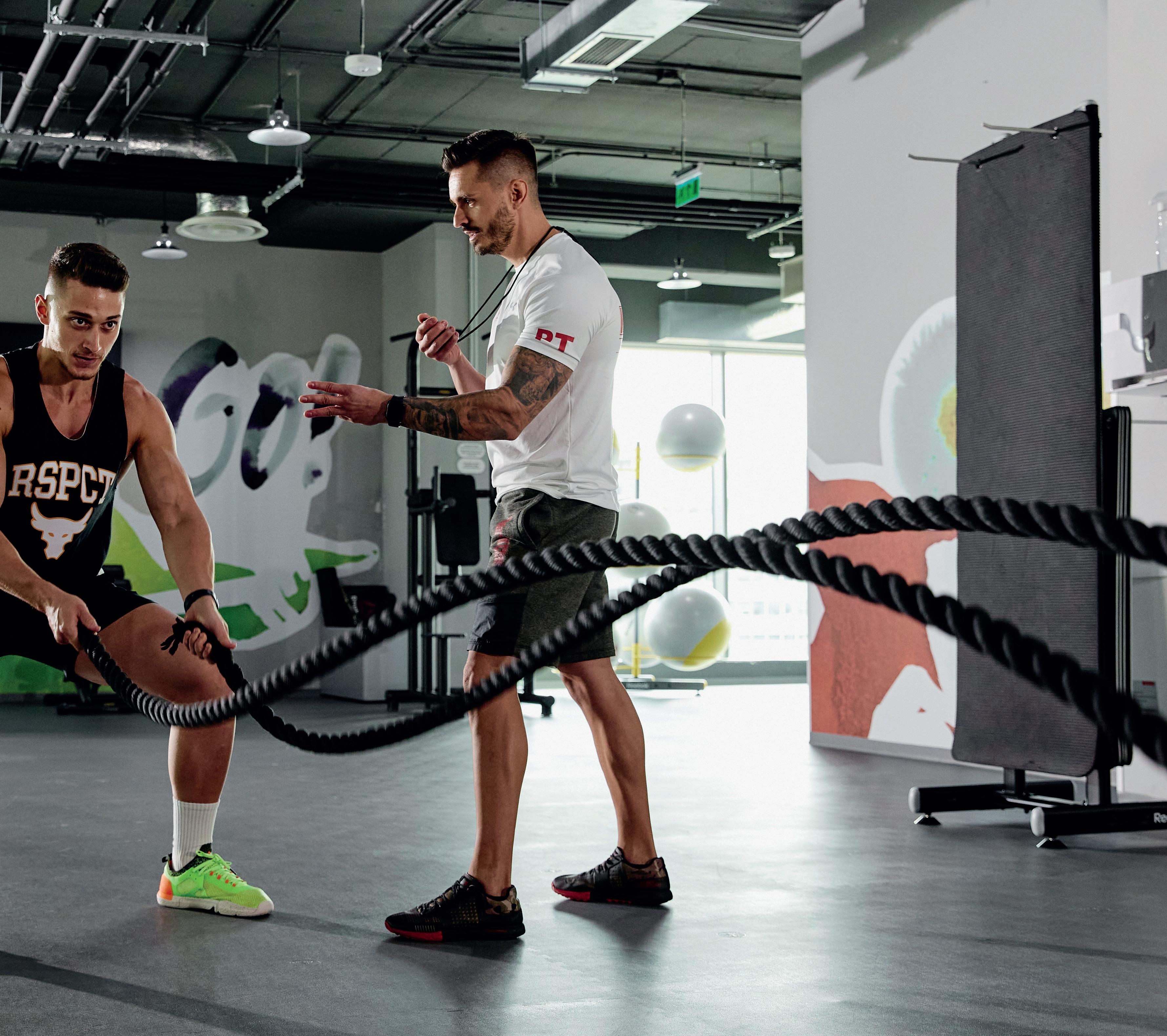
You’re also the largest provider of swimming? Yes, Romania has a lack of good sports and swimming facilities and we’ve seen a strong demand for sports, health and fitness centres with pools. Today we’re the largest pool operator and swimming school provider in the country and we’re planning to build even more.
Whenever we open up a club with a pool we get a huge interest from families who want their children to learn to swim, so lessons have become one of our strongest revenue streams in a very short period of time, especially since the lockdown ended, because for a couple of years, children were not able to go to the pool and now they have to catch up.
In addition, there’s a lack of access to pools in our communities in general, and we want to be a strong contributor to community swimming.
Romania is a developed country with a high-income economy based predominantly on services. It’s a member of the United Nations, the European Union, NATO, the Council of Europe, BSEC and WTO.
The name Romania derives from Latin, meaning Roman or ‘of Rome’ as a result of its colonisation by the Romans in the second century. Romanian is a Romance language, related to Italian, Spanish and French.
Known as the Romanian People’s Republic between 1947 and 1965, the country was an Eastern Bloc state and a member of the Warsaw Pact until the fall of Communism in Eastern Europe in 1989.
During the 2000s, Romania had one of the highest economic growth rates in Europe, accompanied by a significant improvement in living standards as the country established a functioning democratic state.
Growth accelerated as a result of government liberalisations in opening up new sectors to competition and investment – most notably, energy and telecoms.
World Class is Romania’s largest gym chain, with 44 clubs and 76,000 members
A native of Sweden, Kent Orrgren is CEO of World Class Romania and president of Romania Active. He has held senior management positions for fitness chains in Sweden, such as SATS and Actic.

Orrgren is also chair of Nordic educational company Wellness Education and Technology, which has brands including Safe, Afpt and The Academy – an education company for instructors and PTs. He holds an EMBA in Financial Management from Stockholm School of Economics and Marketing Management degree certificate from IHM Business School
It's a very nice feeling when you have a mix of kids and families and everyone benefits.
We teach kids from an early age, giving them a lifesaving life skill. We believe this is the fastest way to change a culture and a community – by starting good habits early.
We opened our 44th club in Bucharest on 21 April. The club is located in a new business hub in a green building with a state-of-the-art air filtration and it has the first rooftop running track in Romania, measuring 260m and offering runners a spectacular 360-degree view of Bucharest. It also has generous training areas, group fitness and cycling studios, as well as the latest equipment and accessories and a strong team of health and fitness experts – all with national and international certifications.
It’s strategically located near the University Politehnica of Bucharest and represents an
opportunity for all students to adopt a more active way of life. We’ve launched a communication campaign to support those working nearby to take full advantage of the new Romanian fitness membership deductibility law mentioned earlier.

We’ve always been committed to the ethos that exercise is medicine, which means we promote the benefits of physical activity and living a healthy lifestyle.
I strongly believe in building the organisation with passion, clear values and a strong team spirit. “Take good care of your employees and they will care for customers” is our mantra. Achieving success through collaboration and “walking the talk” are also important to us.
As stated by author Jim Collins in his book, Good To Great, “people are not our biggest asset, the right people are our biggest asset” and our team cohesion and the continuous development of staff
has been at the heart of our development. The aim is to position the company as a top employer. Our close relationship with our members and their success stories are also a measure of our success.
All our health and fitness experts are certified in their field. Many are professional athletes, others have degrees in kinesiology or exercise science. We also have a team running our #BeHealthyKids programmes, who are specialised in working with children.
We’re mainly focusing on Romania, because we see so much potential here, but we’re not ruling out the option of growing internationally at some point.
We’re exploring the option of developing a multibrand strategy, as we want to utilise the power of our brand and the power of our experience in the sector.
Our aim is to create awareness of the necessity for people to keep building their health and fitness

every day and we’re positioning World Class as always being available for consumers – near their home, near their workplace and online. We launched our virtual workouts during the lockdown and they are still part of our premium offering.
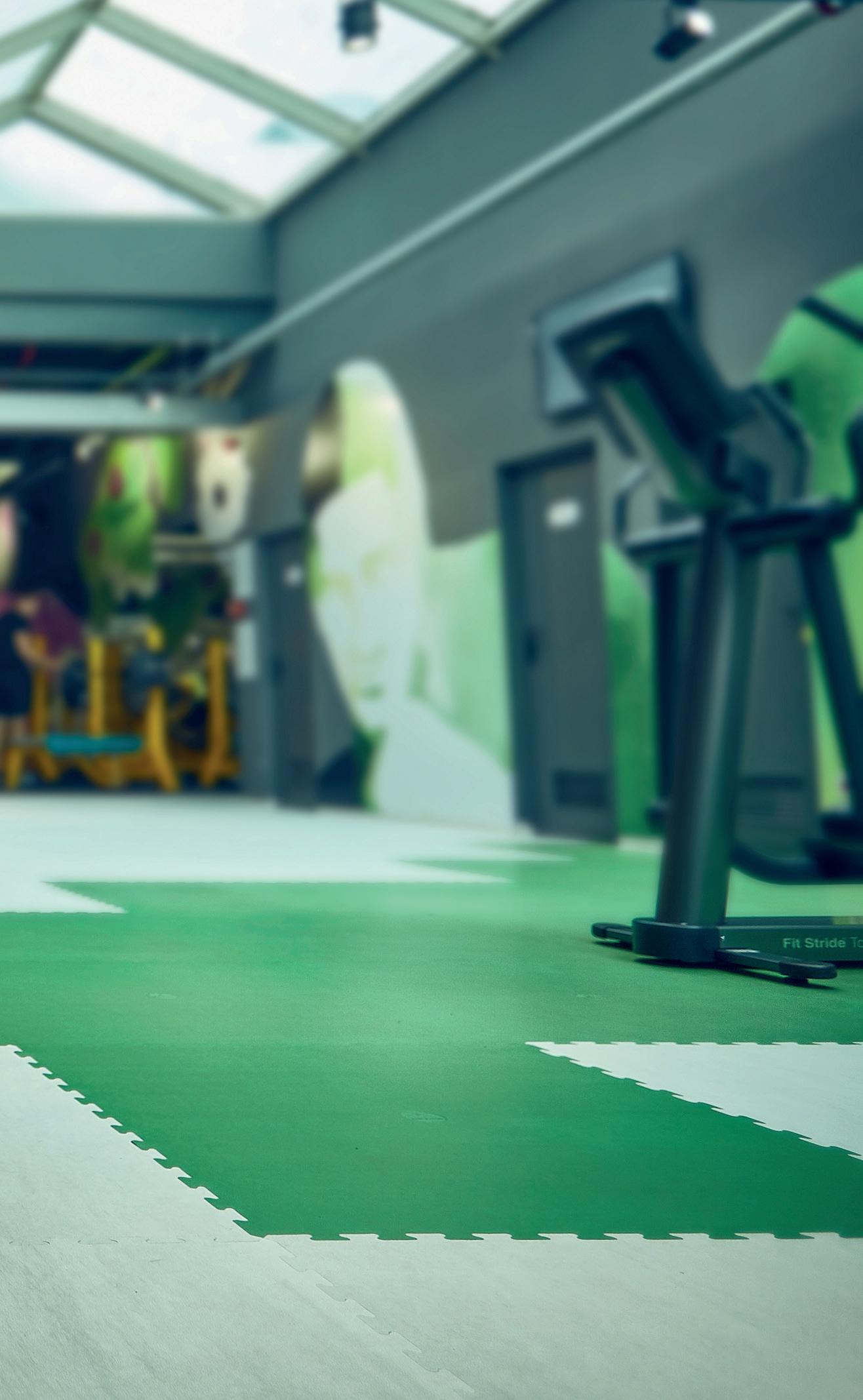
We’ll be investing in our premium position, aiming to improve our profit margin and member journey by delivering operational excellence.
Our educative and inspirational approach will have three content pillars: regular physical exercise, healthy eating and healthy recuperation (sleep, mindfulness and recovery) to achieve a balanced and healthy lifestyle. Our communication will all be about the #BeHealthy lifestyle we promote. l
More: www.romaniaactive.ro and www.worldclass.ro

We’re mainly focused on Romania because we see so much potential here, but we’re not ruling out the option of growing internationallyRomanians’ interest in wellness is growing at pace World Class is building more clubs with pools Orrgren has held senior management positions at SATS and Actic PHOTO: WORLD CLASS PHOTO: WORLD CLASS
Your mission is to elevate the health and fitness industry into wellness. Why does this need to happen?

When I first went onto a hospital payroll, in the late 90s, it was eye-opening for me to start creating wellness programmes in that setting. For the first time I realised there was a whole population which needed something different from what we were offering. There was nothing on my 120-class group exercise schedule which many populations – such as those suffering from diabetes, people who had undergone bariatric surgery or total hip replacement, as well as cardiac and pulmonary rehab patients – could remotely succeed with.
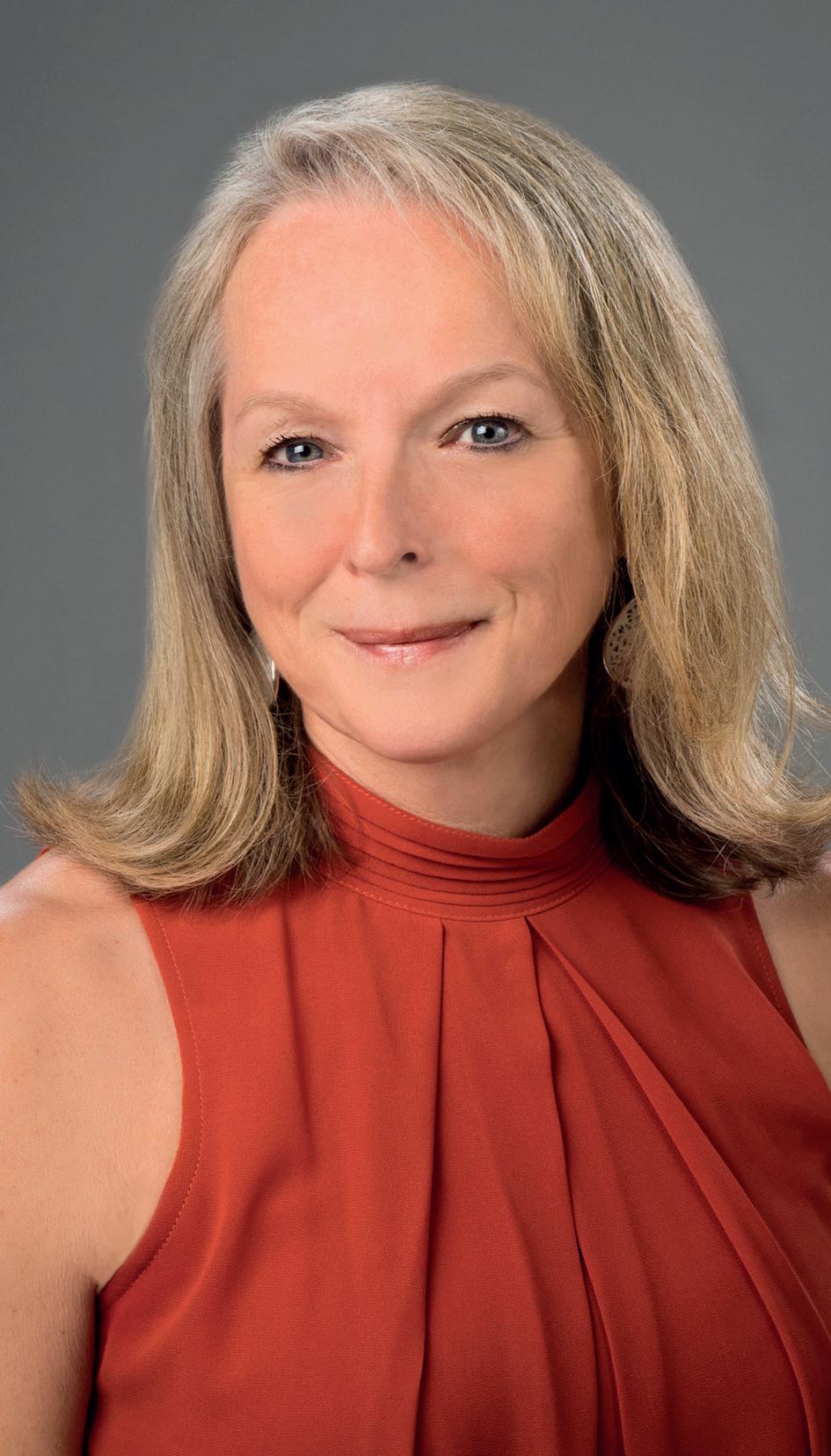
Up until that point in my career I had only ever worked with healthy clients, but there people were shuffling in on walkers and we had to meet them where they were and help them to move just a bit.
We’re facing a public health crisis all around the world, but America is the worst. By 2030, 50 per cent of Americans will have a BMI of more than 30, with all the co-morbidities which come with that.
Figures from 2021 revealed the average American gained 27lbs during the pandemic. In 2021 the surgeon general cited mental health as the number one concern for employers in America, and burnout is following obesity as being recognised as a disease which is a billable condition for health insurance.
The American Psychological Association reports that one in five employees have burnout, but other sources say it’s trending towards one in two.
There’s never been a better time for fitness professionals to shine, to find the gaps in public health and to step in
Debbie Bellenger
Founder and CEO, Body By DefinitionBellenger: the industry needs to address the health crisis
Employers are concerned about how to get their employees healthier, because what we did three, or four years ago won’t work now.
If the average consumer is changing, how can the industry adapt?
The fitness industry needs to grow up. If we don’t, who’s going to take care of all these people with high blood pressure and high BMIs? Where will they get lifestyle education? Many fitness professionals don’t see themselves as educators, but they need to start being interested in health outcomes.
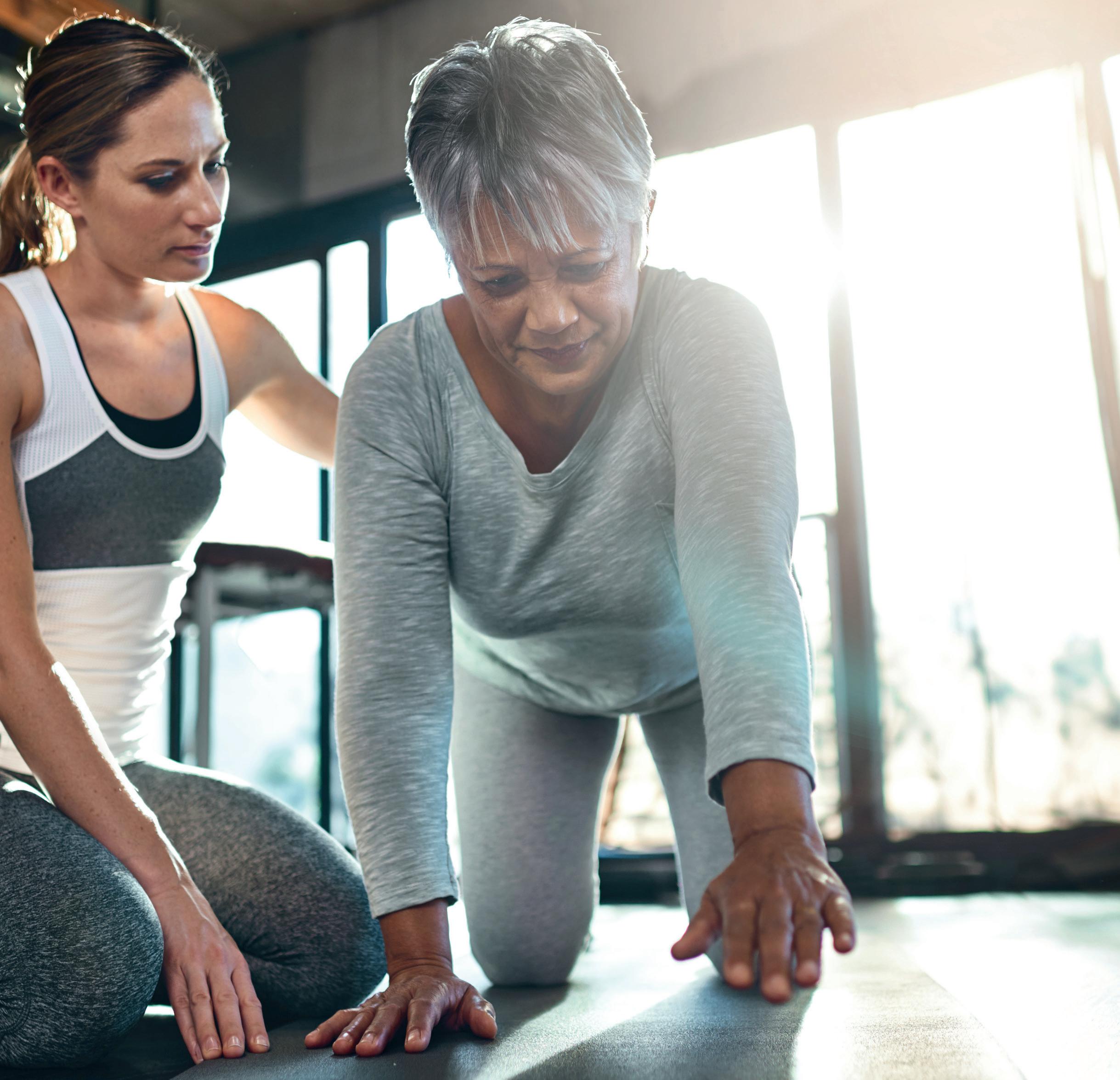
When I went onto a hospital payroll, in the late 90s, it was eye-opening for me to start creating programmes in that settingPHOTO: SHUTTERSTOCK/YURI A
If we just keep running the same classes on our schedules and don’t start adapting programmatically – both in lifestyle and education classes – we’ll never attract new people. To continue working with the same highly-motivated 10 per cent just isn’t sustainable.
Lots of what we do in clubs isn’t meeting the needs of those who are overweight, depressed, burned out, freaked out or whatever. We need beginner and intro programmes, where people can meet like-minded communities. We should be running meditation, mindfulness, breathing classes, yoga and walking groups.
The industry has been built on the path of least resistance by people who are passionate about exercise, but all we’re doing is getting the fit fitter. With a switch in focus, we have the opportunity to deliver health and wellness education to the masses.
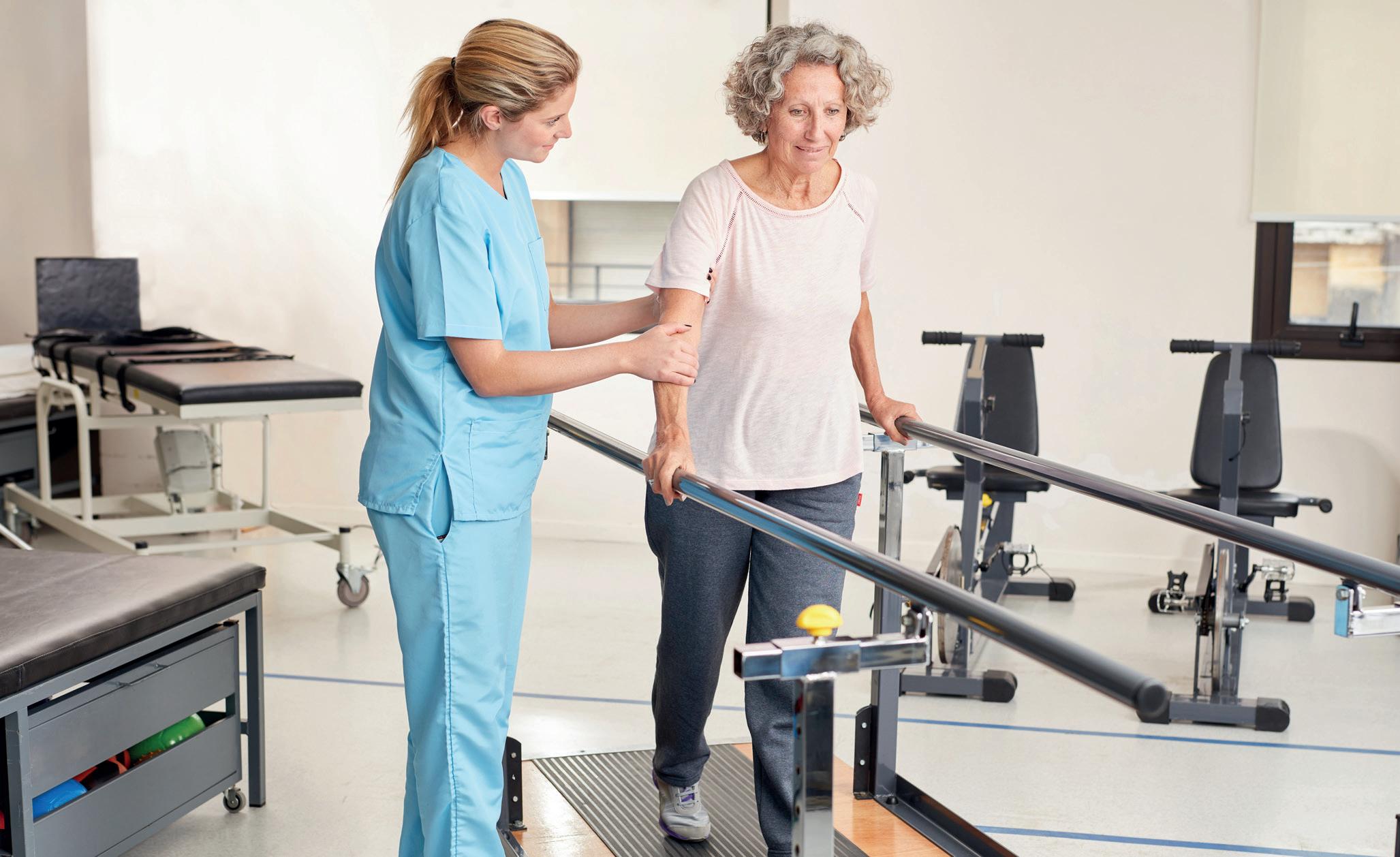
Yes, but currently there’s resistance from both sides. We can’t assume physicians will come knocking on our door. They only refer to trusted partners and look for pristine environments which mirror theirs. They want to know the fitness professional is certified, degree-qualified, punctual, that will do what they say they will do and they want to see data-driven, evidence-based health outcomes.
Lots of fitness professionals don’t work in that capacity. No outcomes are produced and they offer no pre- or post-session assessments. Health club and gym owners need to lean into the idea that we’re all responsible for changing the health outcomes of the population. If they don’t help, things won’t change.
Attend to the non-exercisers. It’s about choosing the right language, marketing tools and imagery to be more representative and also changing the programming. For example, when I was working
in hospital wellness, I would run an eight-week Feel Better programme, to educate people on what to eat, what to drink, how to move, social connection and fostering better sleep patterns.
Very often one of the most powerful aspects of these groups was that they would meet like-minded people facing the same challenges. If we want to succeed with people with behavioural health issues we need to stop talking about exercise and lead with wellness, addressing their barriers and unpicking traumas which are leading to self-sabotaging behaviours around their health.
Once they have a programme, fitness professionals then need to measure the outcomes with pre- and post-programme assessments, looking at height, weight, BMI, blood pressure and finding out about their sleep, water intake and happiness levels. Then they need to repeat these measurements at the end of the block of sessions.
Armed with the evidence from this pilot, operators can either approach a healthcare provider about co-creating a programme, or seek community wellness grants to extend the programme before approaching the healthcare professionals.
We can’t assume physicians will come knocking on our door. They only refer to trusted partnersPHOTO: SHUTTERSTOCK/ROBERT KNESCHKE
When meeting medical professionals, it’s very important to turn up in professional attire: not leggings. Show you’re knowledgeable, with evidence-based practises behind you.
The data-driven and evidence-based approach is really the way for the industry to grow up. It’s also important to make sure facilities are welcoming to all populations, so a 70-year-old man who’s had a heart attack can go into a gym, see someone like him working there and feel as though he belongs.
We’ve got a lot of work to do. I’m one of the few on the lecture circuit speaking about burnout, resilience and wellbeing. Given the nature of the conventions I attended last year, I don’t think the industry is fully aware of the health crisis.
I don’t see group exercise changing to be more accommodating to those with trauma, burnout, depression or chronic diseases. I don’t see intro, beginner, mindfulness, or mind-body appearing on group exercise rosters. There is little or no discussion around
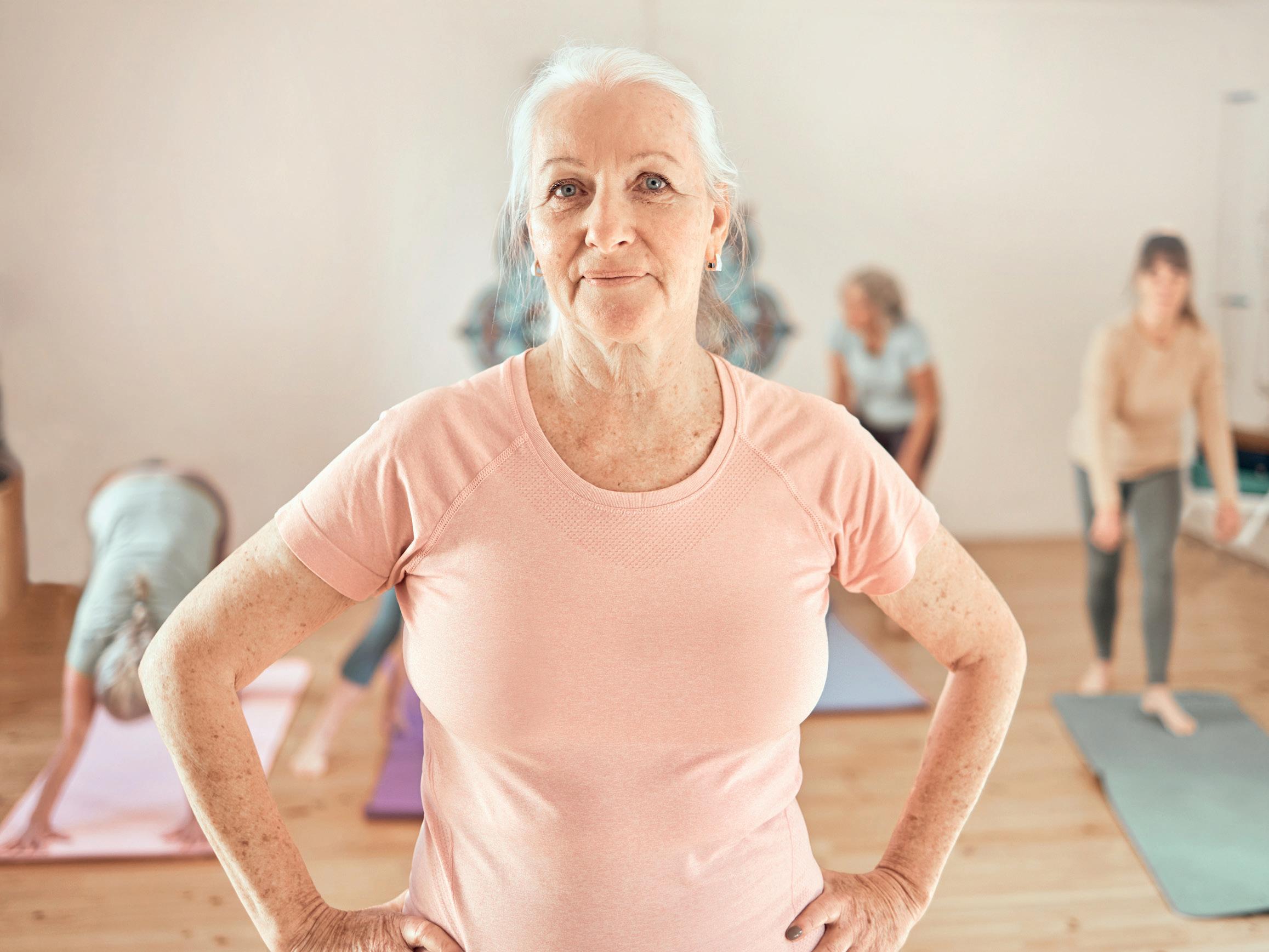
mental health. Other than staffing, the industry is mainly focused on new products and apps and shiny things.
But there’s a critical mass of people who need help and lots of work to do, but also huge opportunities. There’s never been a better time for fitness professionals to shine, to find the gaps in public health and step in.
If health and fitness professionals don’t step up to become wellness professionals and partner with allied health professionals to cocreate health and wellness programmes and classes, who will take care of our people?
The medical wellness model works and more fitness centres could be adopting it with success. l
Debbie Bellenger is sharing her expertise on the wellness and corporate markets in two eight-week masterclasses. Find out more at: www.debbiebellenger.com
Yoga and mindfulness can be a great entry point to exercise
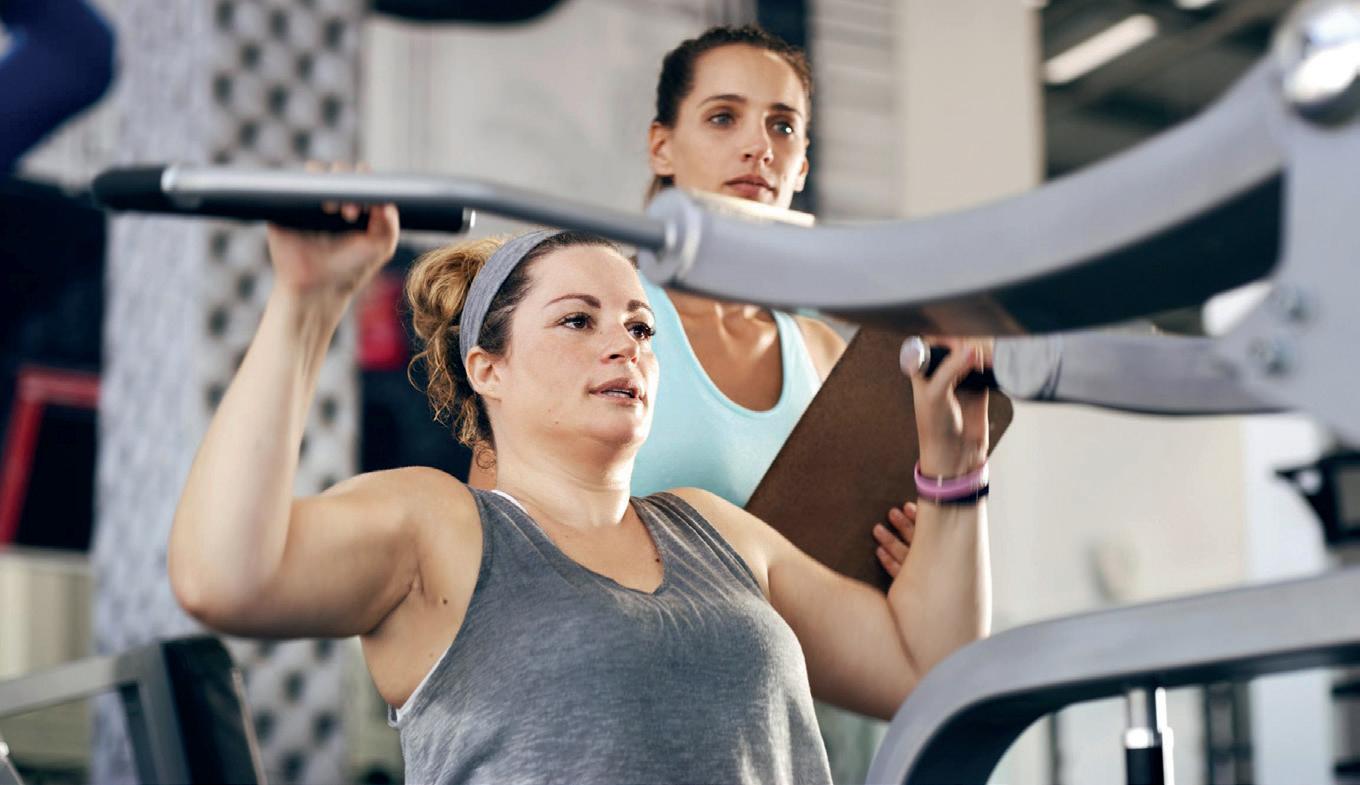
All gym, health club and other fitness subscriptions and memberships have been made tax-free in Romania.
The central government rubberstamped the initiative following extensive lobbying by trade association, Romania Active.
The new law has resulted in all gym and health club subscriptions and memberships being made tax-free and tax deductible up to the value of €400 (US$442, £355) per year for each employee.
It means companies can offer gym memberships and other fitness subscriptions as tax-free and deductible non-wage benefits.
The tax exemptions also cover companies offering “mixed preventative care”, which covers physical activity and medical subscriptions relating to recovery and recuperation.
Tax-free subscriptions can also be offered to the children of employees or other persons in their care.
Employees can now enjoy gym and health club subscriptions tax-free
The introduction of the law is seen as among the biggest “wins” so far for Romania Active, which was formed in 2021 by a group of the country’s leading health and fitness companies.
Among Romania Active’s stated aims is to be at the forefront of all new legislative changes concerning the health and fitness sector and
to ensure members are involved in the development of the changes.
Long term, it will also look to make sure that health clubs and gyms will be recognised as essential services in the eyes of the government.
● See our interview on page 14.
More: http://lei.sr/M7n2H_H
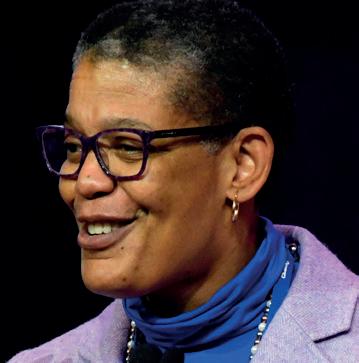
The Harvard TH Chan School of Public Health (HSPH) has unveiled the Thich Nhat Hanh Center for Mindfulness in Public Health, following a US$25m (€22.7m, £19.9m) gift from an anonymous donor.

The centre’s mission is to empower people everywhere to live with purpose, equanimity and joy through the practice of mindfulness; pursue evidence-based approaches to improve health and wellbeing through mindfulness; and educate and train the public in mindfulness.
Two primary areas of emphasis will be nutrition and the environment.
“We’re thrilled to host this groundbreaking centre at the HSPH,” said Michelle Williams, dean of the faculty.
We’re thrilled to host this groundbreaking centre at the HSPH
Michelle WilliamsThe new centre is named after Thich Nhat Hanh (1926-2022), a Zen master, global spiritual leader, scholar and peace activist revered globally as ‘the father of mindfulness’ for his teachings on mindfulness, global ethics and peace.
More: http://lei.sr/G3d7F_H
European fitness operators have seen a strong return to growth, with member numbers and income per club having increased every quarter since 2021.
The finding comes from the European Health & Fitness Market Report 2023, whose initial insights were shared at the European Health and Fitness Forum (EHFF), held in Cologne recently.

In a presentation, Karsten Hollasch from Deloitte Germany and EuropeActive Ambassador, Herman Rutgers, said the omnichannel approach to fitness is unlikely to disappear anytime soon, as the way customers are consuming fitness has been changed by the pandemic.
Other findings included that the impact of current inflationary
Hybrid fitness training habits, such as relying on multiple fitness settings, are here to stay
Karsten Hollaschconcerns are affecting consumer behaviour – at a time when many operators are still looking to recover from the disruption of the pandemic. Research results will be presented in a webinar on May 16th. Register here: www.HCMmag.com/EHFMR23
More: http://lei.sr/f3U5U_H
The Gym Group has appointed Will Orr as its new CEO and executive director.
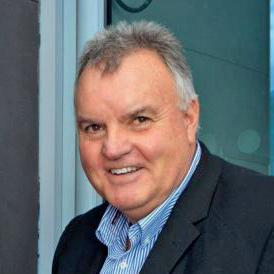
Orr joins the listed fitness operator from Times Media –publisher of The Times and The Sunday Times – and is expected to start in the role later in 2023.
He comes to the business from outside the fitness industry, having previously held the role of managing director at automotive services company, RAC and British Gas (Centrica Plc).

His skill set and experience include leading teams through sustained periods of growth and expertise in pricing, proposition, digital marketing and retention.
Orr’s appointment follows the stepping down of previous CEO, Richard Darwin, in January 2023.
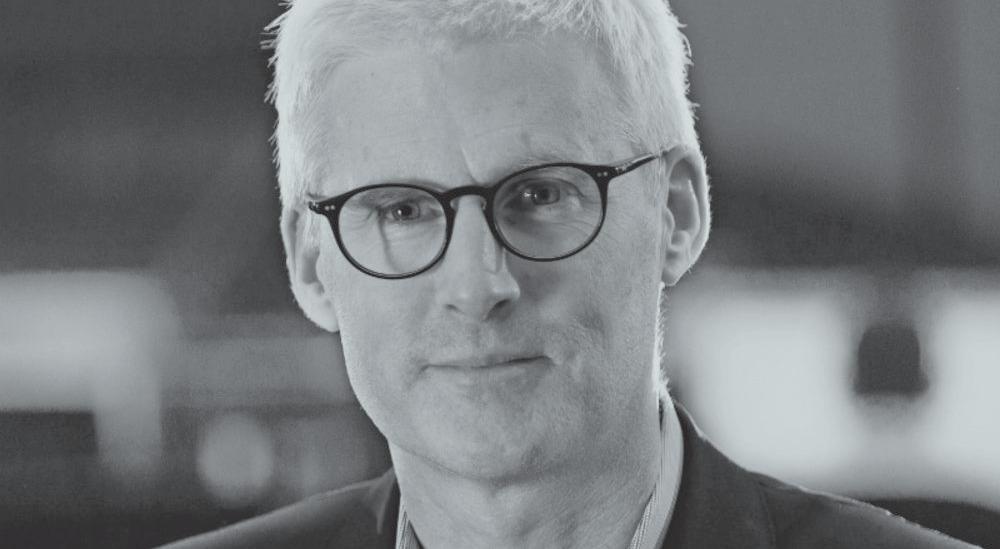
John Treharne, chair, said: “Will brings valuable skills and
experience from customer-led growth in membership businesses, particularly through digital growth strategies, which are perfectly suited to deliver on our strategic ambitions for the business.”
The Gym Group currently operates 230 clubs across the UK.
More: http://lei.sr/Y5B6F_H
Will brings valuable skills and experience from customer-led growth in membership businesses
John TreharnePHOTO: DELOITTE PHOTO: LINKEDIN/WILLIAM ORR PHOTO: LIZ TERRY PHOTO: THE GYM GROUP David Stalker chaired the EHFF Orr joins the listed fitness operator from Times Media
Overall physical activity levels among adults in England have returned to pre-pandemic levels, being in line with 2018-19 and above 2016 numbers.
According to the latest Active Lives report, from Sport England, nearly two-thirds (63.1 per cent) of the adult population were classified as ‘active’, undertaking at least 150 minutes of moderate-intensity physical activity each week, during the period between November 2021 and November 2022. A further
The number of adults taking part in fitness activities has seen significant rises
11.1 per cent classified as ‘fairly active’ at 30 - 149 minutes a week.
The types of activities people are undertaking were also researched.
Going to the gym and other fitness activities have seen significant rises over the last 12 months, up from 11.4m in November 2021 to 12.5m in November 2022, although both

remain below their pre-pandemic levels, with fitness down by 1.4m when compared to Nov 18-19.
Huw Edwards, CEO at ukactive, said: “The findings show the essential role of gyms in driving the recovery in physical activity levels.”
More: http://lei.sr/n4y8q_H


Fitness First UK has confirmed to HCM that it’s in the process of restructuring, citing rising costs and working from home which has undermined some of its city centre clubs.
The company is working to renegotiate rents and considering a reduction in the number of clubs. Fitness First recently closed its London Bridge club, transferring members to nearby locations.
A spokesperson for Fitness First Clubs Ltd, told HCM: “While many of our clubs are performing well, with hybrid working continuing across the country there are fewer people using some of our city centre facilities and this has had a financial impact on the business.
“As a result, we’re working closely
Fitness First currently has around 43 clubs in its portfolio members will not be affected.”
with our landlords, creditors and shareholders to secure the long-term future of our clubs. We’re confident this plan is the best way to ensure a sustainable future for the company.
“Our clubs remain open as normal during this time and
Fitness First has around 43 clubs and lost £2.48m in 2020 and £23m in 2021, due to the pandemic, against a profit of £7.6m in 2019.
More: http://lei.sr/t4w5B_H
The findings show the essential role that gyms play in the recovery in activity levels
Huw EdwardsPHOTO: FITNESSFIRST.CO.UK PHOTO: SHUTTERSTOCK/SEVENTYFOUR PHOTO: UKACTIVE
Asia Pacific-based fitness franchise, BFT (Body Fit Training), is joining forces with one of Europe’s largest fitness races, Hyrox, as part of a partnership that will see the two companies strengthen their presence in each others’ geographical markets.

As part of the deal, BFT clubs will become the exclusive training centres for the delivery of Hyrox training programmes in Asia Pacific, adding Hyrox-specific training programmes to its weekly programming at all 240 of its studios.
In return, the collaboration will help drive BFT’s brand awareness in Europe, as the company looks to secure a foothold in the potentially lucrative European market. Hyrox athletes will also be
We can’t wait to see the positive growth from this partnership for both brands
Cameron Falloon
encouraged to become members of their local BFT clubs.
Cameron Falloon, founder of BFT, said: “We can’t wait to see the positive growth from this partnership for both brands, with Hyrox participants training in BFT studios.”
More: http://lei.sr/A2v2j_H
Everyone Active has launched an immersive fitness experience at the Queen Mother Sports Centre in cental London.
The operator has partnered with creative agency, Flareform, to provide members a Future Studios space.
Utilising projection mapping technology, Future Studios offers members a 360-degree sensory journey combining light and sound.
By projecting images on all walls, the technology allows a space to be transformed into any environment

– from a Japanese dojo for martial arts to a serene, relaxing landscape perfect for yoga and meditation.
The Future Studios space launched on 24 April.
Andy Davison
Everyone Active’s area contract manager, Andy Davison, says the opening is part of the company’s “continued drive to innovate in the fitness space”.

“The central location of Queen Mother Sports Centre lends itself to showcasing this new technology,” Davison said.
“We have a fantastic relationship with Flareform and we’re privileged they’ve chosen to launch this innovative new technology at our site.”
More: http://lei.sr/c4f9E_H
The launch is part of our continued drive to innovate in the fitness spacePHOTO: BODY FIT TRAINING PHOTO: EVERYONE ACTIVE/FLAREFORM PHOTO: BODY FIT TRAINING PHOTO: LINKEDIN.COM/ANDY DAVISON BFT currently operates 240 studios The technology allows a space to be transformed into any environment
Fitness operator, World Class Romania, has opened a new flagship health club called Campus 6 and announced ambitious expansion plans.

Located in a business hub close to Politehnica University in the capital, Bucharest, the new club houses a large gym floor, as well as group fitness and cycle studios.
Its signature space is a 260m-long rooftop running track – the first of its kind in Romania – offering 360-degree views of the city.
Kent Orrgren, CEO of World Class, said the opening is part of the group’s plan to speed up expansion, “We’re aiming to double our total number of clubs in the next five years,” he told HCM. “Our ultimate goal is to change Romanians’ lives for the better with a diversified offering of health and fitness services. Expanding our health and
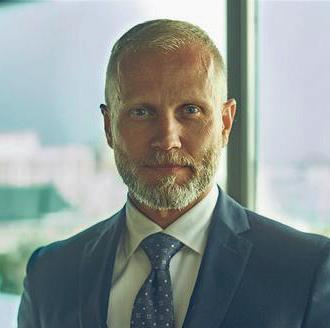

fitness network in strategic locations, close to where people live and work, remains one of our main objectives”. World Class operates 44 clubs and 23 pools throughout the country and has more than 76,000 members.
● See our interview on page 14.
More: http://lei.sr/S5a2y_H
Life Time has added two regional lifestyle clubs to its growing US portfolio of sites, which currently runs to 234 locations open or pending.
Life Time has secured long-term leases with RMR Group for the Harbour Island Athletic Club in Tampa, Florida, and the Athletic Club Northeast in Atlanta, Georgia.

The two clubs closed earlier this year and will reopen as Life Time athletic country clubs in the coming months.
Once the properties reopen, they will offer Life Time’s ‘Healthy way of life’ programmes. Further details of the exact facilities and services are set to be revealed at a later date.
Parham Javaheri, Life Time’s chief property development officer, said:
Life Time more than 30-year track record of building and operating resort-like destinations
“Life Time has a more than 30-year track record of building and operating large, resort-like destinations including mall redevelopments, and vertical residential projects – as well as capitallight growth opportunities through strategic acquisitions such as this.”
More: http://lei.sr/n9R2D_H
We’re aiming to double our total number of clubs in the next five years
Kent OrrgrenParham Javaheri PHOTO: LIFE TIME PHOTO: WORLD CLASS PHOTO: LIFE TIME PHOTO: WORLD CLASS
Premier hosted buyer event connecting owners and operators from Europe’s top health, fitness, and leisure clubs and hotels with executives from global supplier companies innovating the fitness industry through pre-scheduled one-on-one meetings, education, and networking.
10-13 October 2023 •


Le Méridien Lav, Split a stylish, modern, luxurious resort perfectly located to explore the Croatian coast. Situated 8 km south of Split in Podstrana on the Dalmatian Coast, Le Méridien Lav, Split, enjoys a beautiful beachfront setting with fantastic sea views across to the city and surrounding islands. Its elegant guestrooms, wide choice of restaurants, spacious meeting space and, a world-class spa make this five-star resort the perfect choice for W3Fit.
Well organised and hosted event that will undoubtedly become a showpiece networking event for the fitness industry going forward. Excellent breadth of suppliers which will likely lead to exciting new partnerships for us.
Buyer: Adam Watson, Nuffield Health
As a supplier, getting quality time with industry buyers is key, and W3FIT certainly provided that. Three days packed full of meetings and networking opportunities with new and existing customers has left me with lots to follow up on. Would highly recommend it.
Supplier: Luke Januszek, Escape Fitness
David Zarb Jenkins Co-founder, W3Fit EMEA +356 99448862david@weworkwellevents.com
www.weworkwellevents.com
• www.w3fit.com
Xponential Fitness is launching its digital platform, Xponential+, on all LG Electronics
Smart TVs globally.
Described as a landmark deal, the partnership means that Xponential+ app’s live and on-demand classes will be available in more than 250 countries through the LG Content Store.
Xponential+ is at the forefront of providing an exceptional omni-channel user experience
Xponential+ was launched in May 2022 and its programming features the franchised fitness giant’s family of brands – including Club Pilates, Pure Barre, CycleBar, StretchLab, YogaSix, Row House, Akt, Stride Fitness, Rumble Boxing and BFT. Classes are designed from beginner to advanced levels.

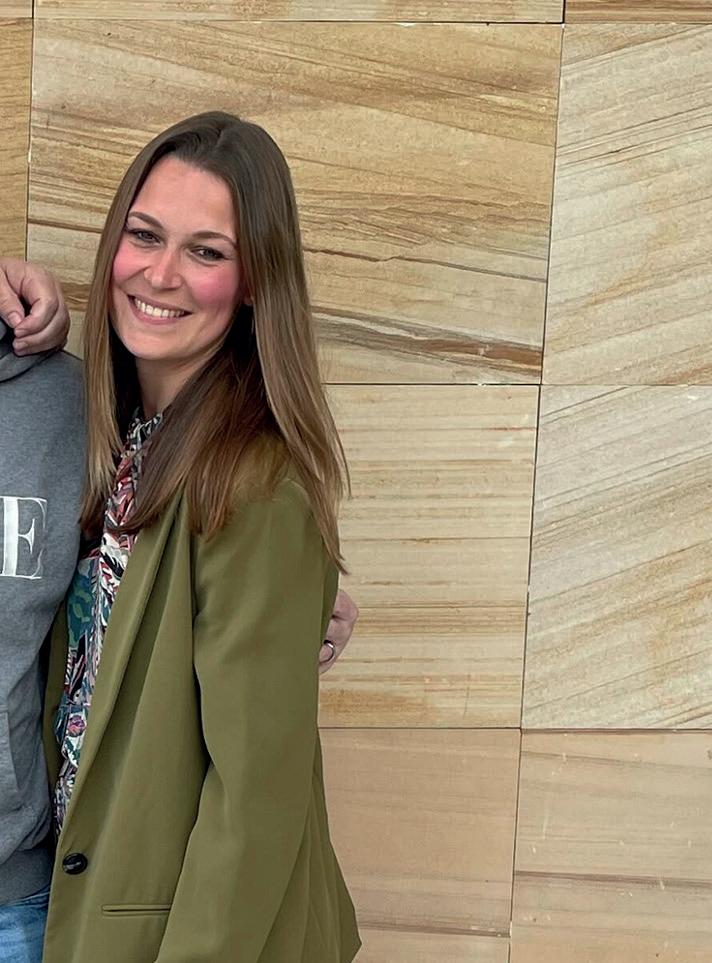
The move is part of Xponential’s
efforts to utilise and expand B2B partnerships in order to grow the reach of each brand in the portfolio.
Garrett Marshall, president of fitness streaming for Xponential, said: “Xponential+ is at the forefront of providing an exceptional omnichannel user experience.”
More: http://lei.sr/4v3m5_H
Gympass has signed a global partnership with fitness tech firm Magicline, which will see the aggregator strengthen its power over the check-in and class booking process.
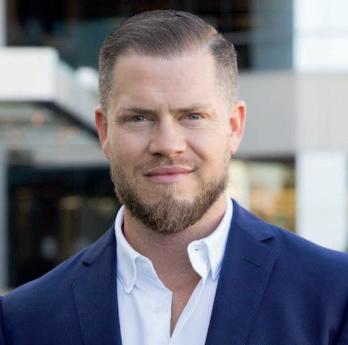
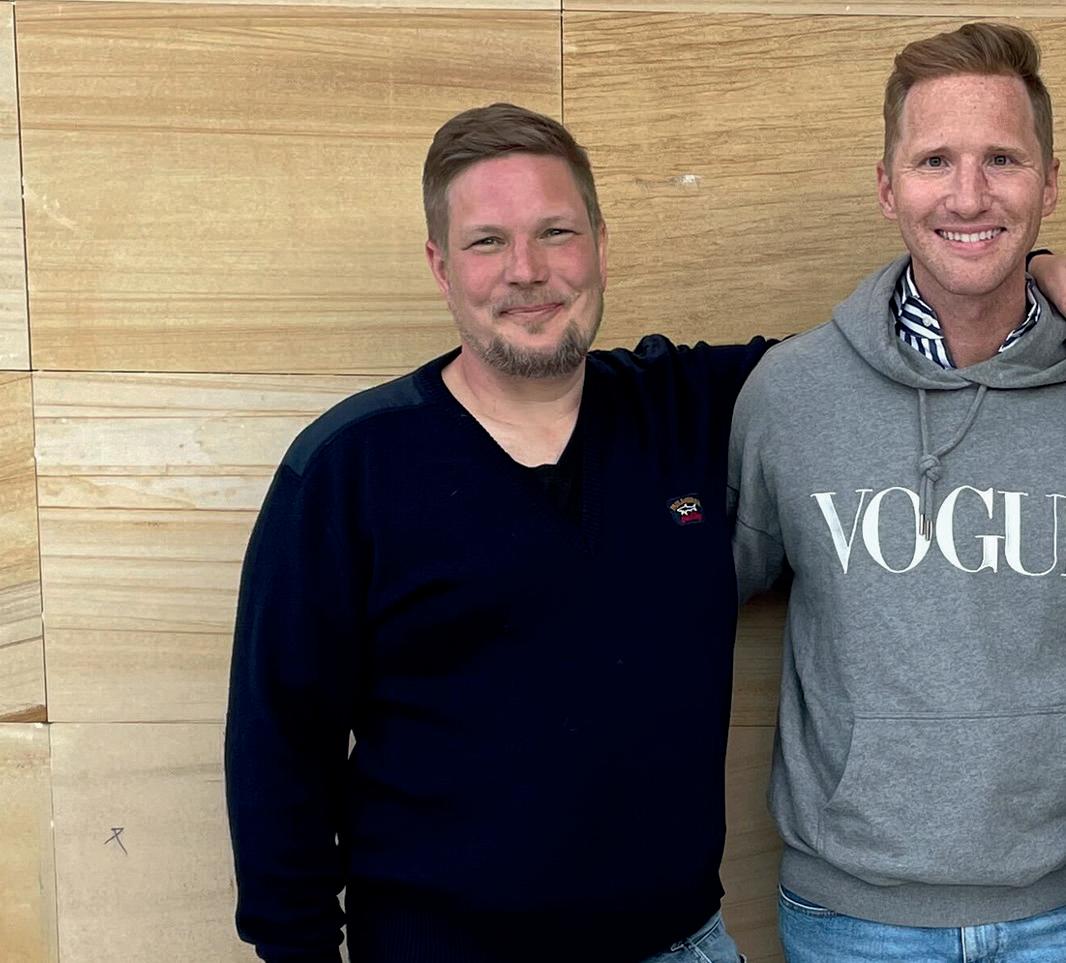
Magicline provides gym management software and its interface enables studio visitors to check in through automated validation – a process designed to reduce the efforts required by gym staff.
It also deals with class bookings, allowing users to view class schedules,
access details about specific classes, visualise class times, and book and cancel classes for users.
Partnering with Gympass is an important step towards our goal of enhancing customer experience
This means that, through the synchronisation of class schedules between Magicline and Gympass, Gympass members can be notified of class schedule changes.
Nicolas Festl, group product manager at Magicline, said: “Partnering

with Gympass is an important step towards our goal of providing gym owners and managers with a streamlined, user-friendly platform that enhances the customer experience.
“It creates a more convenient check-in process and allows us to streamline the class booking process.”
More: http://lei.sr/2S5s4_H
NicolasFestl PHOTO: LINKEDIN.COM/ GARRETT MARSHALL PHOTO: GYMPASS/MAGICLINE PHOTO: XPONENTIAL/LG PHOTO: LINKEDIN.COM/NICOLAS FESTL Xponential+ will be made available on all 4K and 8K LG Smart TVs


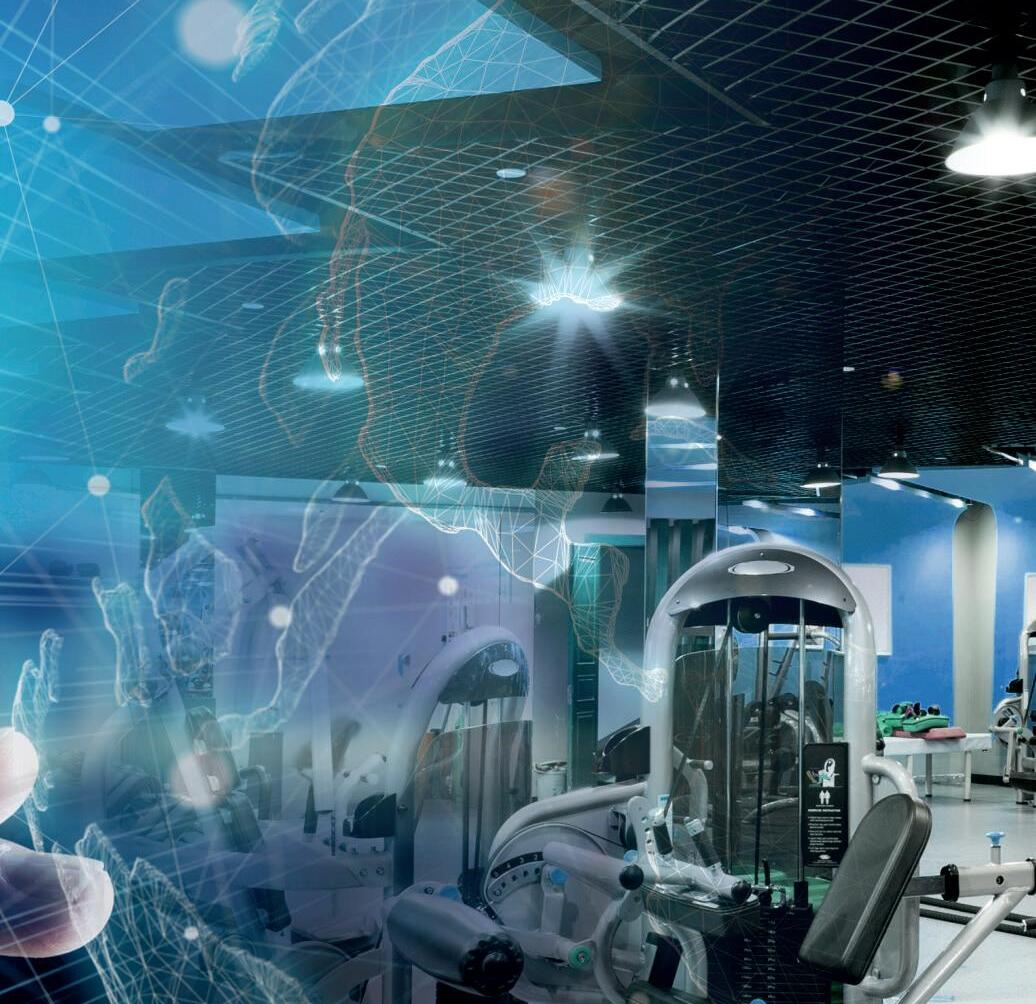
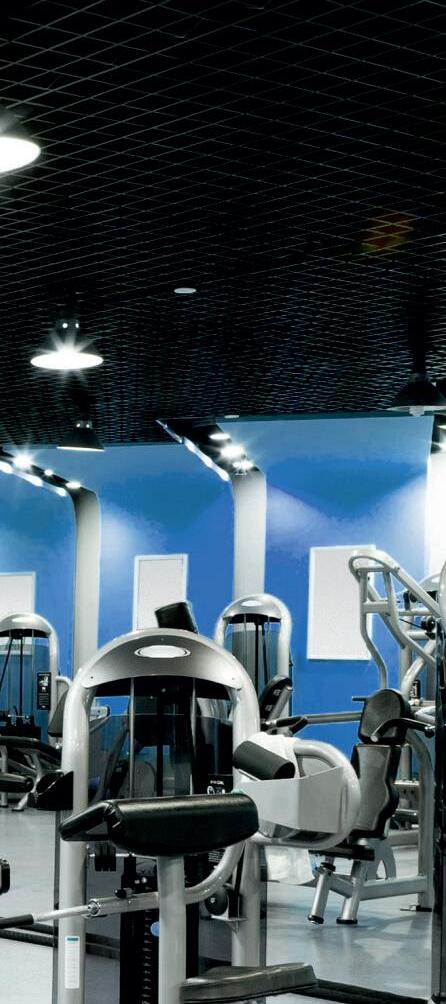




Marvel is launching a new fitness adventure app, allowing people to take part in workouts next to heroes such as Thor, Wolverine and Hulk.
The entertainment giant has partnered with Six to Start –creator of the popular fitness game, Zombies, Run! – to create a narrative-led fitness experience.
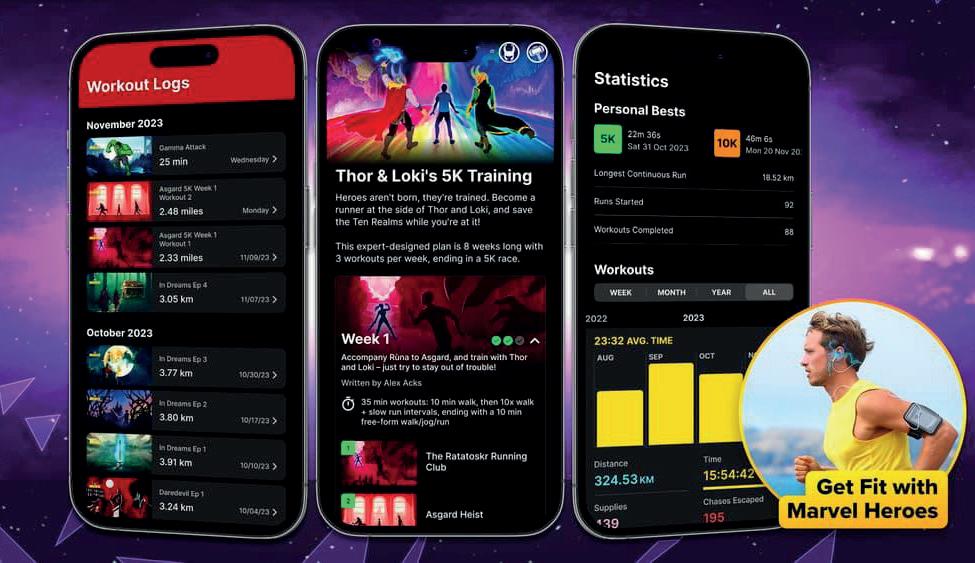
Set to launch later this year (2023), Marvel Move will offer a running adventure which will merge entertainment with
The immersive, narrative-led fitness experience will launch later this year
exercise through characters from Marvel’s cinematic universe.
With regular new workouts and ongoing storylines, users of all abilities can choose to walk, jog, or run through interactive audio narratives that will transport runners into the Marvel Universe. The Marvel-based storylines will place
the exerciser as the main character and users will have full control over the time or distance of their runs.
Adrian Hon, CEO and co-founder of Six to Start, said: “There’s nothing more motivating than combining exercise and storytelling.”

More: http://lei.sr/y8V6e_H
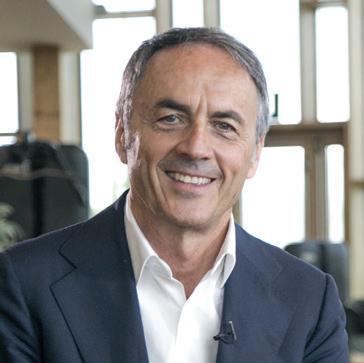
Technogym is making its Mywellness Ecosystem accessible on any connected equipment – from any manufacturer.

The move means operators who offer Mywellness will be able to plug the service into any equipment with the Bluetooth Fitness Machine protocol, with the data then collated by Mywellness.
Announcing the Technogym Ecosystem Open Platform Strategy, Nerio Alessandri, founder and president, said: “The Technogym Ecosystem is an existing open platform that can be easily integrated with software applications – such as membership software, marketing and payment platforms, body analysis and assessment devices. It can now also be integrated with fitness and
Mywellness can now be integrated with fitness equipment from any manufacturer
Nerio Alessandrihealth club equipment from any manufacturer, as well as consumer apps and wearable and mobile devices.
“We’ve been investing in this unique digital ecosystem for years, with the objective of growing the industry,” he said.
More: http://lei.sr/s3Y3G_H
There’s nothing more motivating than combining exercise and storytelling
AdrianHon PHOTO: TECHNOGYM PHOTO: MARVEL PHOTO: TWITTER.COM/ADRIAN HON
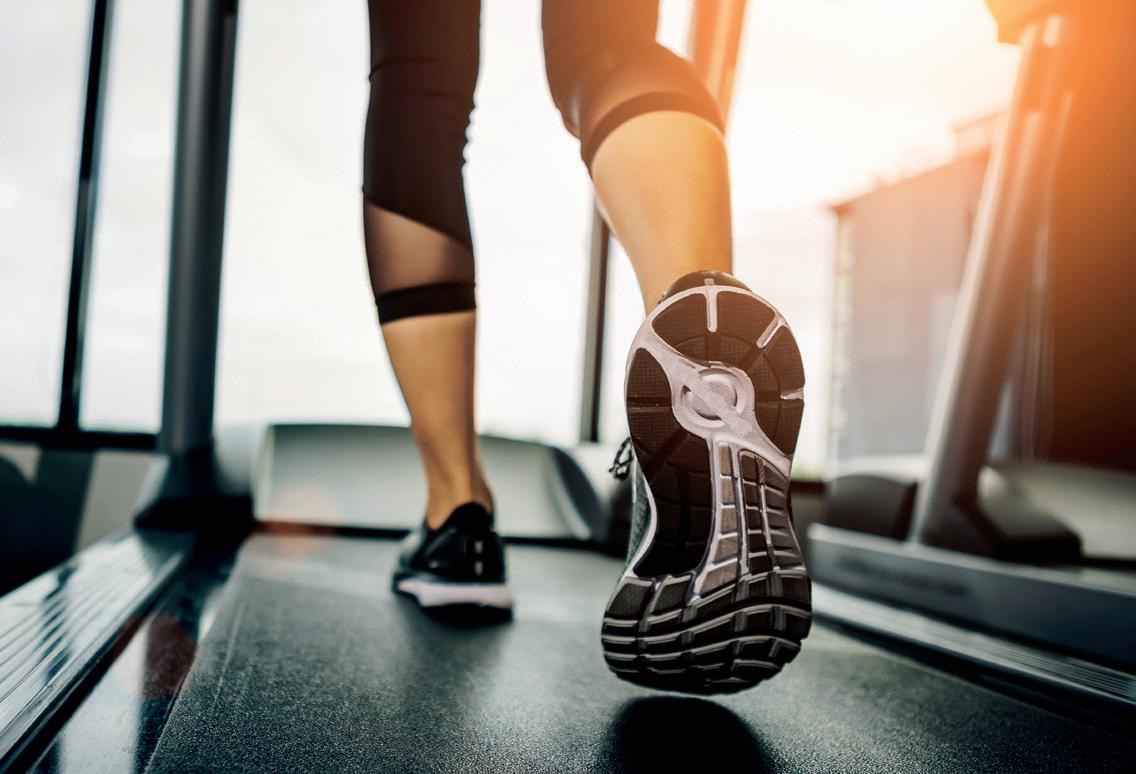
Noise and vibration control specialists:















Resilient floor coverings for free weight and functional training areas.
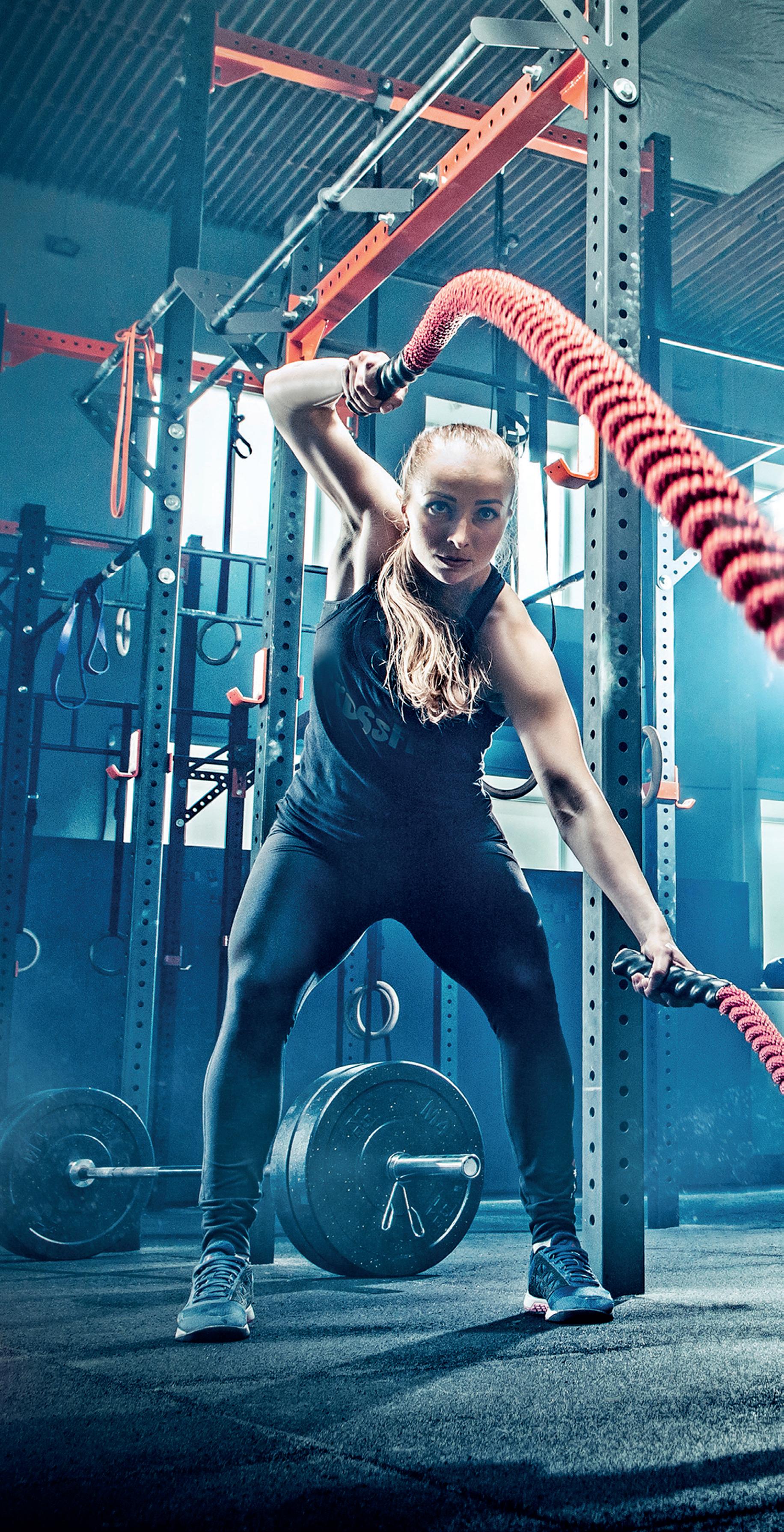
Mixed cellular PU elastomer underlays. Isolated floated floor systems.


Treadmill isolation pads.
Impact absorbers for fixed-pin machines.
Resilient washers.
Acoustic hangers, baffles, rafts and wall panels.
As Technogym celebrates its 40th anniversary year, Liz Terry talks to its founder and president
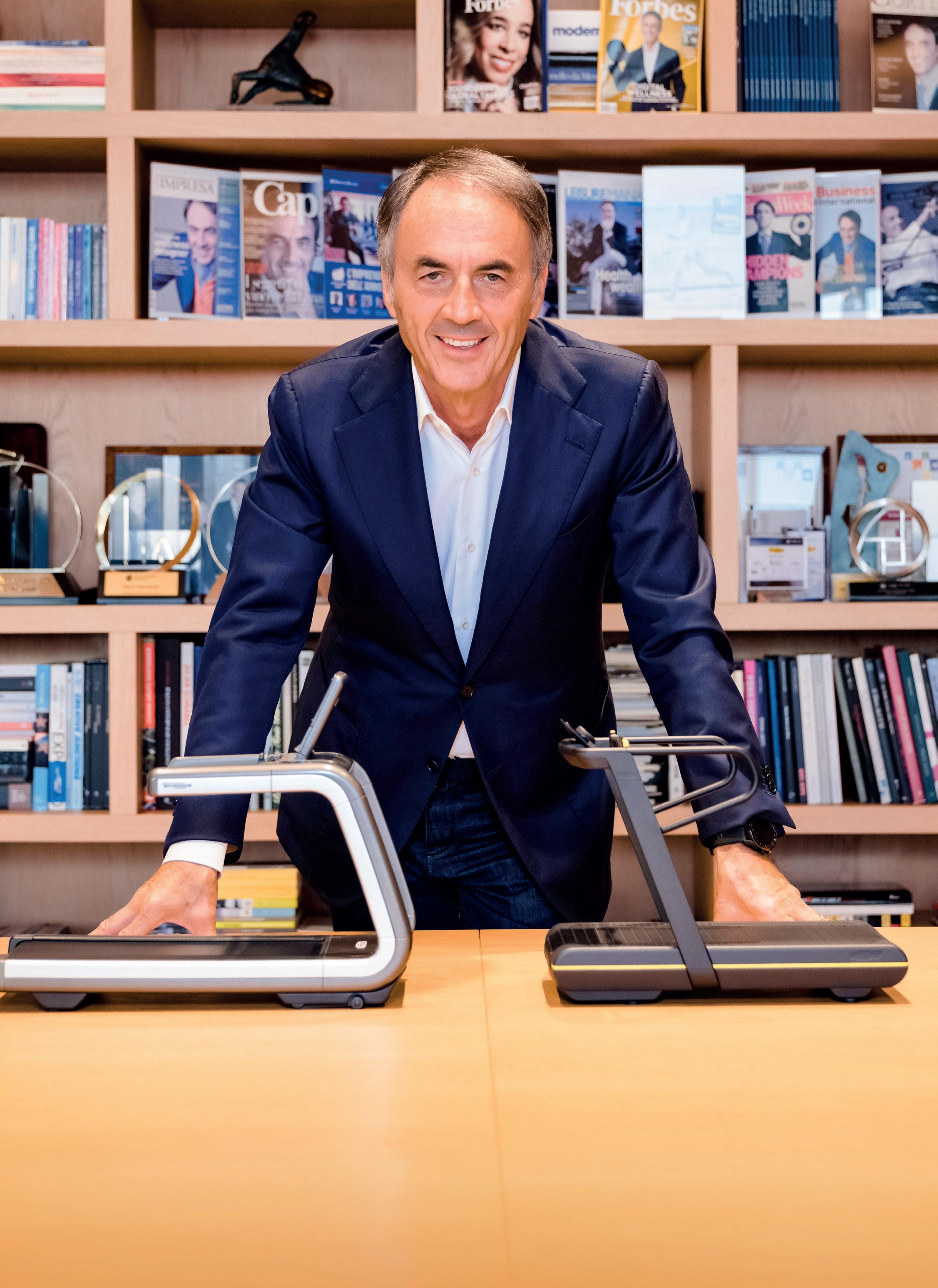
Technogym launched in 1983. How did you get it off the ground?
I founded Technogym in my garage with a dream but no financial resources, so the biggest challenge at the outset was to find the funds to grow the company.
Innovation was the way we overcame this difficulty: developing products that were so innovative and desirable that customers were willing to pay in advance for them.
This is the learning we’ve been applying ever since: innovation and speed have always been our way to overcome challenges.
You’ve always put design at the heart of everything you do. What value does it deliver?

I’m a designer myself, which is why I believe in the value of style and design to offer consumers not only a functional experience, but also an emotionally engaging one.
Design represents a huge added value – both in terms of product design and our interior design service – for operators to make their facilities even more attractive and to support them with engagement and retention by enabling memorable training experiences.
What R&D are you working on that you can share?
We’ve been investing for years in a unique digital ecosystem, with the aim of growing the industry, making it more attractive to end users and more credible in the eyes of institutional stakeholders, such as insurance companies, health professionals and the wider medical world.
The vision –helping people live a better life through wellness – will never change
Innovation has always been the engine behind our growth, but it didn’t come overnight.

In 1996 we launched the first software in the industry, then in 2003 the first TV screen builtin to the equipment. In 2007 the first internet connected equipment, in 2012 the first cloud platform to deliver wellness on-the-go and more recently our Technogym Live platform, featuring live and on-demand video workouts, which are available on the equipment and via our app.
Today, this Technogym Ecosystem – our open platform – can connect users to a personalised training experience anytime, anywhere. It can also be integrated with software applications such as membership software, marketing and payment platforms, as well as body analysis and assessment devices.
Additionally, Mywellness – the CRM component of the ecosystem – enables operators to accelerate their digital strategy, improving the user experience and increasing ROI, thanks to a focus on attraction, retention, upselling and secondary spend, enabling them to manage their business end-to-end.
At FIBO this year we launched as an open platform, meaning the ecosystem will now integrate with any brand of fitness equipment, not just our own.
Our goal is to keep innovating with new products, such as AI-based digital services and training formats to help operators attract and surprise their users with variety and personalisation.
We launched our “wellness-on-the-go” strategy 10 years ago, with the goal of offering people a personalised training experience anytime and anywhere: at the health club, at home, in hotels, at the doctor’s and at work, for example.
This functionality represents a great opportunity for fitness operators to create new business in collaboration with the medical or corporate sectors, or to connect with users at home.
At Technogym we strongly believe in the hybrid model. We don’t see home fitness as a competitor for fitness facilities, but as a great opportunity for operators to also connect with their customers when outside the facility and to create additional sustainable business and value.
Home fitness helps users to stick to their exercise habit and stay loyal to the facility in the long-term, because their lifestyle is being fully supported.
The hybrid offering has also driven the launch of our new corporate offering – Technogym Corporate Club.
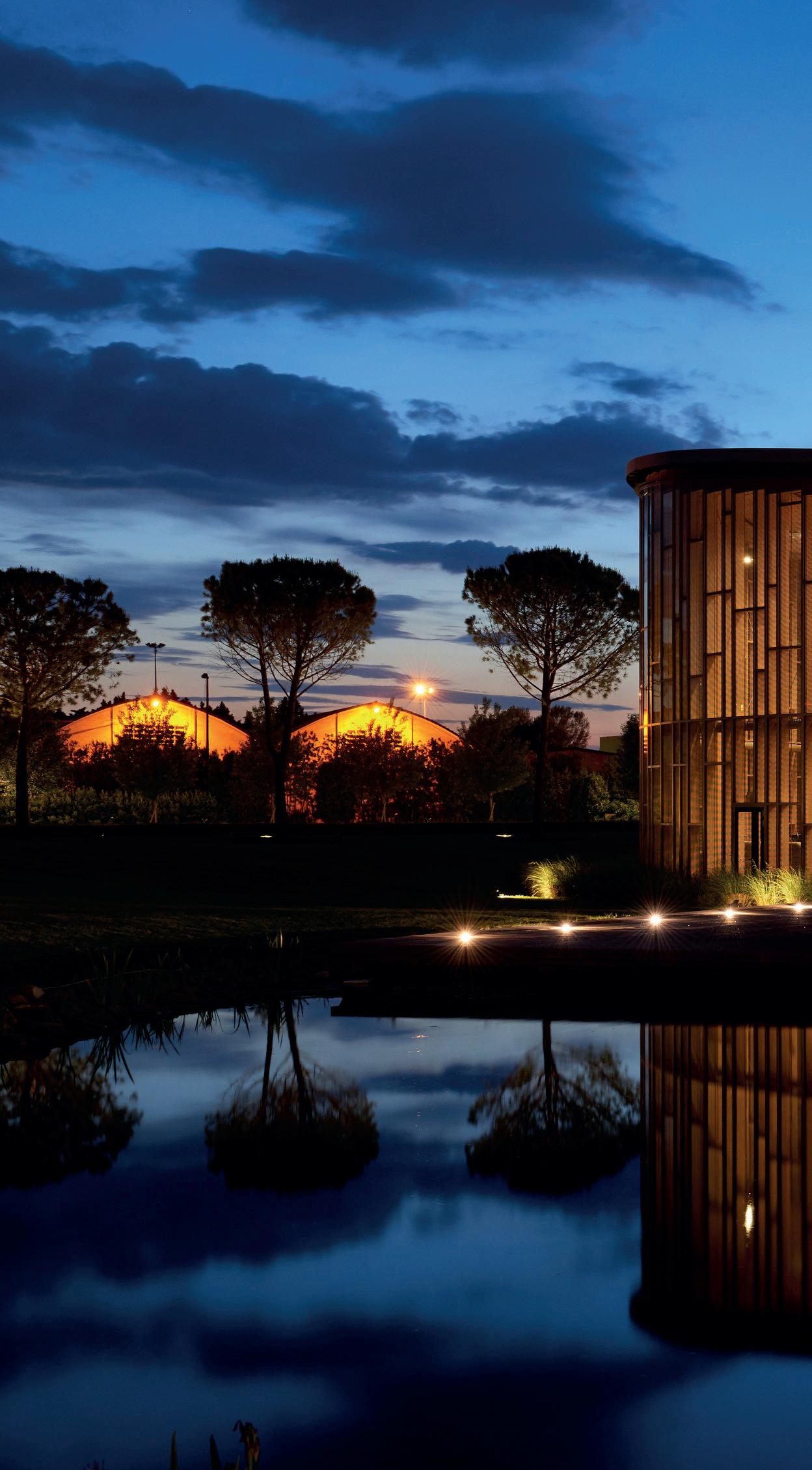
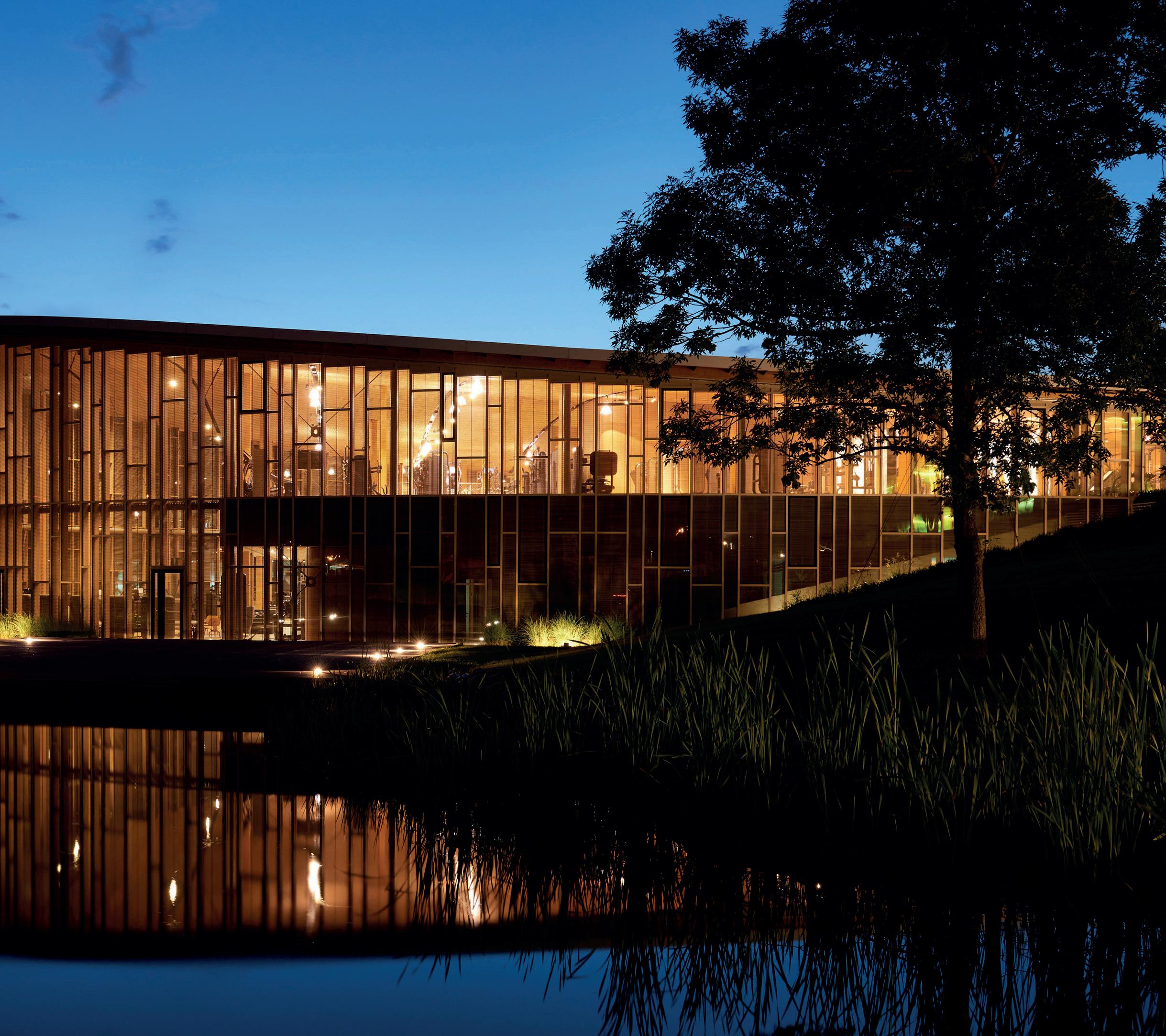

Innovation and speed have always been our way to overcome challengesAlessandri started the company in his garage The Technogym Village was designed by architect Antonio Citterio PHOTO: TECHNOGYM PHOTO: TECHNOGYM

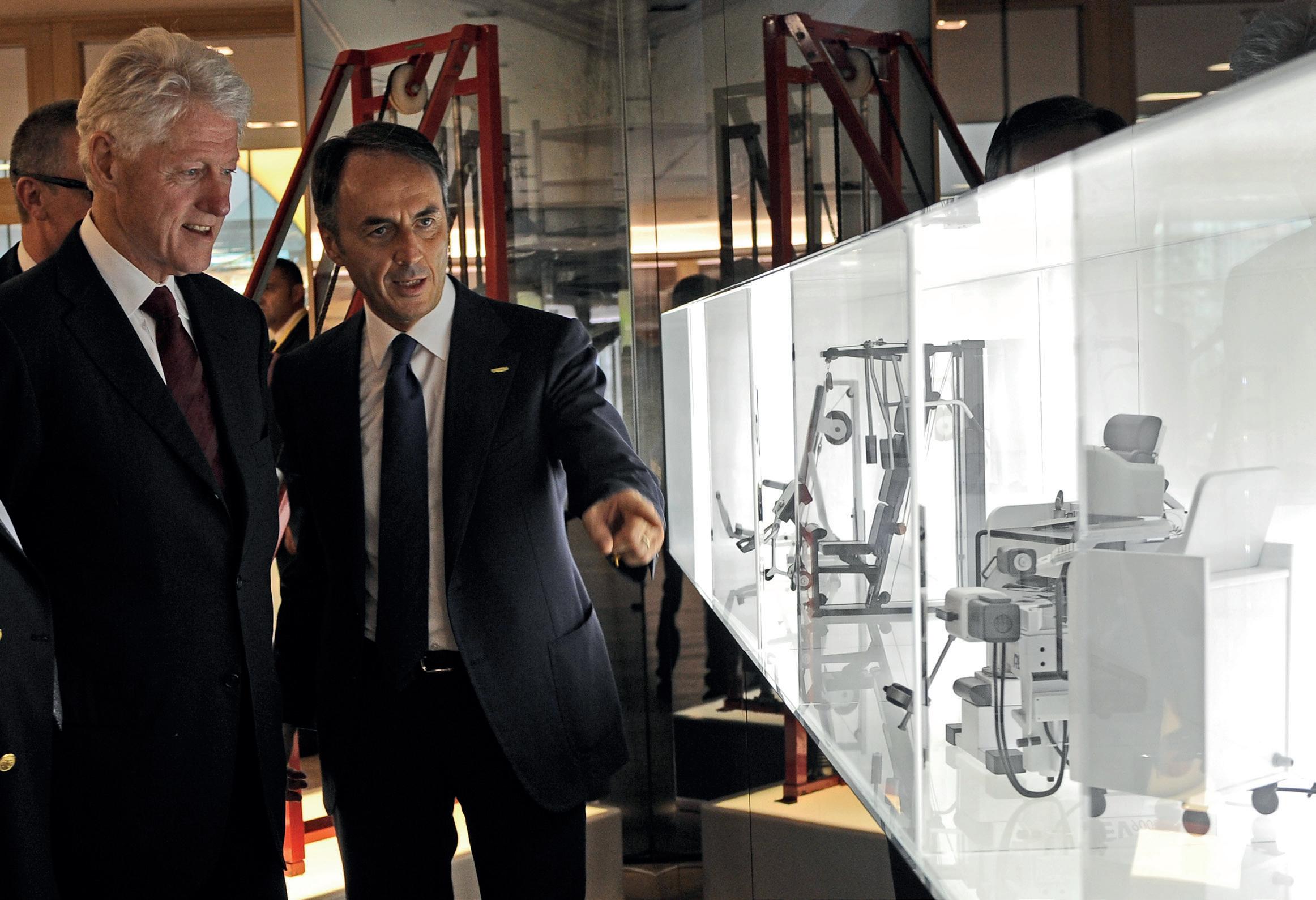 Clients are from the health clubs, hotel, corporate and education sectors
Clients are from the health clubs, hotel, corporate and education sectors
We strongly believe in the hybrid model and don’t see home fitness as a competitor for health clubs
AI is changing many different industries and businesses and is also having an impact on fitness – an industry in which personalisation is crucial.
We’ve been investing in AI for many years and today – as previously mentioned – our ecosystem enables operators to personalise each individual training experience, thanks to a machine learning AI-based system that optimises and adapts the training experience based on individual needs, habits and passions, in order to boost engagement and maximise results.
That can be by suggesting new exercises, programmes and training content based on previous results and habits, or by personalising the user’s training experience on a given day – from the way they’re welcomed, to the progression they’re offered or the mood of the entertainment, for example.
Along with building products, you also embraced the concept of wellness. How did this come about?
In 1993 in a market dominated by bodybuilding and fitness, we launched a new concept we called wellness – a lifestyle that includes regular physical exercise, a healthy diet and a positive mental approach.
Wellness is a profoundly Italian lifestyle rooted in the Roman culture of mens sana in corpore sano (a healthy mind in a healthy body) and on the Mediterranean diet. If fitness targets a small niche of the population, wellness is more holistic and inclusive and appeals to everybody.
The vision – helping people live a better life through wellness – will never change for us. What changes every day is the technology and the way we deliver wellness to make training experiences more personalised, engaging and accessible for everyone –from Olympic athletes to the elderly or beginners.
At the opening of the Technogym Village in 2012 you hosted the entire Technogym family, along with Bill Clinton and the president of Italy. What did that day mean to you?
Of course, the occasion was incredibly memorable and marked a milestone that my family and I are proud of, but for me it was not a point of arrival, but the starting point of our new era.
Technogym was born in my family garage 40 years ago, the Technogym Village is our new ‘garage’ and a physical ecosystem conceived to shape our digital ecosystem and to inspire the entire industry with the culture of wellness.
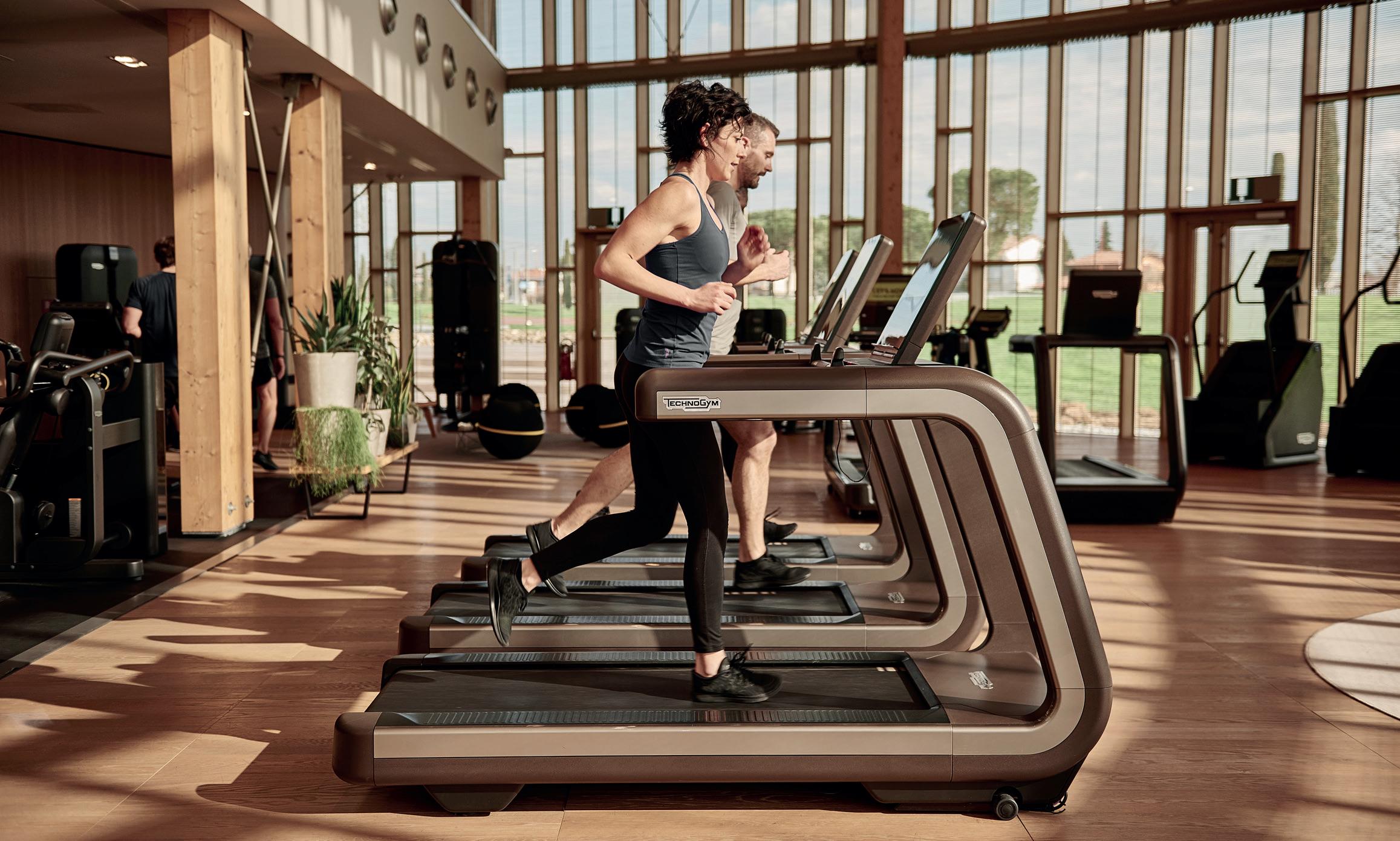
What have been some of the other highlights of the journey so far?
Without doubt our involvement with the Olympic Games. Technogym has been the official supplier to the last nine Olympics. Our relationship with the Olympic Games and sporting champions has been key to the evolution of Technogym – on one side to innovate, thanks to the feedback of the athletes about our products and technologies, and on the other, in terms of communication, to inspire people to move more through the message of the athletes.
Home and hotel fitness help users stick to their regime, while creating loyalty to their club
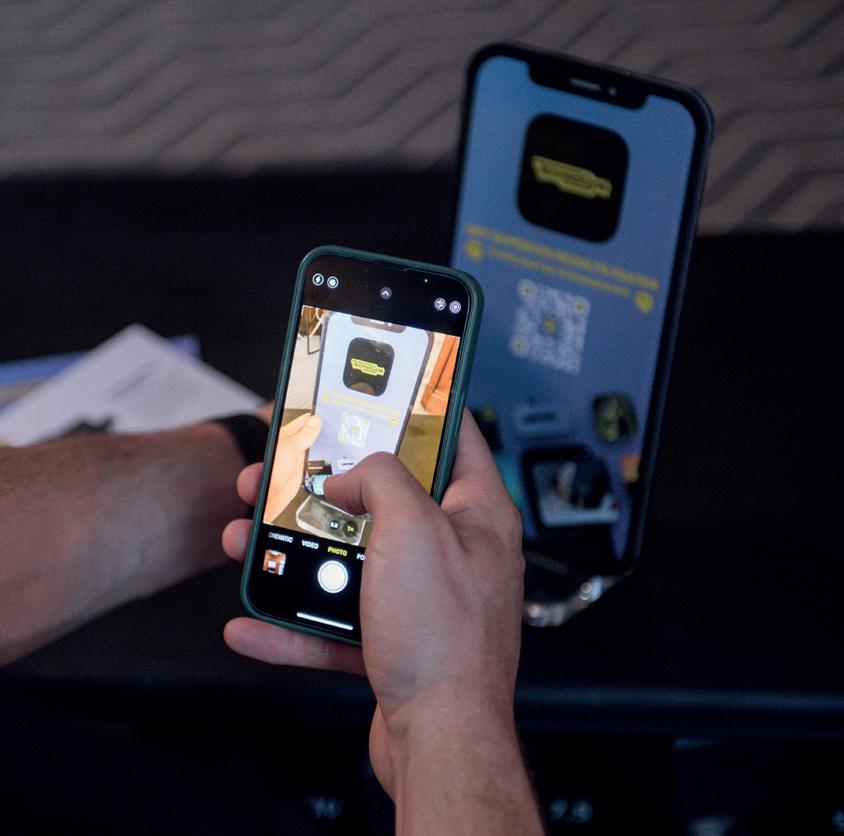

Technogym has also driven the development of the Wellness Valley in Italy – where everyone from schools to health and fitness clubs and businesses are involved with improving the wellbeing of the community. What lessons have you learned from this initiative that you believe can be shared globally?
Our Wellness Valley data – which is collected annually – confirms that investing in wellness and physical exercise for the populations has a strong impact on both public health and the economy.
As the Wellness Valley celebrates its 20th anniversary, the area where it’s located – Romagna – is now way ahead of the national average on important health indicators, including the percentage of the active population (55 per cent vs 46 per cent), sedentary population (16.1 per cent vs. 30.6 per cent) and innovative projects such as Exercise is Medicine.
These results validate the positive outcomes of work and investment on prevention in order to ensure a future for the next generation.
In addition to this insight from the Wellness Valley initiative, evidence from around the world
Global reach. Technogym is present in over 100 countries.
The company has 2,500 direct employees and 5,000 people supporting through suppliers, distributors and partner networks.
150 different models, plus software, apps, services and live and on-demand content.
on the benefits of regular exercise is clear and undeniable. There is no need for more evidence.
The challenge for our industry – and a rigour that will enable us to be credible and more influential – is being capable of delivering the right programmes that lead to the right results and being able to measure the impact. This means continuous assessment, personalisation, checks, feedback and result-tracking.
Tell us about the company’s eco credentials
Wellness has always been our inspiring philosophy and promoting wellness and health is strongly linked with the pursuit of environmental sustainability.
All equipment is produced in Europe, mainly at the Technogym Village in Cesena Italy, where hi-tech and advanced design equipment is made. The Technogym factory in Slovakia manufactures mechanical and strength-based products.
Technogym is a public company, listed on the stock exchange (trading as TGYM). The Alessandri family owns the majority stake.
Revenues in 2021 were €611m, with this increasing 18 per cent in 2022 to €721m. EBITDA in 2022 was €132 million, a 23 per cent increase on 2021 and net profits for 2022 were €66m – up 29 per cent on the previous year. The company paid €50 million in dividends for 2022.
More: www.HCMmag.com/TGYM22
Technogym Village is the world’s first Wellness Campus and besides its design, the company’s sustainability commitment includes a number of actions that generate real change, such as a wellness lifestyle for all, responsible innovation and design and wellness for the community (www.technogym.com/en-US/technogym-village).
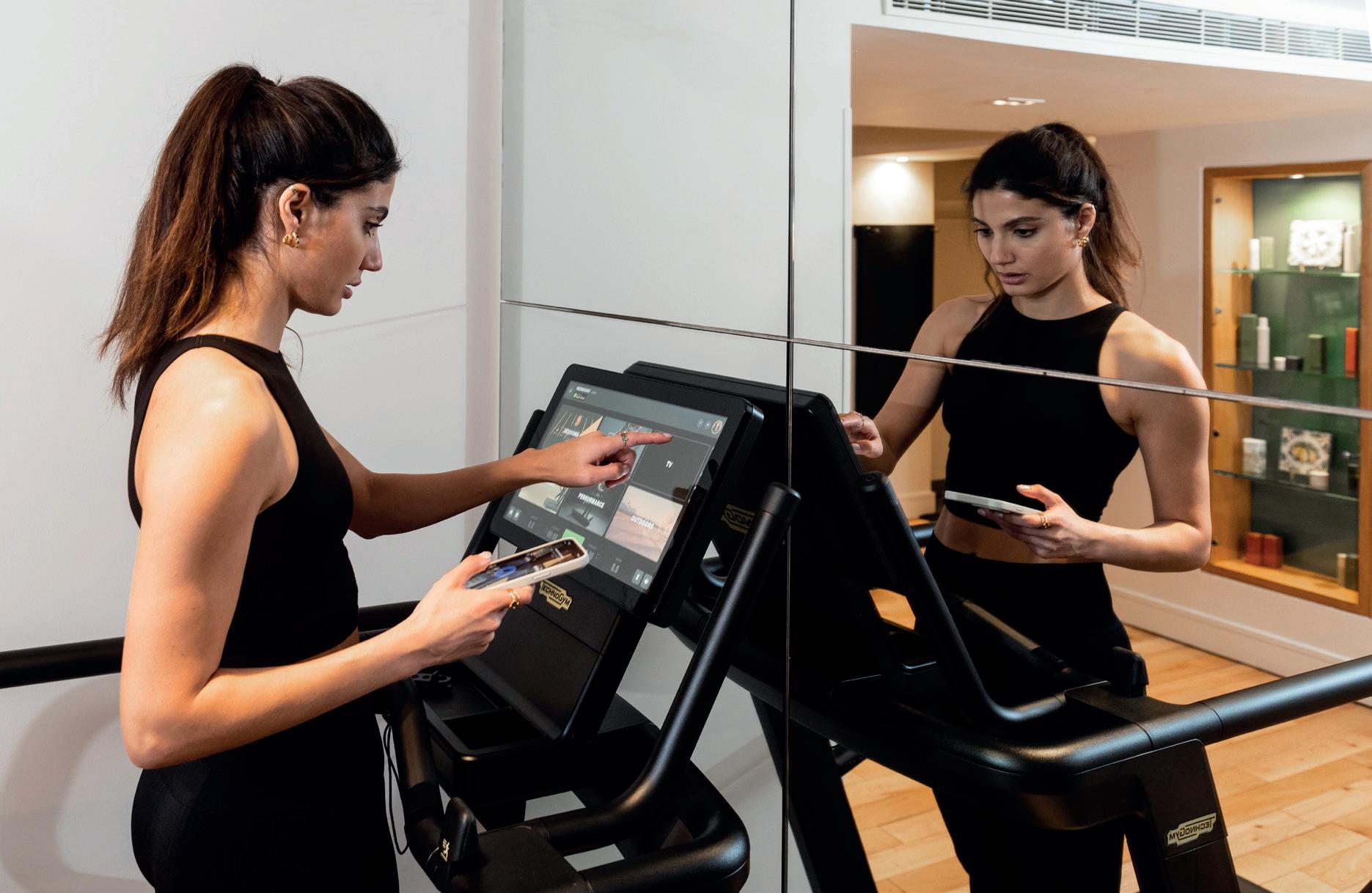
Although not classified as an energy-intensive company, we’ve always been committed to energysaving initiatives. The company conducted energy diagnosis exercises in 2015 and 2018 and also completed the procedure for ISO 50001 certification.
We pay particular attention to regular monitoring and constant improvements when it comes to reducing waste – maximising the use of recyclable components in packaging is one example.
We have an in-house initiative called ‘I am green’ which seeks to reduce plastic waste and foster a strong awareness among staff, through correct waste disposal.
On the product side, our catalogue contains various self-powered machines which are not connected to mains electricity.
The group’s circular economy is enhanced by a refurbishment service, to give a second chance to products at the end of their first lifecycle. As a result, 51 per cent of eligible machines were refurbished in 2019. www.hcmmag.com/TGYMsustain

How can we make wellness more accessible to people on low incomes and those suffering from health inequalities?
By focusing on two areas – on one hand by making more of an impact on public institutions in order
to drive more public investment and attention into programmes that deliver prevention and exercise and on the other, by working to educate people about personal health and wellness, starting with children when they’re at school.
How can we encourage children and young people to invest more time and energy in self-care, so they develop good habits from an early age?
Evidence on the fact that exercise is good for their health is not enough. Beside this rational approach, we need to work from an emotional perspective by making exercise desirable and attractive for children, by adding things such as gamification, socialisation, innovative content and virtual reality.
We need to have doctors prescribing exercise, but to get to this level, we need to be more credible as an industryPHOTO: TECHNOGYM / MATTHEW POVER PHOTO: TECHNOGYM The Technogym Ecosystem connects users anytime, anywhere
How can the industry harness the power of fitness to improve the health of people around the world?
Our industry has huge potential in this regard and a critical role to play. Wellness is a key priority for people now, more than ever, but in many cases, the medical community is not leveraging our industry as an opportunity.
We need to have doctors prescribing exercise, but to get to this level we need to be more credible as an industry and quality and personalisation are key enablers.
Another great opportunity for health club operators is sports performance – attracting users that mainly train outside, but are prepared to pay for training that’s specifically linked to their passion, by offering athletic training programmes in disciplines such as running, cycling and rowing.
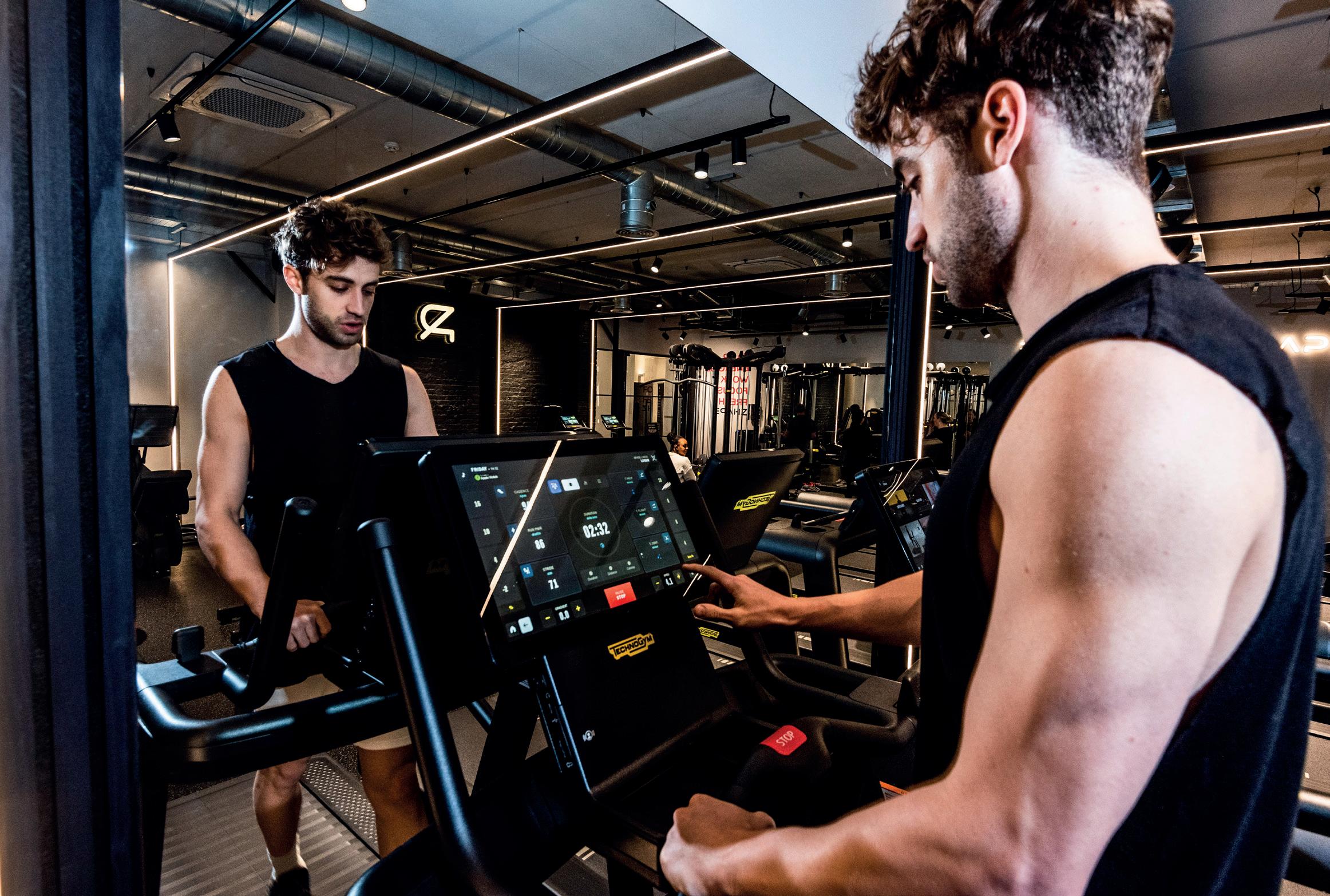
The third opportunity lies with programmes and services related to improving mental health. Today there are approximately 200 million people in the world attending fitness facilities…the potential is tenfold, if – alongside fitness – we attract health-, sport-, and mental health-oriented customers.
Since the start of the pandemic, consumer awareness on the importance of health and wellness has never been so high. The industry needs to manage people
with different needs, goals, and aspirations, so being able to personalise programmes and services will be key.
Looking to the future, I think facilities will be able to compete by focusing on the value of service and experience. Adopting a ‘grow’ strategy (a focus on marketing and pricing to sell memberships, with little focus on service) is not sustainable in the longterm, rather it damages the market, as people buy memberships because they’re attracted by the price and then leave due to the lack of service and quality.
On the other hand, deploying a strategy based on value through delivering on personalisation of service, quality and care for the environment, guarantees long-term retention and profits.
Some call you the ‘Apple’ of the fitness industry. How do you respond?
There are common elements and synergies between the two brands, starting from the origins: both were born in a garage and have always had a strong focus on style and design, while building ecosystems with a focus on customer experience and continuous innovation.
Steve Jobs was an inspiration and I respected his values in business. If I had to pick one to highlight I would say his no-compromise approach. At Technogym we express this with our motto “masterpieces are made of details”. l
In your book Born to Move, you explain your mission to get people to move more. Why is this so vital?
Because, simply put, we are born to move. Our ancestors covered over 30 km per day to live, get food and water. Today, on average, we walk less than 1km a day and the consequences of this are very well known. Non-communicable diseases, caused by unhealthy lifestyles, are the predominant cause of premature death in the world today, and the huge public cost of this is making health systems unsustainable. This is the reason why inspiring the world to move again is critically urgent.
You’ve been awarded many honours. Which means the most to you?
The Best Workplace in the World. I strongly believe that investing in the health of our teams is vital to enable them to be proactive, stimulate creativity and feel good. At our Technogym Village we work to put this into practice every day by offering a dedicated corporate wellness programme personalised to our employees that includes things such as medical screenings, personalised training programmes, a balanced diet through healthy and fresh produce in our restaurant.
Which of Technogym’s achievements are you most proud of?
Having been able to become the brand of reference for the Olympic Games represents our greatest achievement.
What is your own personal fitness and wellness regime?
I’ve always been passionate about sport; I train three or four times a week, alternating at-home training
with training sessions at the Technogym Village wellness centre. I like a variety of activities, from intense sessions to functional work with our Kinesis Personal, to stretching with our flexibility stations. At the weekend, I love to cycle outdoors with my family. Wellness and sport are my passions, but I would add design, architecture and arts to my wellness mix – in a word, beauty.
Tell us about succession planning. Who will take over the business when you retire?
My focus has always been on creating a managerial culture within the company, so it will be able to continue without me. Today we have a strong management team that ensures results and continuity.
Can you explain your investment portfolio?
Technogym remains my family’s biggest individual asset, but through Wellness Holding (our family office) we’ve invested in many different areas, including finance, food and technology, as well as real estate.

What drives and motivates you?
I can answer this with a single word: movement. Movement does not only mean to regularly exercise, but it also means to change, to innovate, to discover and to learn. That’s what drives me every day. l
Wellness and sport are my passions, but I would add design, architecture and arts to my wellness mixPHOTO: TECHNOGYM
Data from the World Bank and OECD shows how health spending across the world correlates with longevity. Kath Hudson looks at how this insight is driving new industry priorities
Figures from the World Bank and OECD for 1970 to 2015
(see page 52) show how health expenditure correlated with lifespan, indicating how effectively different nations are taking care of their citizens.
Political systems can present extreme challenges when it comes to delivering health equality, with the US currently lagging behind many other nations in terms of life expectancy at 78 years against Japan’s 84 – for example – as well as having experienced a dip between 2014 and 2018.
The US challenge goes back to the start of the dataset in 1970, with only Switzerland spending more per capita on healthcare (US$1600+) than the US at this time (US$1400+) for a vastly different population size, with Switzerland achieving a greater lifespan of c73 years for this expenditure vs c71 years for the US.
By 1982, the US had pulled clear of the field in terms of expenditure
to US$2,500 per capital for a lifespan of 74 years while Spain, UK, Ireland and Portugal were the nations at this time achieving the greatest lifespan for the least health expenditure (72-76 years for US$500 - US$1000).
Life expectancy across the world continued to rise throughout the period, with spending by governments on healthcare also increasing. By 2015, governments were able to buy their citizens an extra 10 years of life by increasing annual health expenditure from US$900 to cUS$4,000 per capita, as this led to an increase in lifespan from c72 years to c82 years.
By 2015, the US had also gained outlier status for all the wrong reasons, as health expenditure had increased to around US$9,000 per person with average age remaining stubbornly at around 78 years against a large cohort of nations that sat in the 82-84 age bracket for far lesser levels of
expenditure – average US$3,000. Nations achieving this in 2015 included Japan, France, Canada, Switzerland, Italy, France, Israel, Luxembourg and Norway.
The fitness industry is lobbying for this health expenditure/longevity data to be correlated with activity levels to create an evidence trail to show how lifestyle interventions can help reduce premature death, while also reducing health expenditure.
Even though some nations are doing better, the World Health Organization says no country has room for complacency. Its figures show 500 million people developing heart disease, obesity, diabetes or other non-communicable diseases (NCDs) attributable to physical inactivity, between 2020-2030, unless governments are successful in encouraging more physical activity.
People must be mobilised into activity, but how can we convince governments our sector is part of the solution? We ask the experts…

More money is spent on healthcare in the US when compared to other wealthy countries, but with vastly inferior outcomes (see interactive table on page 52).
Alarmingly, even before the pandemic, life expectancy in the US was falling, with an increase in ‘deaths of despair’ – a term coined by Nobel economist Angus Deaton and his wife, the economist Anne Case, to describe deaths by suicide, drug overdose and alcoholic liver disease. One can say these deaths reflect a crisis of wellbeing among a wide segment of Americans.
Volumes have been written about what’s wrong with the US health system and its unsustainable costs to society – from its reliance on the for-profit healthcare market and employment-based coverage, to the focus on acute care versus primary care and prevention and disinvestments in its public health infrastructure. These factors, combined with runaway drug prices, have made the US unprepared to deal with its ageing population, rising levels of chronic disease and declining mental health. Unfortunately, the rise in chronic disease and mental health problems is a global phenomenon that goes with stressful modern living. Many live and work at a fast pace while not getting enough natural movement throughout the day. They consume too much processed food, sleep too little and cannot find time and energy to exercise consistently. We spend too little time in nature and too much time on our screens, yet find it harder to make meaningful connections.
If we continue along this path, no matter how much we spend on healthcare, we’re merely fixing what we have broken: our bodies and our minds.
The physical activity sector is uniquely positioned to help reverse this trend – to help us keep our bodies and minds healthy. With government funding and support, physical activity-related companies could expand their offerings to reach a wider target population, including seniors, low-income people, and those with disabilities and health conditions. They could help promote the concept of exercise as medicine – that exercise is integral to treating many chronic conditions – and partner with health professionals to deliver appropriate exercise programmes.
Operators could also help educate governments and increase consumer awareness that exercise not only supports physical health, but also brings mental health benefits, and offers the opportunity to find purpose and community. All of these investments would save public and private health spending over the long term.


If we continue along this path, no matter how much we spend on healthcare, we’re merely fixing what we have broken: our bodies and our mindsOphelia Yeung The sector can promote exercise as medicine PHOTO: SHUTTERSTOCK/ JACOB LUND
The US spends more per capita on healthcare than other industrialised nations, yet US life expectancy is among the lowest (see table 1). There are many factors which differentiate the American situation from the other countries it is being compared with.
Nutrition for one. A study published in the Journal of Nutrition in February 2022 examined the amount of energy, sodium, sugar, and saturated fat consumed by American adults as junk food. From two nationally-representative surveys of food intake in 10,000 US adults, junk food provided approximately half or more daily energy and food components in the diet of US adults.
Researchers have found junk foods, with their lack of micronutrients and harmful fats, can reduce neuroplasticity, the process that allows our brains to store our experiences as memories, and can cause obesity, diabetes and heart disease.
Access to healthcare according to ethnicity and race is another issue. As of November 2021, American Indian and Alaska Native, black and Latino people had all suffered from higher rates of hospitalisations and deaths related to COVID-19 compared with white people. The US Centers of Disease Control and Prevention says these inequities largely result from racial and ethnic minority populations’ inequitable access to healthcare.
Gender is also a significant factor in access to healthcare. Across the country, poor women still face significant challenges when it comes to getting the care they need. More than 16 million women lived in poverty in 2016; 21.4 percent of black women, 22.8 percent of Native women, 18.7 percent of Latina women, and 10.7 percent of Asian women.
The poverty rate for families with children headed by women is higher than those headed by men or those headed by married couples. This makes women particularly vulnerable to healthcare costs. To stay financially secure, women routinely forego needed care and may postpone diagnosis of a serious health problem or go without required treatment.
Pollution is another problem. Researchers from Columbia University’s Mailman School of Public Health examined heavy metal contamination of US drinking water and found that areas with higher proportions of Hispanic/Latino and American Indian/Alaskan


Native residents were associated with significantly higher arsenic and uranium concentrations.
The December 2022 study also found that greater proportions of Black residents were associated with higher arsenic and uranium in regions where concentrations of these contaminants are high. These unsafe levels can cause health effects such as cancer, cardiovascular and respiratory disease, and affect brain development and kidney function.
Exercise could help. In addition to the well-known benefits of physical activity in reducing the risk of metabolic disorders such as heart disease, cancer,

Japan is a highfunctioning nation when it comes to longevity
obesity and diabetes, there are well documented benefits to mental health from regular exercise. But, the deep structural issues of racial, gender, nutritional and environmental disadvantage mean that commercial fitness programmes remain largely out of reach for those most in need. Exercise can only be effective in helping to change the direction of the US curves in life expectancy and health expenditures once policies begin reversing embedded structural inequities. Dr Gerard Bodeker is a public health researcher and academic specialising in lifespan wellness and integrative healthcare
Exercise can only be effective in helping life expectancy and health expenditures once policies begin reversing embedded structural inequitiesFiona Bull Head of

When the World Health Organization launched the Global Action Plan on Physical Activity (GAPPA) 2018-2030, governments committed to encourage and support communities to be more physically active. They recognised that regular physical activity and sport is good for hearts, bodies, and minds, and helps to decrease a range of NCDs, which place an
WHO recommends five actions to enable policy implementation to promote physical activity
All relevant government departments recognise their contribution to increasing physical activity and reinforce a joined-up approach
Ensure physical activity is embedded in all relevant policies: facilitate implementation with simple tools and guidance and strengthen multi-sector training
Establish national coordination mechanisms to provide direction and oversight of the national agenda on physical activity, including all stakeholders
Ensure data systems are aligned and provide tracking of policy implementation, as well as participation levels
Identify and secure sustainable funding and align with needs to ensure sustained national policy commitments
enormous economic toll on public health systems. As a result, a global pledge to increase physical activity by 15 per cent by 2030 was part of the commitment to carry out policy recommendations contained in GAPPA.
Five years on, data from 194 countries in The Global status report on physical activity 2022, revealed that while some gains have been made, progress is slow and uneven. Less than 50 per cent of countries have a national physical activity policy, of which less than 40 per cent are operational. Only 30 per cent of countries have national physical activity guidelines for all age groups.
While nearly all countries report a system for monitoring physical activity in adults, 75 per cent of countries monitor physical activity among adolescents and less than 30 per cent monitor physical activity in children under five. In policy areas that could encourage active and sustainable transport, just over 40 per cent of countries have road design standards which make walking and cycling safer.
WHO estimates the total cost of treating the predicted new cases of five NCDs and two mental health conditions due to being inactive, will cost around US$27bn annually. However, the actual cost is likely to be even higher, as this conservative data does not include other key diseases, injuries
Only 30 per cent of countries have national physical activity guidelines for all age groups
WHO and OECD’s report Step Up! Tackling the Burden of Insufficient Physical Activity in Europe recommends that 150 minutes of moderate-intensity exercise each week would prevent 11.5 million new cases of NCDs by 2050, including 3.8m cases of cardiovascular disease, 3.5m cases of depression, almost 1m cases of Type 2 diabetes and 400,000 cases of different cancers.
Germany, Italy and France have the greatest healthcare burden from inactivity.
150 minutes of moderateintensity exercise could prevent 11.5 million new cases of noncommunicable diseases by 2050

is repor ted as the annual per capit a health expenditure and is adjus ted for in ation and price level
countries (measured in 2010 international dollars).
Health financing is reported as the annual per capita health expenditure and is adjusted for inflation and price level differences between countries (measured in 2010 international dollars).
Health nancing is repor ted as the annual per capit a health expenditure and is adjusted for in ation and price level differences bet ween countries (measured in 2010 international dollars).
compiled from multiple sources by World Bank ; Health E xpenditure and Financing - OECDs tat (2017) a .org/the -link-bet ween-life-expec tanc
Source: Data compiled from multiple sources by World Bank ; Health E xpenditure and Financing - OECDs tat (2017)
Source: Data compiled from multiple sources by World Bank; Health Expenditure and Financing - OECDstat (2017) OurWorldInData.org/the-link-between-life-expectancy-and-health-spending-us-focus
from falls which could be prevented, or the cost of physical inactivity on economic productivity.
In most countries, policy development and implementation must improve if global targets on activity are to be met. The health and wellness industry plays a critical role in supporting government efforts to increase participation in physical activity, particularly in those who are the least active. By deploying its proven marketing skills, the wellness industry can advocate and communicate the multiple benefits of increased physical activity.
Supporting the development of digital technologies which continue to promote physical activity beyond the walls of the club will also expand access.
The physical activity and wellness industries are also valuable supporters of national and community activities, such as mass community walks and initiatives like Parkrun. By enhancing and increasing their contribution to organising or sponsoring initiatives, the industry can create more inclusive, accessible
www.hcmmag.com/LEvsHE
opportunities for people to be active in ways they enjoy. Maximising the wellness sector’s investments and support will help connect the public and private sector, reinforce a joined-up approach and amplify the positive benefits of physical activity. l
In most countries, policy development and policy implementation must improve if global targets on physical activity are to be met






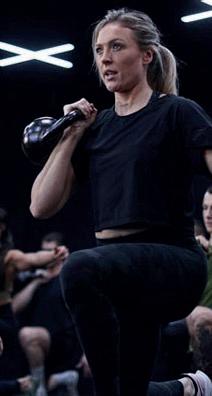
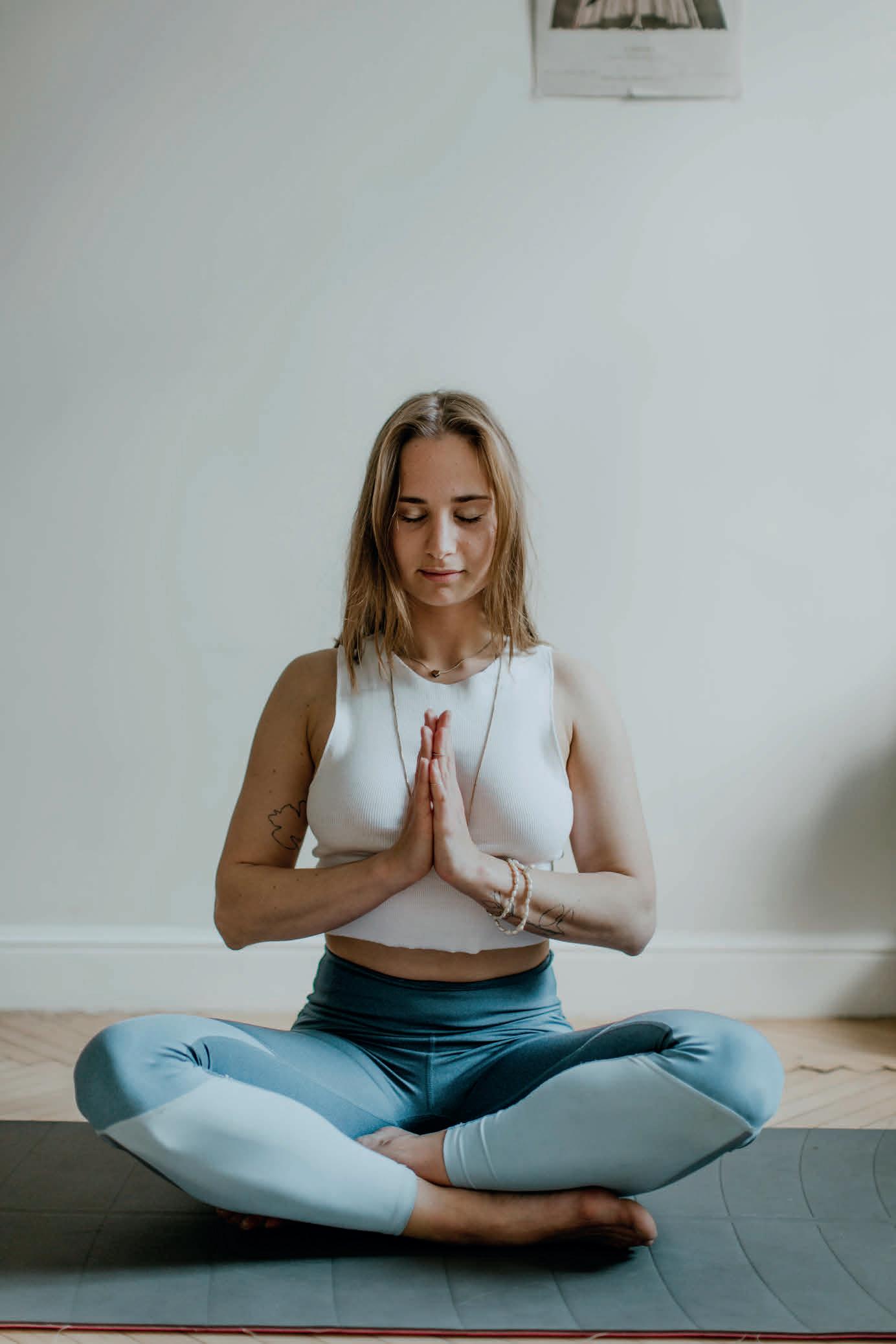


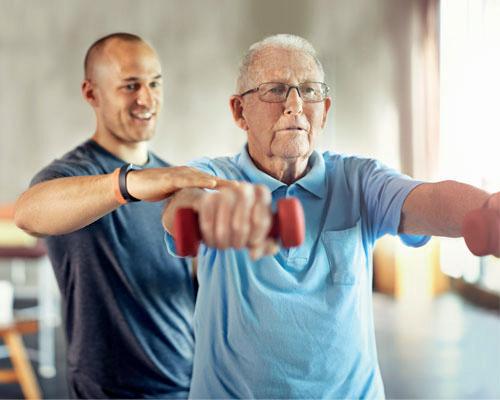

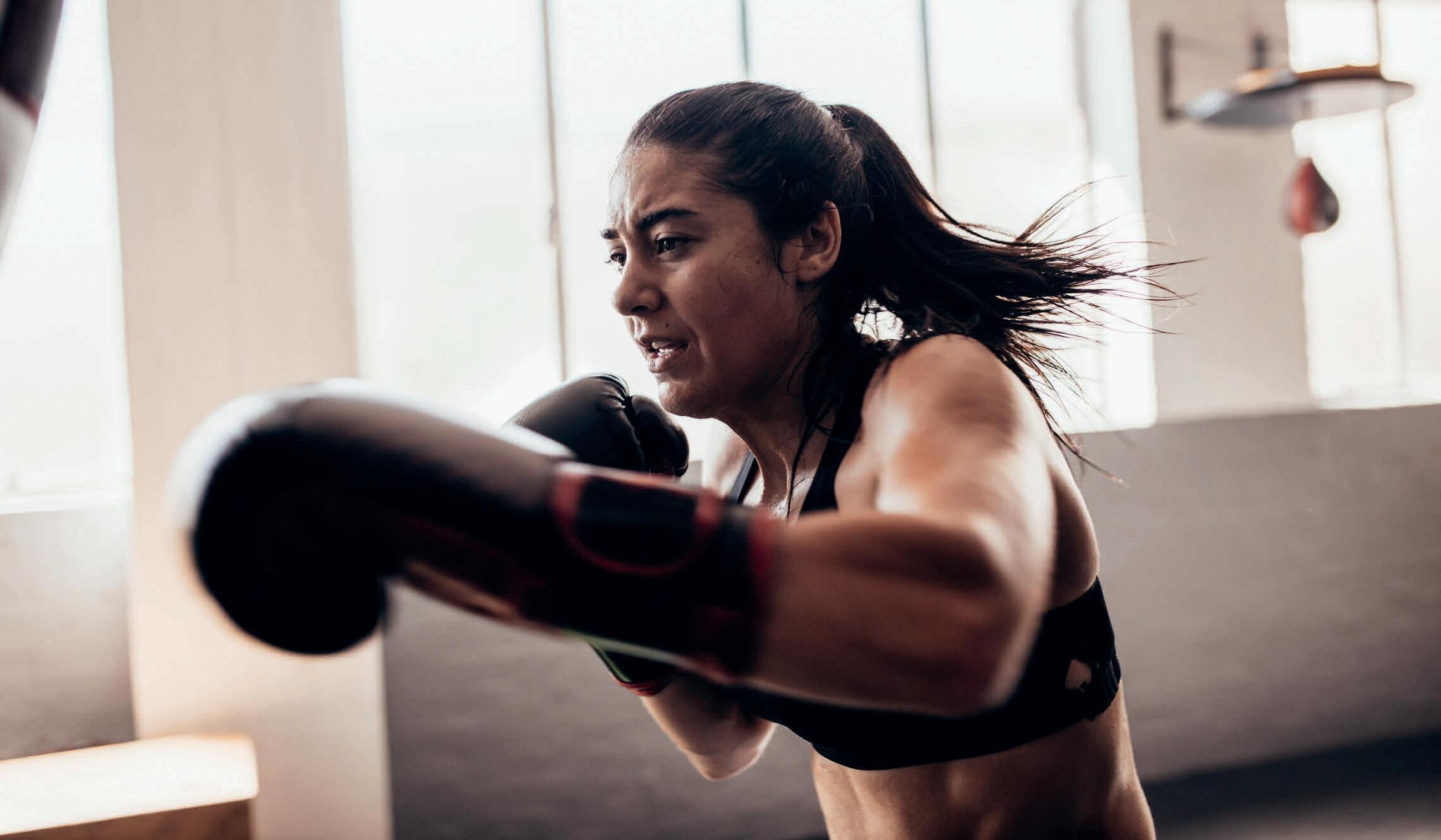








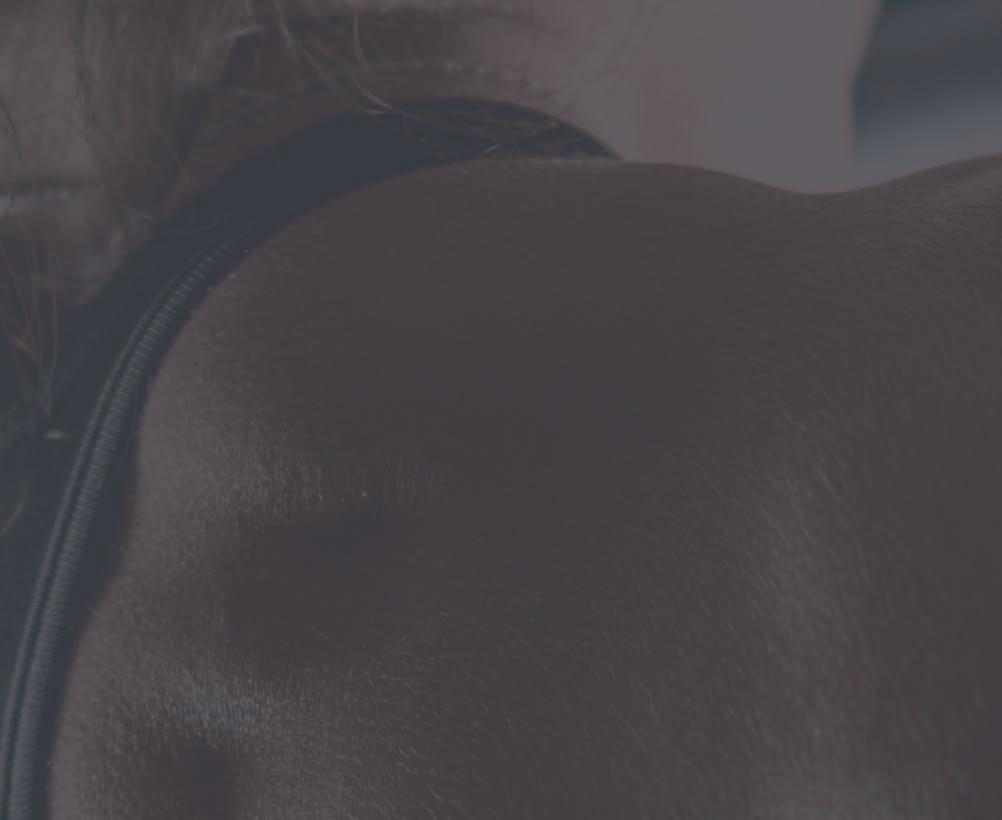







Tech partners, myFitApp and ClubReady have expanded into the US with eight new club openings



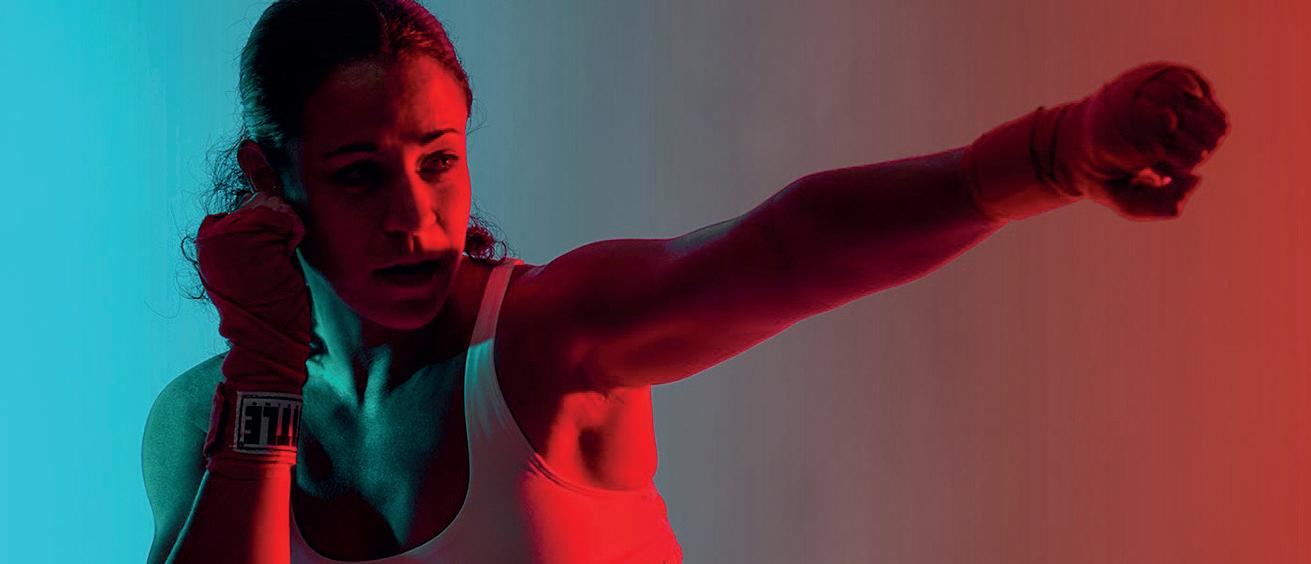
MyFitApp and ClubReady have announced their first joint customers.
Eight clubs, Title Boxing, Pulse Performance, Vital Stretch, Box Union Studio, Power 4 Pilates, Twisted Cycle, VP Fitness and XGT Fitness, have launched branded member apps powered by myFitApp – the hybrid business platform for gyms and ClubReady, provider of full-suite studio fitness and wellness club management software.


The combined power of software enables clubs to retain members, acquire new ones, and upsell existing members with a wide range of additional features. These include a digital fitness offering called yFitApp@home, where clubs can stream live and on-demand videos to their members at





home and access control where members can use their smartphone to enter their club.




These new app launches not only mark the first in the ClubReady partnership, but also the first US customers for myFitApp, expanding on the 2,400+ sites using the platform across the world.

“It’s great to see eight successful customers launch their new apps,” commented Jonathan Cooke, chief commercial officer at myFitApp. “We’re delighted to


extend our customer base and provide the US fitness industry with a powerful solution that delivers an outstanding user experience and marketing platform. It’s great to be working with world-renowned clubs such as Title Boxing. The combination of myFitApp and ClubReady is game-changing and we look forward to transforming more clubs across the US.” l More: www.myfitapp.com and www.clubready.club/myfitapp
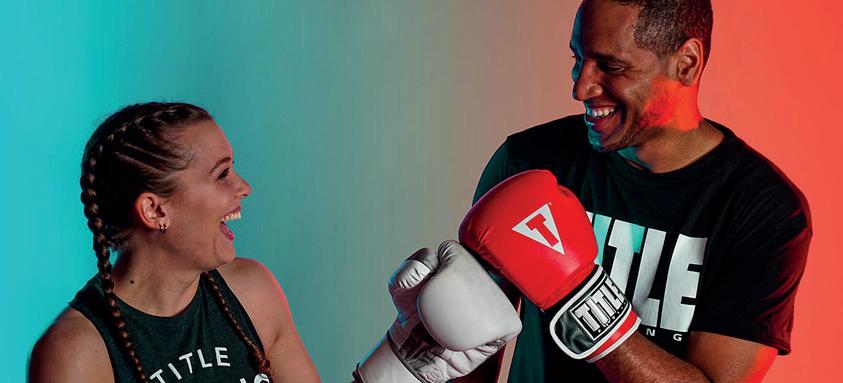

The range of features available to ClubReady and myFitApp customers include:
Booking and event scheduling Quick and easy booking for members.
Content marketing
Gyms can create and publish content in their app in minutes.
myFitApp@home
Built-in live-streamed and ondemand video platform.
Monetisation and paywall
Integrated payment for physical and digital goods and services.
Lead generation
Integrated referral programmes that can pay for the app many times over.
Attendance and access control
Tap or scan gym entry, preventing fraud and increasing revenue.
The combination of myFitApp and ClubReady is game-changingJonathan Cooke PHOTO: SHUTTERSTOCK/GROUND PICTURE PHOTO: TITLE BOXING







The author, industry veteran, UK Active board member and founder and CEO of Mosaic Spa and Health Clubs talks to Kath Hudson about the challenges of operating a high-end club when low-cost came on the scene


After 24 years of managing hotel health clubs under contract, Mosaic bought its first standalone owned and operated club, in Shrewsbury UK, in 2011, backed by venture capitalists. We bought it out of administration, so knew it needed investment, but soon realised far more was required than we’d budgeted for. A large chunk of our finances were used up on things like air conditioning and equipment servicing, which were important but didn't have an impact from the members’ point of view. It also meant we weren’t able to fully realise our vision of what we wanted to do with the club.


It was an uncomfortable experience, but I wouldn’t change it
Initially, we were able to get the club running profitably, but then budget clubs arrived and three opened within a mile of our club. Despite us offering a pool and tennis courts, there wasn’t enough of a differentiator between their facilities at £10 a month and ours at £60.

The tough competition had a massive impact on our performance and recovery, which led to our venture capitalist backers losing confidence in our business model and the sector. They wanted to exit.
The arrival of the budget clubs meant we had to spring into action quickly. Despite pressure to turn the facility into a trampoline park or an indoor waterpark, I still believed we were doing the right thing – we just hadn’t been able to deliver the facility to match our vision.
So, we doubled down on our model, refreshed our research on local demographics and reconfirmed there was a gap for a club totally dedicated to the family market. We then set about finding another
The tough competition had a massive impact on our performance, which led to our venture capitalist backers losing confidencePHOTO: RICHARD DAWSON
Club membership boomed once the right segment was targeted
backer who could help us deliver our vision of creating a high quality facility with great service.
A local entrepreneur, who was also a member, came on board with investment. The venture capitalists were bought out and we invested a further £1m to finish off what we should have done the first time around, creating a high quality facility which made a big impact and offered great service.
We went strongly after the family market, putting prices up, but also offering free membership to children under 16 if a parent was a member. This strategy worked and the membership went up from 1,900 to 3,000 within 12 months of the reopening in 2017. We’re now at 6,000 members and for the first time in my career we’re running a waiting list.
The experience taught me to always research the marketplace, find your niche, be clear on your vision and then deliver that vision the absolute best you can. If you’ve done all those things correctly, success should follow.
If I could go back and give myself some advice I would say to stick to the vision and keep believing in myself, even though there was pressure to either drop the prices or change the model completely, we weren’t distracted, stayed with the plan and now have a club and a team of which I’m really proud.
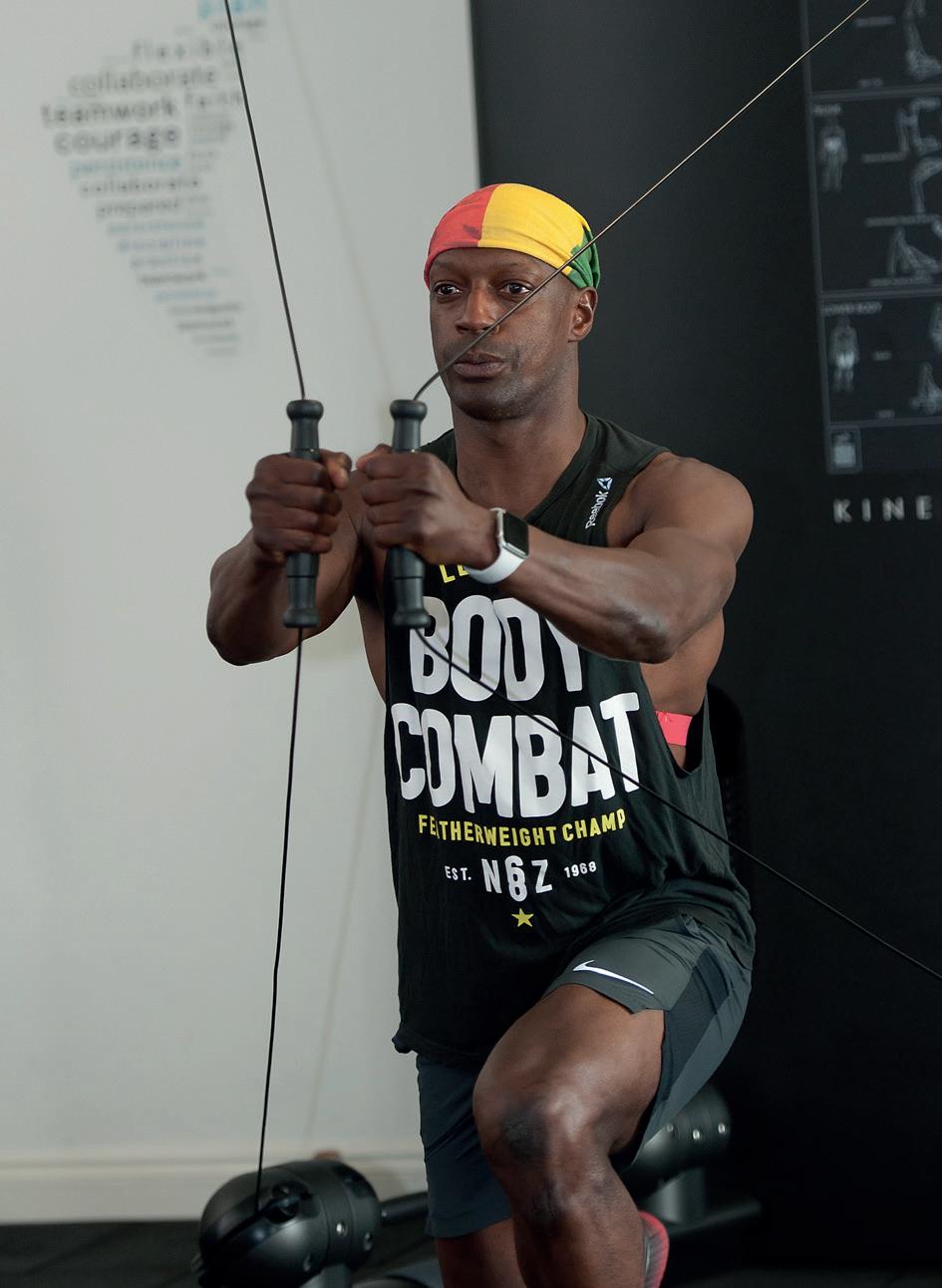
It was an uncomfortable experience, but I wouldn’t change it. I genuinely believe we all become better and stronger for the challenges we face.
During the really tough times we tend to grow the most, learn more about ourselves, hone our skills and emerge with a fresh set of learning and greater resilience. l More: www.HCMmag.com/courteen

The experience taught me to always research the marketplace, find your niche, be clear on your vision and then deliver that vision the absolute best you canThe best results can come from tough times PHOTO: RICHARD DAWSON PHOTO: RICHARD DAWSON


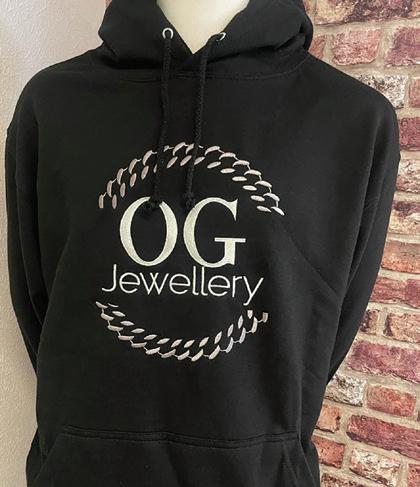



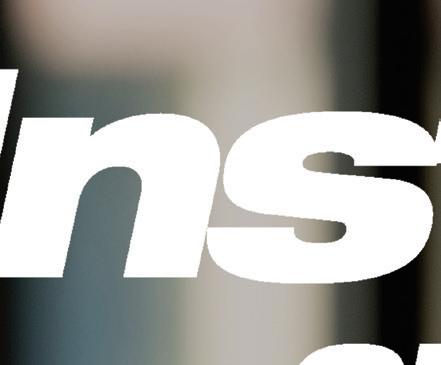



Long COVID is affecting up to 30 per cent of people who contract the virus. How can you support members suffering from this condition?

Kath Hudson speaks to ACE’s Dr Cedric Bryant about his experience

The most difficult and challenging thing to deal with was the uncertainty of when, and if, it would end. I tried to keep up the positive self-talk that there would be light at the end of the tunnel, but the longer the symptoms persisted, the more I started to wonder if I would have to make dramatic changes to my lifestyle.”
As someone who enjoyed optimal health and does all the things our industry advises for a healthy lifestyle, ACE’s president and chief science officer, Dr Cedric Bryant, did not expect to suffer from Long COVID, especially as his initial infection was mild and short-lived. So it came as a massive shock when – four weeks after his 36-hour illness – he woke up unable to grip with his left hand. The joint pain swiftly swept through his body and tests showed his inflammatory markers were elevated to alarming levels.
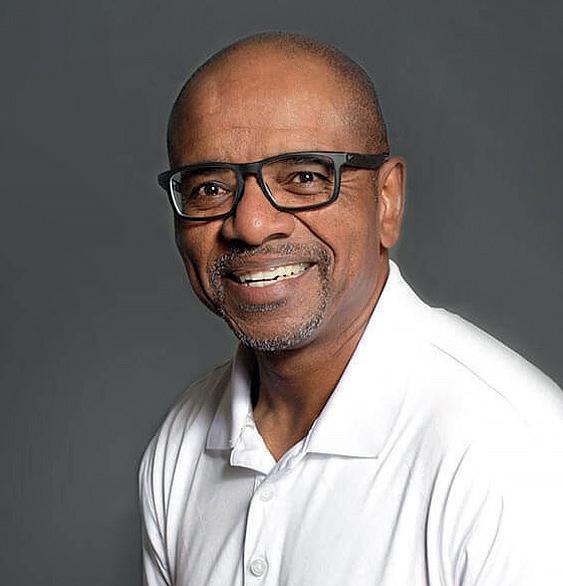
A rheumatologist diagnosed it as post-COVID reactive arthritis and said it could take between several
weeks to a year to resolve. Seven weeks later the joint pain abated only to be replaced with chronic fatigue from any type of exertion. “That was when I became a member of the Long COVID club,” says Bryant. “I thought the joint pain was awful, but the extreme fatigue associated with the lightest levels of mental or physical exertion was even more troubling.
“Prior to having that experience I would edit books and manuscripts for hours while exercising on the treadmill, but after an hour or so of brain activity post-COVID I’d have to take a nap,” he says. “I love to exercise, but the lightest level of exertion just wiped me out. After a low level, 10-minute session on a recumbent bike, I would feel as though I’d run a marathon in terms of fatigue.”
It’s difficult to put a number on how many people have Long COVID, as symptoms are so varied that some
Millions of people need support getting back to exercise safely after Long COVID

Often in our industry there is the mentality that you can do a bit more, but in this instance we should do the opposite
cases may be undiagnosed. More than 200 symptoms have been associated with the condition. The most common are fatigue, shortness of breath, loss of smell and muscle aches. Others include insomnia, anxiety and depression, stomach issues, a temperature, rashes, heart palpitations, brain fog, joint pain and chest pain.
The World Health Organization estimates 10 per cent of people go on to develop the condition after an infection, while a UK study puts the number at 30 per cent. The Office for National Statistics says 2.1 million people in the UK were experiencing symptoms of Long COVID in December 2022.
According to the National Center for Health Statistics, more than 40 per cent of adults in the US have reported having COVID and 19 per cent of those had symptoms of Long COVID – that’s 7.5 per cent of American adults.
■ People with mild COVID symptoms can still have long-term problems, but people who had five or more COVID symptoms are more likely to develop Long COVID
■ Non-white ethnic minority groups are 70 per cent less likely to report their Long COVID symptoms
■ Up to one in three people who have had the virus report Long COVID symptoms and up to one in seven children
■ Unvaccinated people are more likely to develop Long COVID than those who are vaccinated
■ Three times more people in their 50s have symptoms of Long COVID than those who are over 80.
■ Middle-aged people are more likely to suffer ongoing problems than younger adults: 4.8 per cent compared to 1.2 per cent
■ Women are 50 per cent more likely to be affected than men, particularly if they had poor prepandemic mental or physical health
■ Being overweight or obese and suffering from asthma are also risk factors
■ Other research has shown blood group is a factor, with A being more vulnerable to contracting COVID-19 and O less likely

Given these figures, there are likely to be a number of Long COVID sufferers among your membership who will be getting frustrated and downhearted that they can’t take part in their favourite workouts. Or they’ll persist in doing so, only to be knocked out for days afterwards, experiencing a cycle of frustration and despair.
Bryant recommends against discouraging them from coming to the club, because that will be negatively affect their mental state, but encourage them to do a very gentle workout, focusing on stretching and mild movement, with some core work: “Be prepared for lots of trial and error, because no two Long COVID sufferers are the same,” he says. “Have good lines of communication, ask lots of questions and treat the person as a true individual.”
For Bryant, the improvements came after about four months. They weren’t quick, but there was a continuous gradual upward progression. “I took the tortoise approach: starting low and going slow. Beginning with five or 10 minutes of cardio, below
Encourage members to be patient. Help them identify small wins and signs of progress to make them feel more hopeful
the talk test threshold and seeing how my body tolerated it. If I was fine I would add a minute or two each time. Once I got up to 20 or 30 minutes of activity, I started to increase the intensity and it took about six weeks to get back to a normal workout.”
While the gradual approach to rehabilitation is universal, Bryant points out that no two people will have the same experience, so it’s important to ask a lot of questions, find out their current exercise tolerance and tailor the comeback accordingly.

“Often in our industry there’s the mentality that you can do a bit more, but in this instance we should do the opposite,” he says. “Encourage them to be patient. Help them to identify small wins and signs of progress: this could do wonders in making them feel more hopeful.”
Bryant also gives some recommendations about what not to do. “Don’t minimise or invalidate your clients’ experience and be careful not to share the experience of someone else you know, because everyone’s journey is different.
“And even though it comes from a good place, don’t say things such as “you’ve got this” or “you’re going to get through this,” he says. “While it’s well intentioned and nice to say such things, it’s somewhat meaningless when you can’t sit at your computer for more than half an hour. Listen more and counsel less.”
A concerted effort is underway to understand the condition and establish how to treat it. The UK government has invested more than £50m into research, run by the National Institute of Health and Care Research (NIHCR). Studies are looking into who gets Long COVID and its biological causes, as well as evaluating treatments, recovery and rehabilitation and the impact of the vaccination programme.
l A new study, Long COVID outcomes at one year after mild SARS-CoV-2 infection, by the KI Research Institute and Maccabi Healthcare Services and led by Maytal Bivas-Benita, found for those with an mild illness, most Long COVID symptoms resolve within a year, with outcomes being more favourable in those who had been vaccinated, however, for those with more severe infections, it can persist for an indeterminate time.
Listen more and counsel less if members have Long COVID, as everyone’s experience is differentPHOTO: GROUND PICTURE/SHUTTERSTOCK

Should health and fitness operators now be adding mindfulness practices to their standard offering, supporting members’ mental wellbeing as part of their overall health? Kath Hudson reports

Many of your members and staff will be suffering from the effects of stress, as global issues exacerbate their day-today difficulties and all but the most privileged feel the impact of inflation. Untreated stress can manifest in physical ways, meaning that gaining mastery of the mind is crucial to coping with these troubling times, but while meditation apps boomed during the early parts of the pandemic, many people still find it hard to engage with this practice.
A UK study found that giving teenagers mindfulness lessons at school wasn’t an optimal use of time, as many found it boring, with few continuing the technique at home. There’s an opportunity for health clubs to teach the foundations of meditation to give members the tools to continue the practice at home, as well as offering a space to sit with others, benefiting from the energy of the group and a safe space. Many operators are already adding meditation and mindfulness to their offering.
Classes which introduce people to the concept of mindfulness can include a range of guided meditations to help people live in the moment and be still. Taking this route means connecting with members from a new vantage point, as the instructors’ role has traditionally been to pep members up and get them feeling energised, whereas this is all about slowing down.
Clubs tend to be stimulating environments, but creating a calm, serene space for mindfulness classes could attract a new clientele, as well as offering a welcome break for members who rush from appointment to appointment all day, then to the gym after work, and then back to domestic chores, not realising their nervous systems are overloaded and they’re on the brink of burnout.
For some members, meditation and mindfulness might be a bit ‘woo woo’, but there are compelling reasons for all of us to develop a mindfulness practice, not just for mental resilience, but also to optimise athletic performance.
Several studies have shown that mindfulness helps people to get into Flow State by training them to be in the here and now, and not
to act on critical thoughts which can cause performance to come crashing down.
During Flow, the prefrontal cortex of the brain – which is in charge of thinking and planning – becomes less active, in turn allowing the parts of the brain which are responsible for skills and focus to function better.
The upshot of this is that if your members get into Flow State while they’re working out, they’ll find the experience more enjoyable and will find it easier to meet their goals. This can lead them to achieving another optimal state: mastery.
Research on athletes across a range of sports has found that Flow occurs in five stages. It begins with an event, which provides the athlete with positive feedback and leads to an increase in confidence. This confidence boost pushes the athlete to set new challenges and move their performance up a notch.
This could yield great by-products for health clubs: members who are managing to achieve Flow State and mastery will enjoy their workouts more, feel motivated and will keep coming back.
On the following pages, HCM talks to operators who are delivering mindfulness programmes and classes to find out more about the benefits.

 David Lloyd Leisure
David Lloyd Leisure
The demand for meditation classes is increasing, as more of our members discover its many health benefits, including reducing stress, developed concentration and increased awareness.
David Lloyd Clubs offers a variety of meditations with different focuses, including affirmations, positivity or productivity which allow a personalised approach. One of our signature classes, Spirit, is a dynamic workout fusing Pilates and yoga, finishing with a mindful sound meditation which can be more appropriate for beginners looking for an all-round mind and body experience. For members who prefer to practice outside of the club, we have a library of virtual content available on the David Lloyd app.
Interest in mindfulness and wellbeing has heightened since the start of COVID, with our clubs supplying nearly 400 more classes each month than before
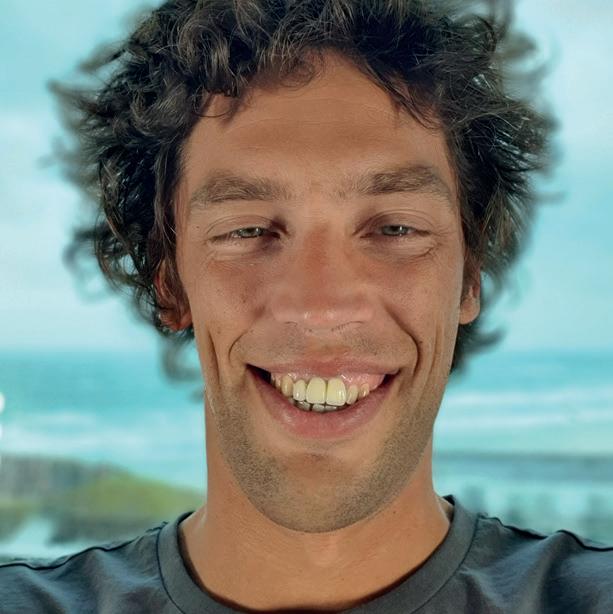
We’re noticing a significant increase in interest in mindfulness and meditation. Our regular beginners’ meditation courses, available both in our studio and on our online platform, are always sell-outs, while our weekly meditation class has experienced a 70 per cent increase in uptake since the start of the pandemic. The growth has been mainly focused in the late 20s to early 40s age group.
We’re living in a world where our attention is being pulled in many different directions and we spend
the pandemic. Everyday life was put on pause during the lockdowns and so a lot of people turned to mindfulness to stay positive. We’ve also noticed more members trying meditation classes, having never previously stepped into our exercise studios. Looking at first time users from March 2019 compared to March 2022 there was a 261 per cent increase, proving people want to join the community which these classes create. The average age for these classes sits between late 40s to early 50s, however, we’ve also seen a 20 per cent increase in under 45s taking part.
different ways of learning – some aural, some visual, some tactile – we give them a range of tools to start a meditation practice.
a lot of our waking day in a stress response, either worrying about the future or living in the past. As people learn the practices of mindfulness and meditation, they experience relief from these stresses and anxieties.
The benefits can be instant and astonishing. As everyone has
There are plenty of things to consider when leading a mindfulness or meditation practice. The energy of the teacher will always affect the energy of the room, so taking the time before class to centre and get connected is vital. There needs to be a lead into meditation where the group is given time to wind down and sync with each other’s energy. If people run in late, straight from a stressful day at work it will be nearly impossible for that person to drop straight into a meditation.
It’s far more accessible for people to begin meditation from an already calm space, so I begin my classes with gentle stretches and slow breathwork to help the group connect with themselves and the space they’re in.
The end of the meditation can be as important as the start. Giving people the time to sit with their experiences as they come out of a meditation is very important.
We’ve seen a 261 per cent increase in attendances at our mindfulness classes
Our weekly meditation class has experienced a 70 per cent increase in uptake since the start of the pandemicTom Harvey Tina Traina
MNDFL
Mindfulness is for everyone and sharing mindfulness from a deep, embodied place is serious business, but should also be fun. Interest in mindfulness is increasing because more people are realising they need to slow down, have space to process their thoughts and commit to self-care.
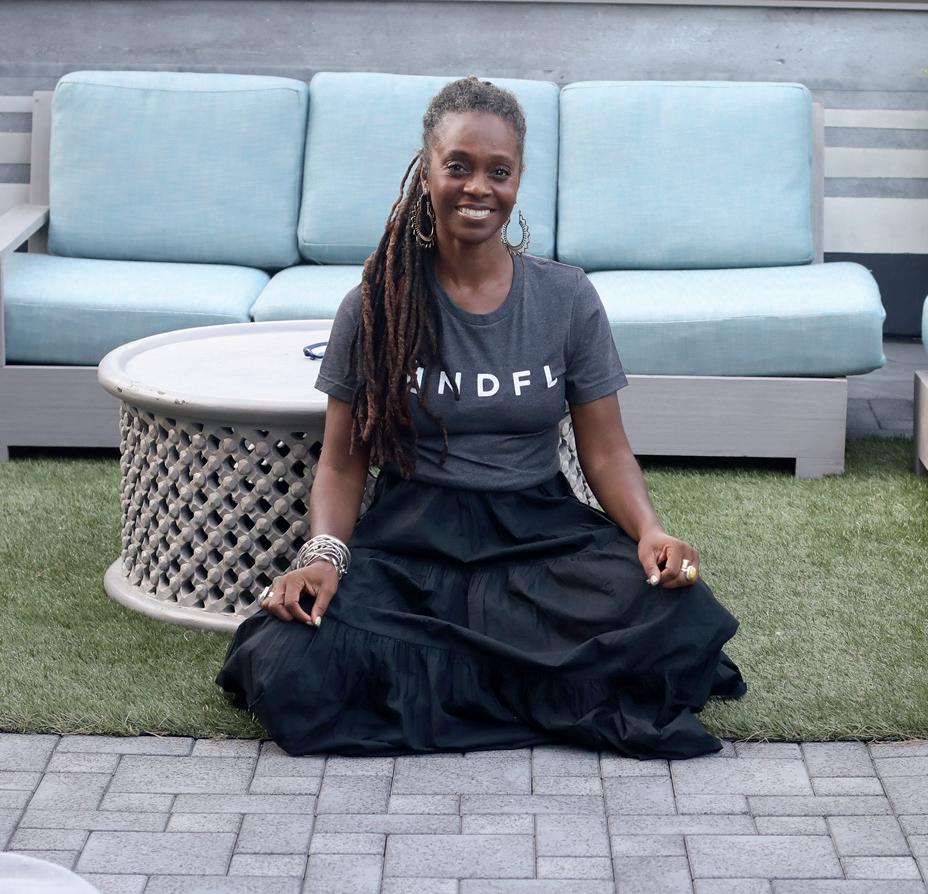
We meet people where they are and commit to helping them develop a capacity of being OK with this moment, in order to act more thoughtfully and move into the next moment as it unfolds.
We also invite them to bring their whole selves, not leave some part at the door so they can ‘fit in’. We don’t ask people to buy into any ideology or to leave whatever they believe behind. The ask is to be present in just this breath, just this moment. Simple.
Begin here, right now. It’s as easy as paying ‘exquisite attention’ to just one thing – and if you forget, you just return to that place.
Once people begin to experience mindfulness as a basic operating system which can be woven into how they interact with everything and everyone –going beyond a 10-minute meditation on their app to check off the to-do list – it becomes an almost effortless part of the day-to-day. Despite all the hype around mindfulness, it’s not a magic pill. The real benefits come with consistent practice, which is why mindfulness has to become part of lifestyle. l
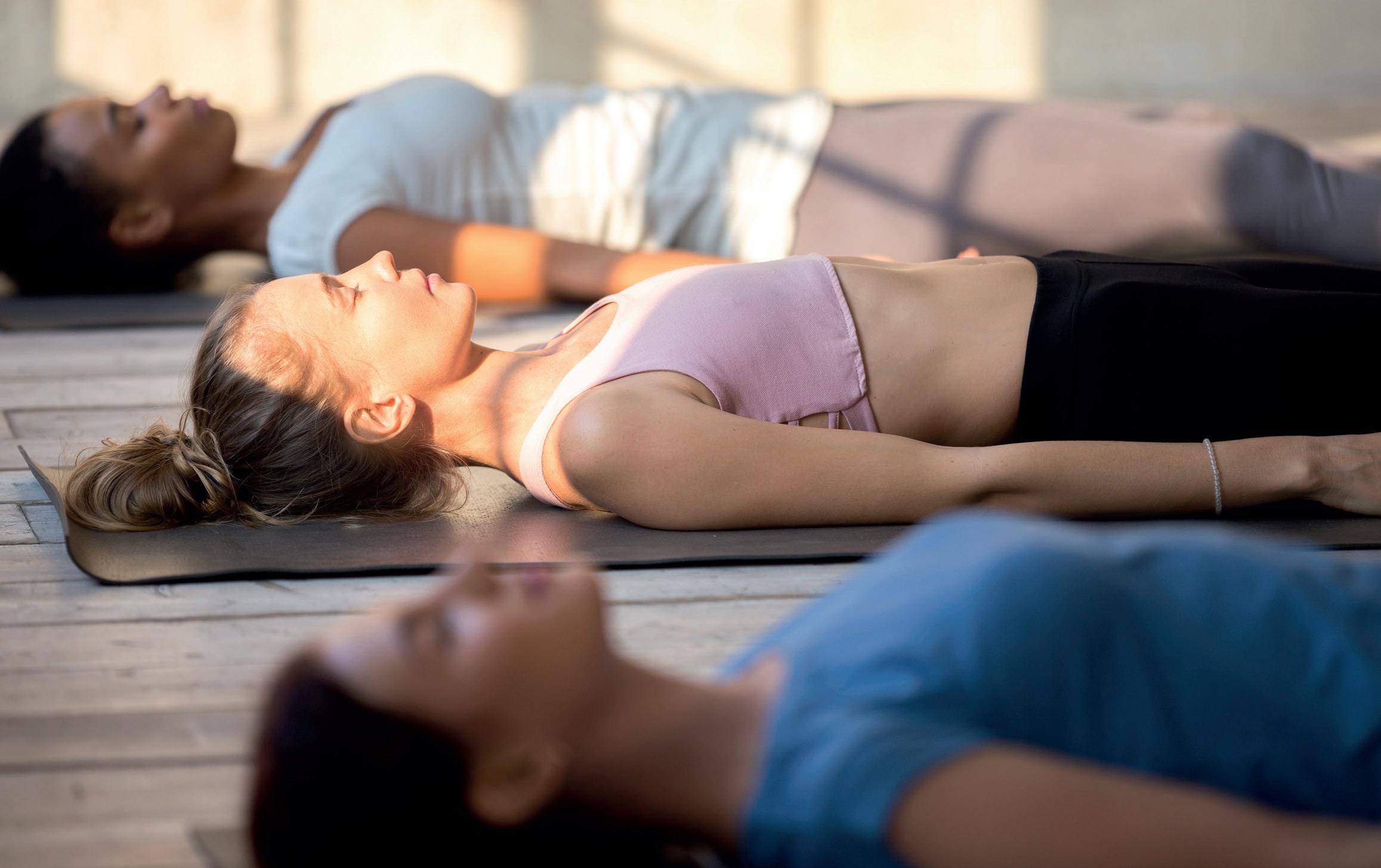
Once people experience mindfulness as a basic operating system, it becomes almost effortless
The benefits of mindfulness come with consistent practice, making it an ideal offering for health clubsMindfulness has to be part of life, says Brown PHOTO: SHUTTERSTOCK/ FIZKES
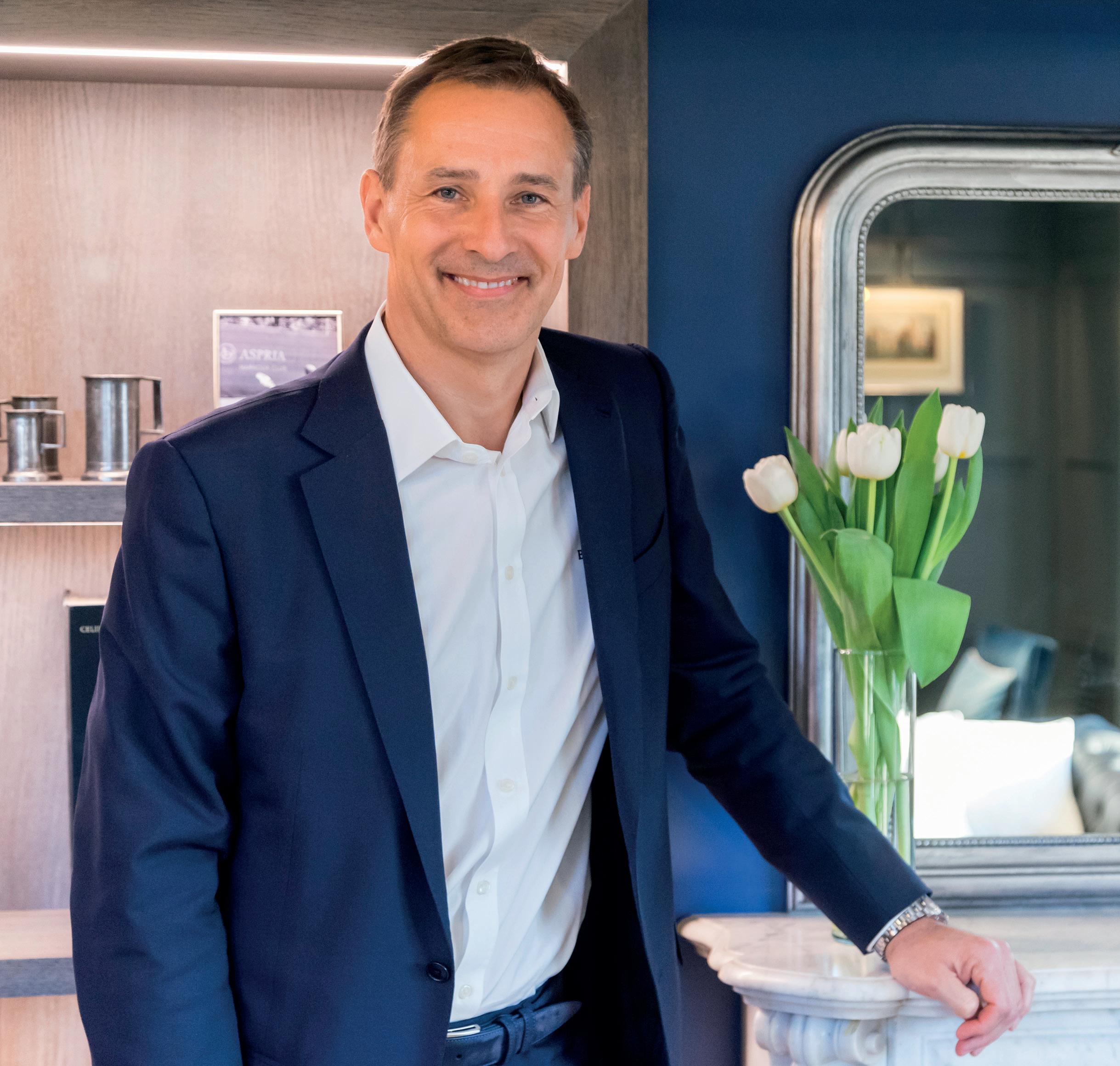
It feels as though we’ve come out of the pandemic and lit the afterburners
Aspria has built a collection of high-end, wellness-focused members’ clubs. Now its founder and CEO is launching a new brand – Aspresso. He talks to Kate Cracknell

Sum up the last few years
I’d rather look forward than dwell on what’s been a painful period for everyone. Suffice to say we’re grateful to have some of the most loyal members around, many of whom continued to pay through government-enforced club closures. Financially we’re back to pre-COVID levels and member numbers are close; the recovery has been as good as we could have hoped.
We haven’t only been focusing on recovery, but also on growth. In 2021, we secured a €50m initial financing tranche from Fortress Investment Group in the US (www.fortress.com) – proof health and wellbeing are on the radar of the biggest financial institutions in the world.
In spite of moving from pandemic into war, with all the horrors and cost of living crises that has brought, the interest in all things health remains strong. There’s been a sea change in mentality and approach, whereby health is now a key element of a modern way of living and working.
So the pandemic changed people’s priorities?
Certainly for me, the lessons have been that life is shorter than you think and you need to embrace it. Rather than planning for a long time in the future – working for 40 years, then retiring – people’s perspectives
are now more immediate. As far as it’s possible to achieve, we’re looking for a combination life: working to earn, yes, but also prioritising looking after ourselves through leisure time, me time and family time.
But how to achieve this when we don’t have any more time in the day? The answer is by being more efficient with time and this is where Aspria comes in, because when you’re in a large health and wellness club such as ours, with so many different opportunities on offer – an answer to so many of your wellness needs in one place – you minimise time wasted on travel.

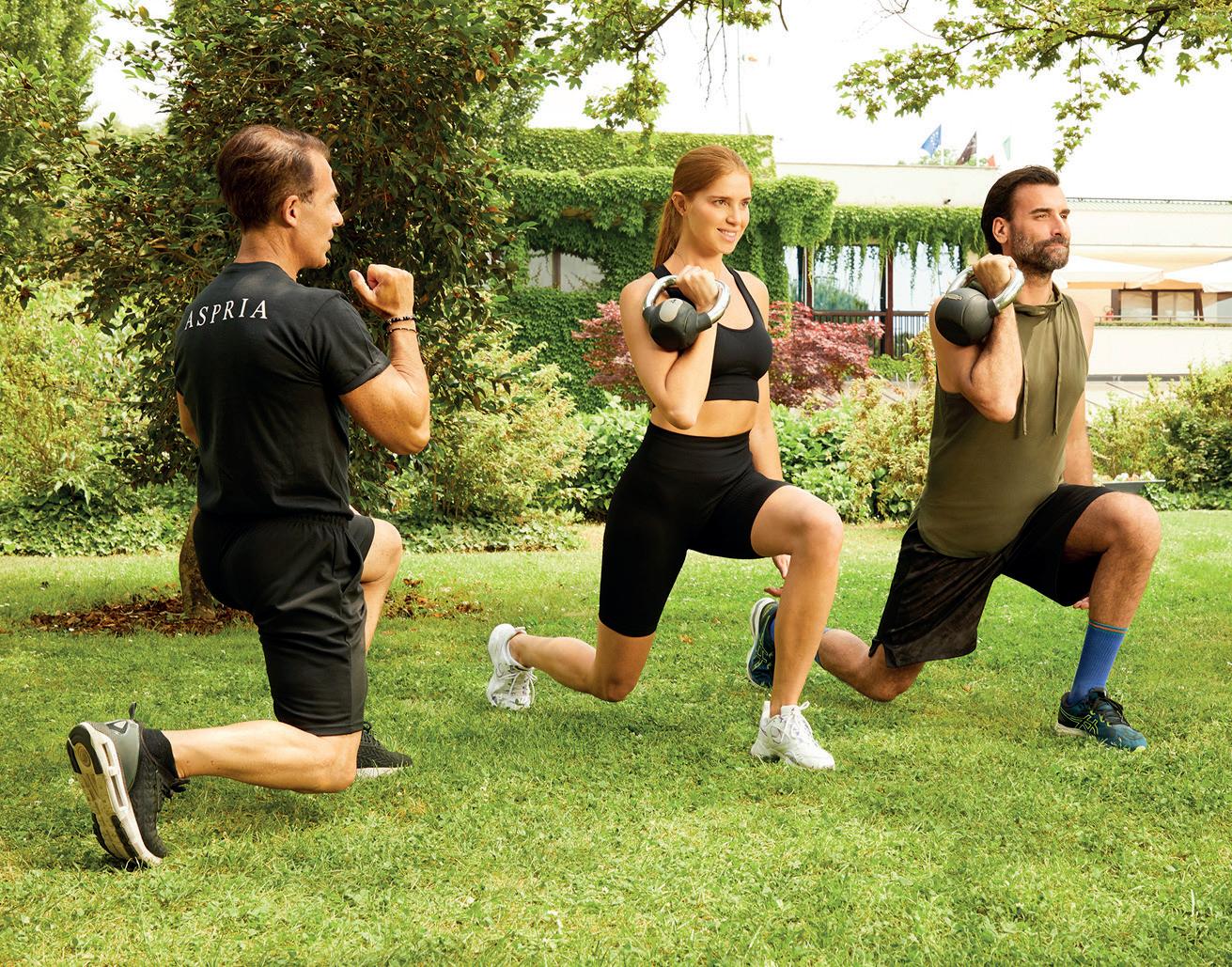
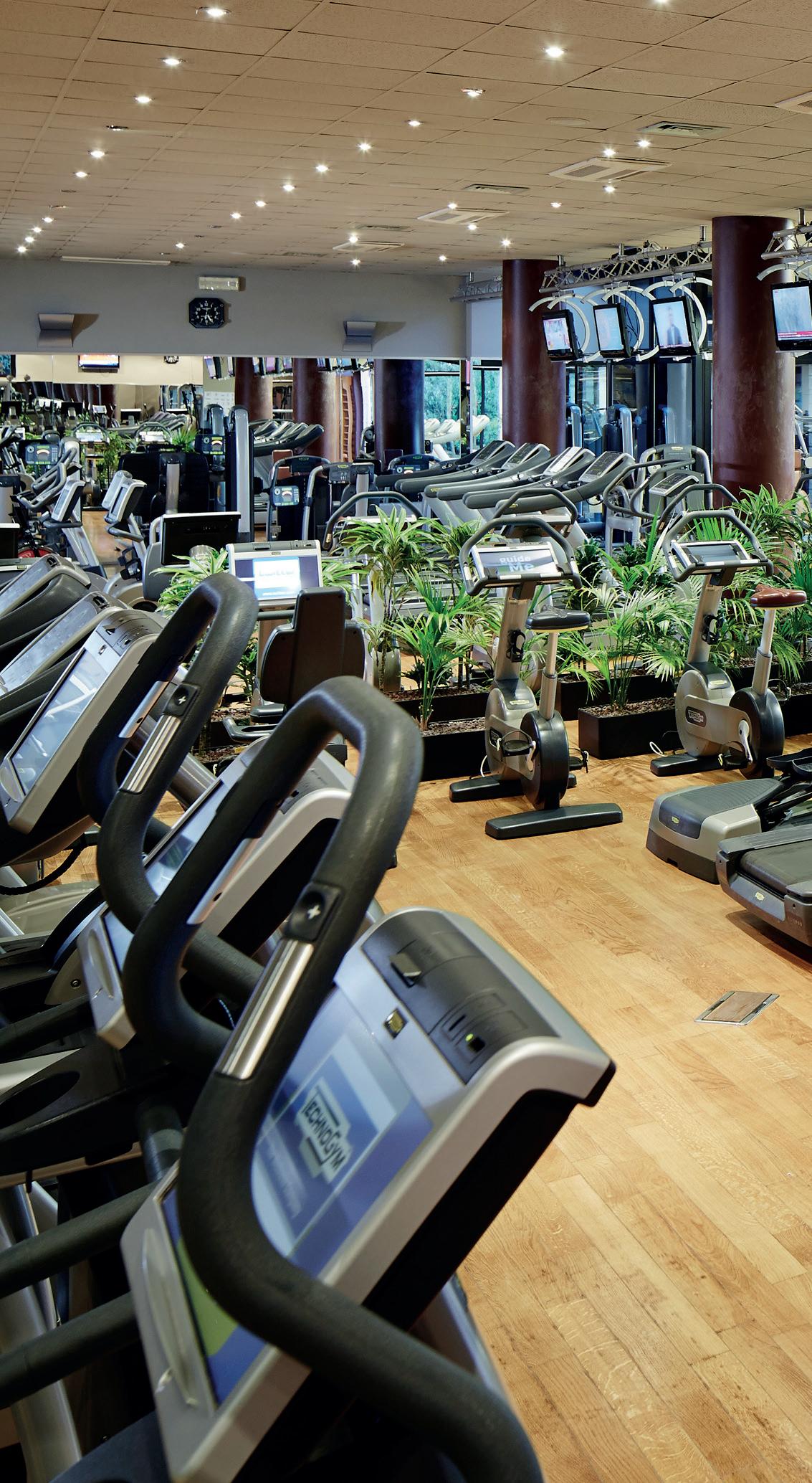
And so our clubs are becoming real third places after work and home, as the definition and edges of those previous silos blur to create a new work-life balance in a more fluid society. We’re seeing a melding of different elements within our working and leisure week and that’s exciting. We’re all having to learn what that change means for us, not only as individuals and families, but also as operators and developers.
Our clubs are large and complex, averaging 100,000sq ft, so you can’t simply find locations to order. You have to be patient. Aspria Roosevelt, for example – the club we’re currently building in Brussels – is a project I’ve been working on for 22 years.
Once a chateau and family home of the Solvays, then a sports facility for Solvay company employees, we eventually agreed to go into partnership with the Solvay organisation, to run it as a club for its employees and external
“In 2021, we secured a €50m financing from Fortress Investment Group – proof wellbeing is on the radar of the biggest financial institutions in the world”Aspria is looking look for more Aspresso sites Aspria clubs offer ‘me time, family time, leisure time’ PHOTO: ASPRIA PHOTO: ASPRIA
members. That was before the company moved its head office out of Brussels city centre and we acquired the property and its 10 acres of grounds for Aspria. We’ve since been working on a very complex development permitting process: it took seven years but we’re now starting construction.
Opening in 2024, Aspria Roosevelt will be a 140,000sq ft club with our normal mix of beautiful facilities: outdoor tennis courts, indoor courts under bubbles, indoor and outdoor pools, extensive fitness facilities, a full spa and large family area. All the bells and whistles you’d expect from us.
Meanwhile, we’re investing heavily in our existing Aspria clubs in Italy, Germany and Belgium, including a spa and pool remodelling at Avenue Louise, a huge new €1m spa at Royal La Rasante and extensive remodelling of Arts-Loi to make the club very group exercise-focused, with fully immersive studios.
Beyond that, as we’ve done for almost 30 years, we’ll continue to look for new
opportunities. I envisage further representation for Aspria within our existing territories where the brand is already recognised and where – in larger cities – we believe the market potential exists. We also feel there are more countries and more markets to come for Aspria.
I look at the pandemic as simply having delayed our growth and evolution as a company. Of course, interruptions of the scale we’ve seen over recent years could have knocked us completely off track, but there’s been real tenacity among the Aspria leadership team –resolve to make sure something good came out of that appalling period in all our lives.
Tell us about your new brand Opportunities are funny things: you don’t see any for a while, then they all come along at once. We’ve developed eight Aspria clubs in 20 years. With our new Aspresso brand, we’ll deliver four clubs in 18 months.
By budget club standards that isn’t a huge number, but Aspresso isn’t just a gym. Each club

Morris says now more than ever, clubs can become the ‘third space’ in members’ lives


“I envisage further representation for Aspria within existing territories. We also feel there are more countries and more markets to come”PHOTO: ASPRIA
Aspresso will be the company’s sports and fitness club for the wider market, with a lower price tag

will have large outdoor activity spaces – mostly racquets but also other sports, especially where there’s a legacy – as well as swimming, fitness and group exercise, food and beverage and kids’ facilities. So these are big, family-friendly clubs.
The difference compared to Aspria is the market positioning: Aspresso is the sports and fitness club for the wider market, with a lower price tag – €50–€60 a month – and sufficient activity space for a bigger membership.


It’s a fresh, light, contemporary, welcoming brand. A bit less flair and a bit more function than Aspria – more ‘IKEA’, more modular, but somewhere you’ll feel comfortable and have all the facilities you want. It’s less about how beautiful and high-end the facilities are, more about the fact that you can access them all for an affordable price.
I’d place Aspresso in the relatively unpopulated ‘budget family’ segment. In fact, Go Fit – Gabriel Sáez and his team – is arguably the only other operator doing anything like this at the moment and I have huge respect for them. They’re excellent operators, very of-the-moment, with a well thought-through product developed in collaboration with universities, the medical sector and so on. The way they dealt with COVID… it was so professional, so intelligent, so impressive.
At Aspria we had medical experts, 360° Aspria Pro health assessments, immunity-based
“With our Aspresso brand, we’ll deliver four clubs in 18 months
– not huge by budget standards, but Aspresso isn’t just a gym”PHOTO: CESARLLOREDA.COM PHOTO: CESARLLOREDA.COM
programmes in place for seven years before the pandemic. But Go Fit did it at pace and with volume. That’s what was so impressive.
Of course, we’re not here to copy Go Fit: we have our own Aspria Group DNA and we’ll shape our affordable ‘club for everyone’ concept accordingly. Our model is also mainly one of private funding, while Go Fit works primarily in partnership with local authorities. Different routes to the same goal.
First to launch is Aspresso K7 Valencia; I’ve loved Spain for 25 years and we’ve been looking for the right opportunities there for a long time.
What we’ve acquired is a large family club, most recently known as Club de Campo K7 Valencia, with over 30 years of history and set in nine acres of land. What we’ve inherited is a club that over the years has been developed in a rather unplanned, piecemeal way.
We now want to create a cohesive, planned, symbiotic development of facilities that are fit for purpose, both for modern families and for adult members. This will inevitably

require us to phase the development, as the club will remain open throughout.
The club relaunched as Aspresso K7 Valencia at the beginning of April. We’ve done a lot of work on the infrastructure, people and systems already, but our investment in the facilities will be ongoing for the next 12–18 months and indeed beyond.

I love what I call ‘ugly ducklings’: the clubs you need to encourage to come out and blossom. K7 definitely needs some love and we’ll be spending millions, but the end result will be fantastic. There’s also a beauty in a complex project like this where there’s always more to come.
The next site is in Rome – another existing but closed-down club we’ve acquired. The re-opening and rebrand to Aspresso will be announced soon and we’ll open in Q4.
Clubs three and four will be in Germany and Italy, opening between Q4 2023 and Q2 2024. Beyond that, we believe a few clubs a year is a sustainable development programme for us. We’ll be looking for
“We’re predominantly focused on acquiring and remodelling existing clubs, as we find it’s a faster way to grow”PHOTO: ASPRIA
further opportunities in Spain, Germany and Italy as well as elsewhere in Europe.
Negotiations are also ongoing for new-build clubs, but for now we’re predominantly focused on acquiring, rebranding and remodelling existing clubs as we find it’s a faster way to grow. It does make things more complex, of course, because you have to be mindful of the history and the legacy. But as we’ve shown at Aspria, where many of our clubs had a life before we took the reins – Royal La Rasante first opened in 1902, just as one example – it’s possible to intelligently integrate that legacy and history within an entirely new concept. And that’s what our team is really good at: interpreting what’s right for now and for the future, then making sure that’s what we deliver. So this is what we’re doing at Aspresso K7 Valencia: leveraging its past, but with a contemporary outlook and much-upgraded facilities to suit the modern family and a modern lifestyle.
Other than the darkest days of COVID, I don’t think I’ve ever had a day where I haven’t been excited about the future of the group, whether
that’s developing Aspria clubs or Aspresso clubs or some of our other initiatives and ideas. That’s my driving force, and the driving force of the senior team I’m so proud of.
And then Aspresso specifically… I’ve wanted to do it for some time. My family wasn’t wealthy and money was tight. This is my way of making sure the Aspria Group appeals to a larger proportion of the population.
This isn’t some great altruistic campaign. I just think that change can come through the carrot or the stick, and I favour the carrot. For me, that means creating clubs for everyone, making improved health and wellness available to more people. If we’re in a position to give back in that way, why wouldn’t we?
And the whole senior team, some of whom have been with me for two decades, are really excited about it. It’s great to see them so energised, so firm in their belief that we’re heading in the right direction.
The speed of the roll-out is a complete step change for us: it feels as though we’re coming out of the pandemic and have lit the afterburners! But after the last few years of getting through on sheer willpower and tenacity, it’s nice to finally be exhausted for happy reasons. l












































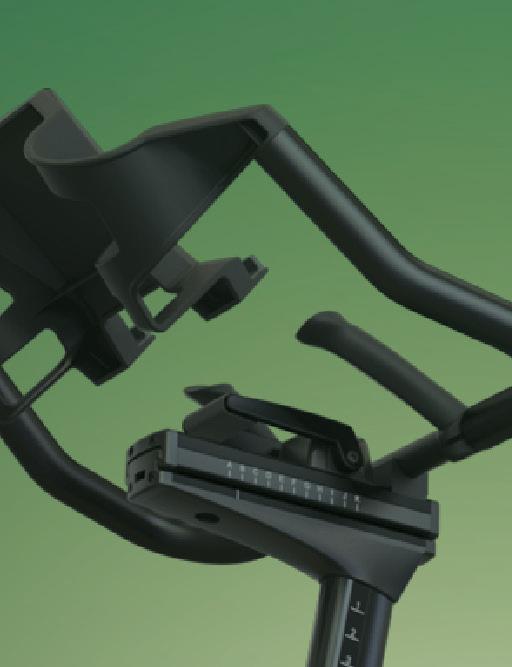

















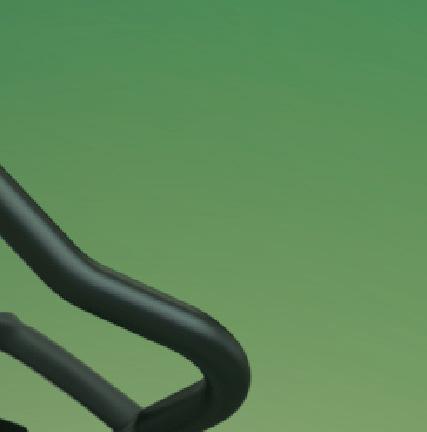










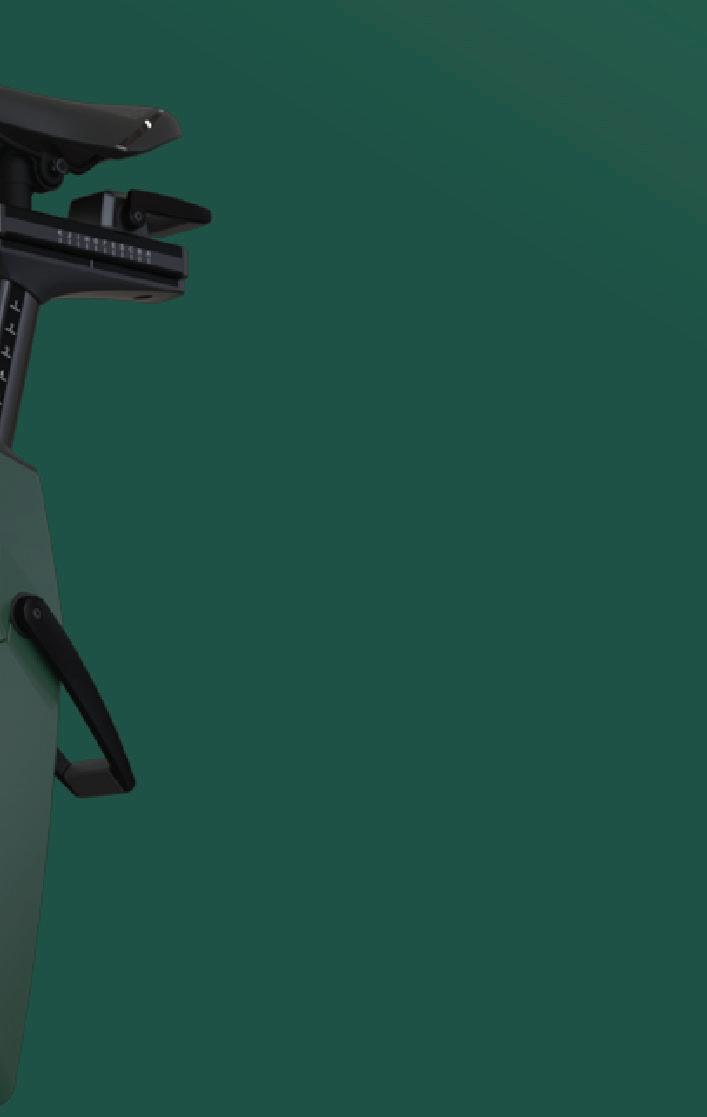














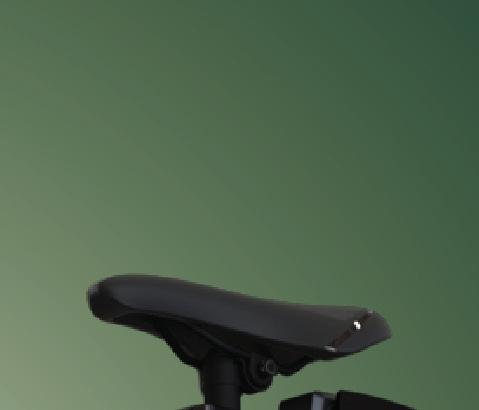


















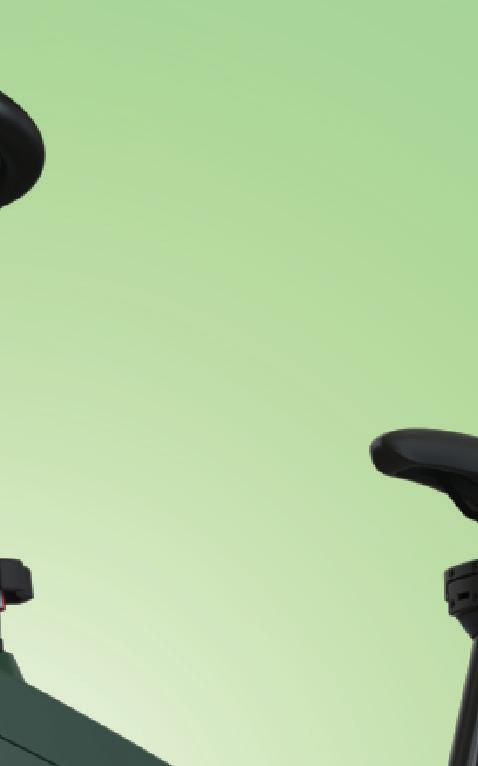












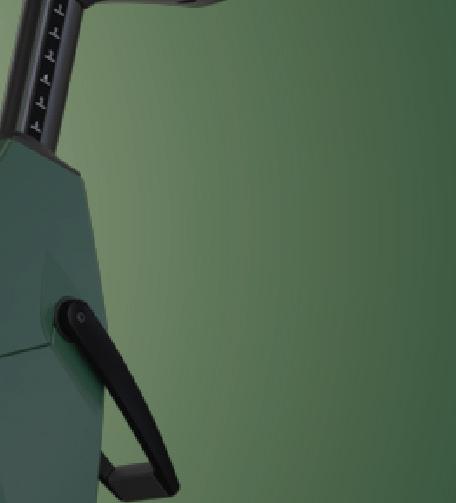






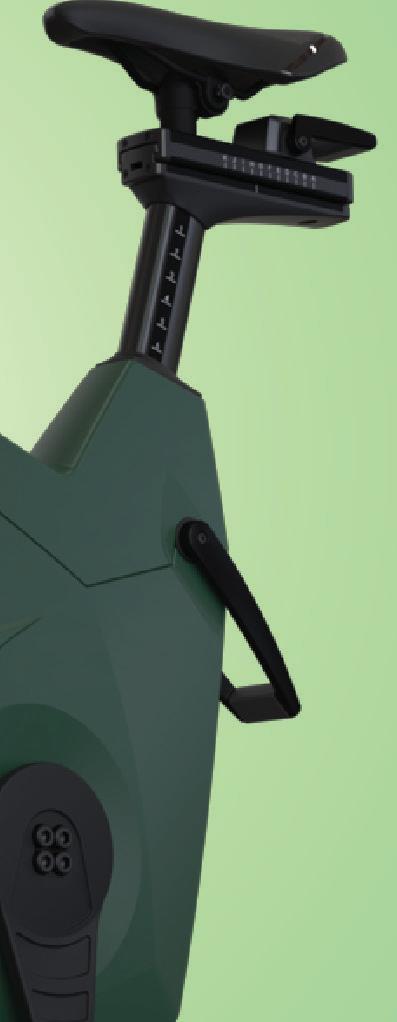














Frances Marcellin gathers insights into exercise monitoring to fi nd out what’s trending in 2023


Myzone
Exercise monitoring and tracking can help individuals to reach their goals, because it provides a way for them to measure progress and improvements over time. It also encourages people to stay accountable.
There are many benefits to having a leaderboard connecting members inside and outside the gym, including increased engagement, a sense of competition and the motivation to do better.


These benefits can lead to more frequent visits to the gym and improved customer experience, as they provide fun, interactive ways for members to track progress and compete, while also creating revenue potential through sponsorship or advertising.
Gamification can deliver a sense of accomplishment and progress, which is motivating for members, while also adding a competitive element that makes people more likely to push themselves and stay committed to fitness goals.
The community aspect can also be motivating and help people stay engaged – when you build a thriving community through accurate and effective
Myzone is a fitness tracker and online social platform for health clubs, corporate wellness, education, sports team and public and private sectors, that rewards effort for all physical activity, helping more people around the world to feel good about exercise.
wellbeing technology, it’s amazing how many members start becoming ambassadors for a facility with little to no additional effort on the part of the fitness professional. When you care, they care and this is the next step for many gyms that tend to limit the fun stuff to the gym.
There’s a key mindset change in that movement and motivation don’t have to just be about the gym. Operators can take their experience, expertise and education to where their members are when they’re away from the gym. Make their journey of physical activity more holistic through tech partnerships and engagement, and they’ll be loyal for years to come. More: www.myzone.com
and tracking keeps people accountable
Leaderboards inside and outside the gym increase engagement
Gamification creates a sense of accomplishment
Community creates passionate ambassadors
Gyms can take their expertise to where their members are A holistic approach keeps members loyal
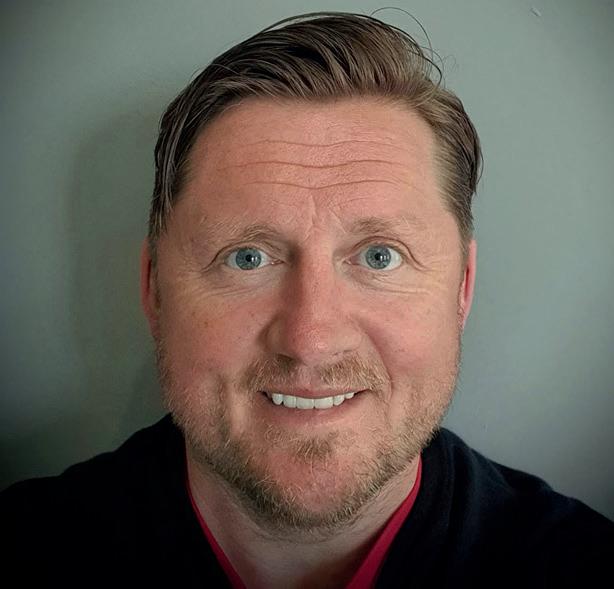
Movement and motivation don’t have to be about the four walls of the gymPHOTO: MYZONE PHOTO: MYZONE When you care, they care, says Wright
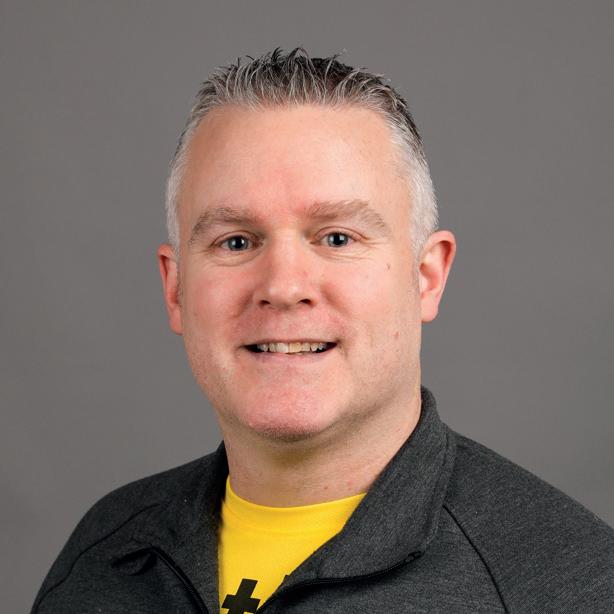
How can exercise tracking help?
By monitoring exercise, benchmarks can be created, progression frameworks can be implemented for programmes and goal-setting becomes more achievable. Today it’s an expectation – users want their fitness service providers to understand their needs, their passions, personality and performance and in return to provide solutions that help them achieve results. Additionally, they want personalised, engaging training experiences with seamless access to their data. In the same way they expect to pick up the TV series or film they stopped watching the night before – regardless of device and location – this ‘experience-transfer’ is expected in their daily lives.
What are the benefits of leaderboards that connect members inside and outside the gym?
Many people want to train both at the gym and at home, keeping connected to their PT, coach and their workouts. They also enjoy challenging other user performances within their community.
The Technogym ecosystem is the only end-toend solution able to adapt to the lifestyle of each user and to the business needs of operators, thanks to an unprecedented number of integrations with apps
We’ve been investing for years in a digital ecosystem that deliver connected training experiences. The user experience becomes frictionless, whether that be through interacting with solutions on a personal or group exercise level and regardless of location.
Whether in the gym, at home, in the office or travelling, the user has one account, one mobile app and all their health and wellness data, leaderboards, and contents are accessible through this.
What are your views on gamification?
It has a key role in boosting motivation for sure, as does curated content, because users become more immersed in the training experience and when this happens they’re naturally increasing the exercise duration and the completion of their workouts. More: www.technogym.com
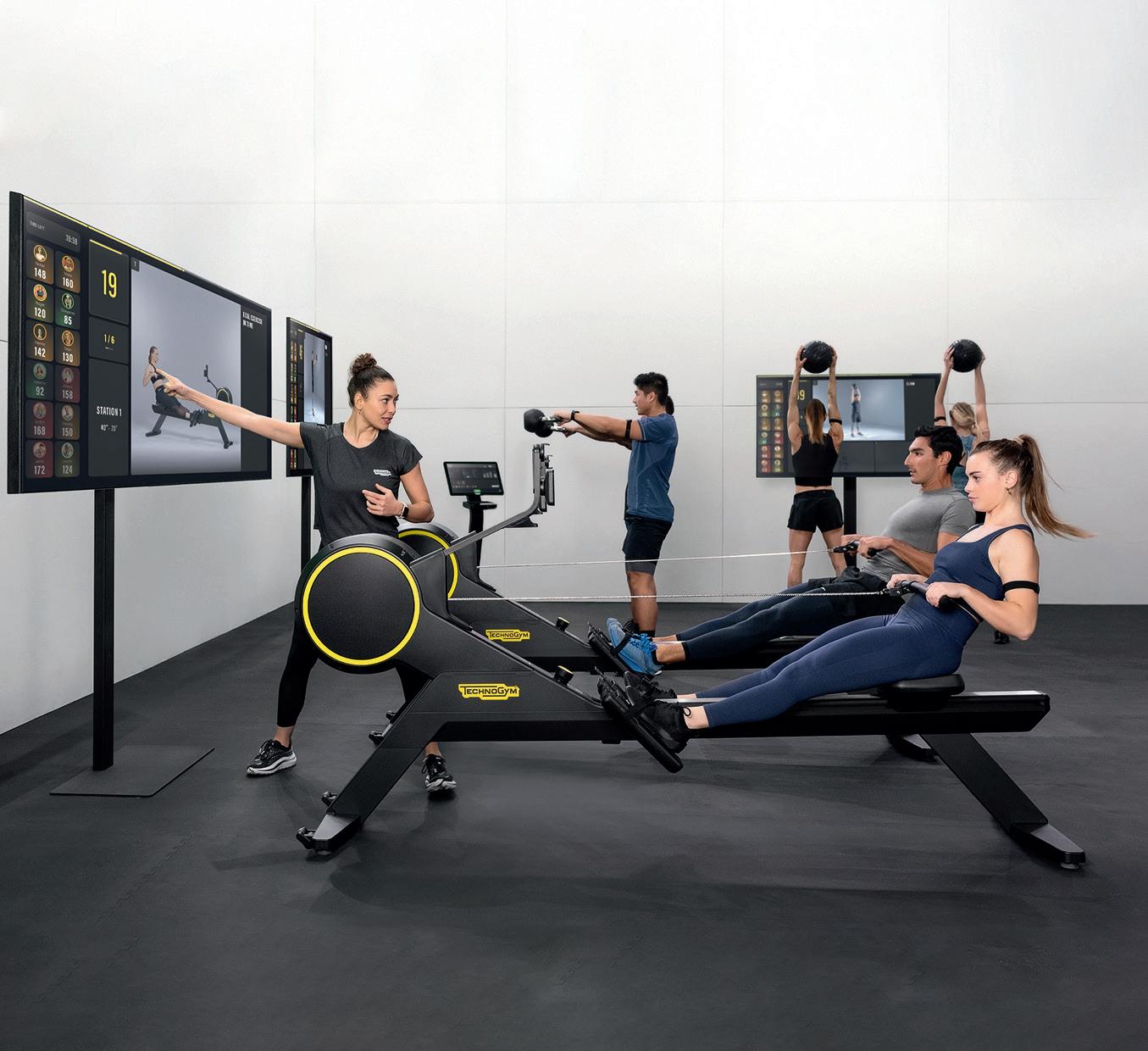
People want to train at home and in the gym while staying connected to their trainer
One account means access at home, at work, at the gym and while travelling
Gamification increases exercise duration
Martin Perry In brief
People expect ‘Experience-transfer’ in their daily lives, in the same way they expect to pick up a TV series from the night beforePHOTO: TECHNOGYM PHOTO: TECHNOGYM
Learderboards can use intensity points to reward effort over strength
Studies have shown there’s a direct correlation between people who track their workouts and those who make the best progress, yet only 12 per cent of members track their gym workouts.
Monitoring exercise helps with accountability and motivation, achieving progressive overload when weight training and identifying why goals are not being reached. Our system, which focuses on strength training, makes it simple for users to see what they’ve done in the gym with data visualisations and statistics to help them progress.
Leaderboards use intensity points which reward effort and consistency over raw strength, which makes lifting more inclusive and accessible. The calculation takes gender, age and bodyweight into consideration and then looks at what weight a user moved and for how many sets and reps. Leaderboards aren’t about top and bottom, but about creating positive competitive energy on the gym floor to help people push themselves. They help gyms engage their members and provide valuable data that can be used to help a gym learn more about weight lifting habits.
We’ve identified a growing segment of the gym membership who feel lost in the weight training
Brawn is a member retention app for gyms that educates, supports and challenges those who love to lift. We help gyms build a connected strength training community that results in less member churn and more leads for personal trainers.

area. By offering digital tools to help build confidence and remove that fear, we can help gyms with retention, while helping this audience to progress and stick to a routine in the gym.
Small group training is a fast growing trend we think will accelerate in 2023 with the help of digital tools that enable virtual connections. The next big thing will be virtual or digital classes for strength training: connected lifting.

We also see AI and predictive technology playing more of a role in hyper-personalising experiences for gym members. More: www.brawn.co.uk
Only 12 per cent of gymgoers track their workouts
Data visualisations help members progress
Leaderboards create competitive energy while also enabling gyms to learn about members’ workout habits
Digital tools help remove the fear of strength training
Hyperpersonalisation is a key trend for 2023
Leaderboards aren’t about top and bottom, but about creating positive competitive energySohail Rashid In brief PHOTO: BRAWN PHOTO: BRAWN
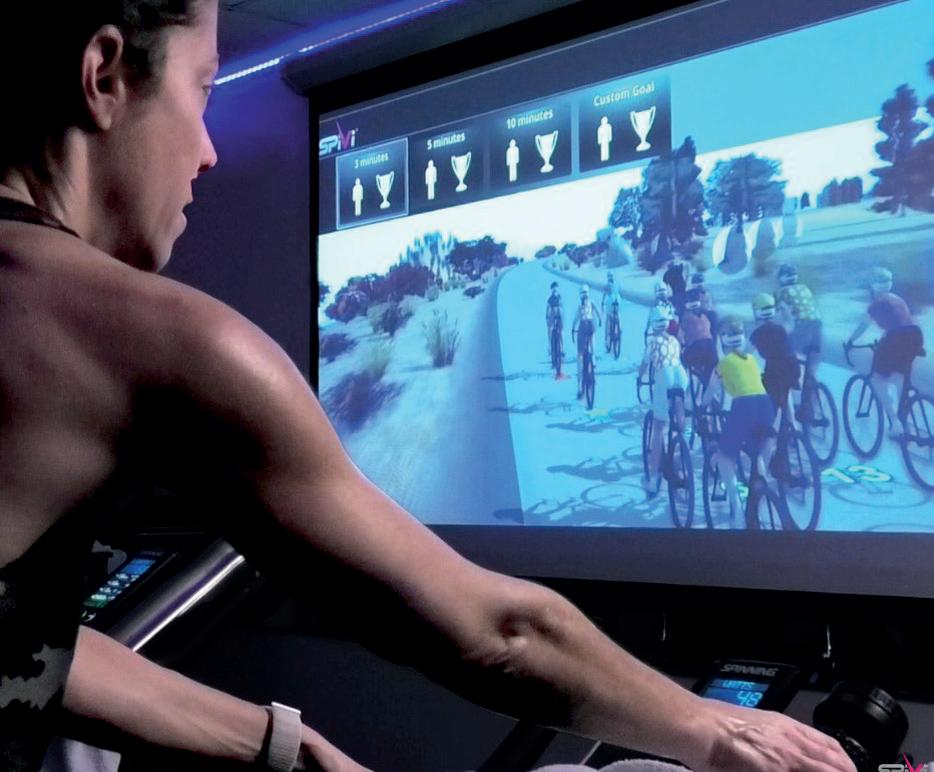
Spivi
What digital features can personalise a member’s training and experience at the club? Tracking personal performance data, setting milestones and displaying live leaderboards can provide a more engaging and motivational workout experience for members, helping them achieve their goals and personalising their training experience. By tracking performance data such as the percentage of max heart rate, mileage, power, and calories burned, members can see their progress over time and set realistic goals and milestones.
Reaching personal milestones based on performance data motivates them to keep pushing themselves to achieve their goals in a shorter time and to earn quick wins. Doing so while displaying live leaderboards can foster a sense of friendly competition among members, encouraging them to work harder and push their limits. They can compare their performance with others and strive to improve.
Based on performance data, members can receive personalised feedback on areas for improvement and suggestions on how to modify their workout routine to meet their goals more efficiently.
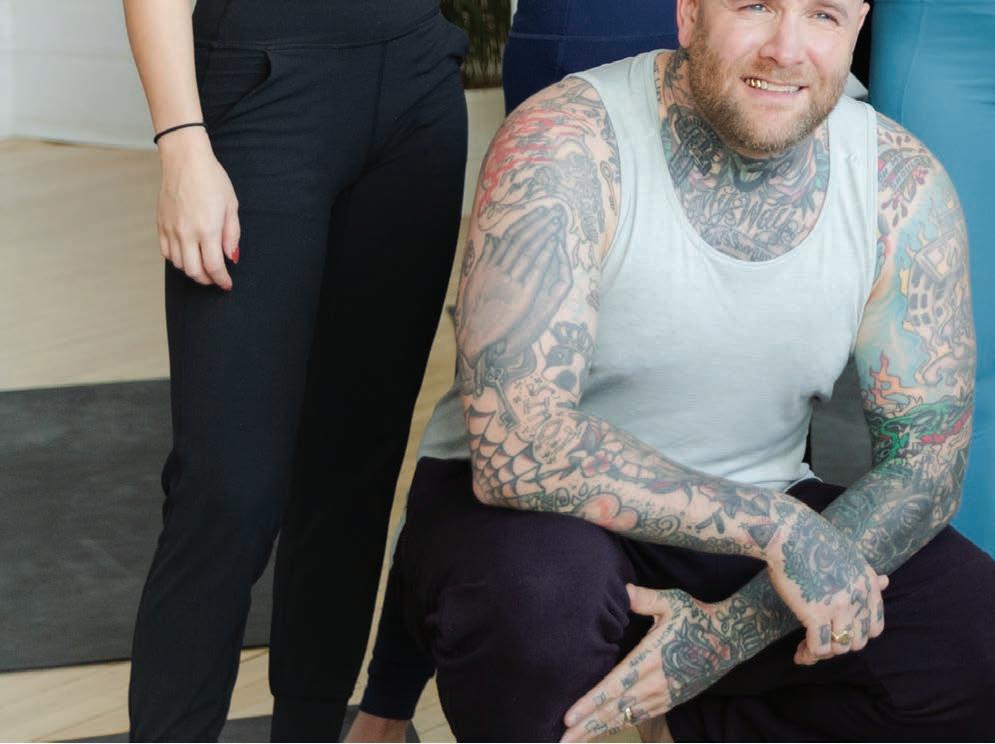
Gym members use wearables and heart rate sensors, including the Apple Watch. Spivi is an immersive fitness gamification platform that connects with these to track members’ performance data and gamify their fitness journey in a centralised way. It helps clubs boost engagement and retention and build community by using the natural human willingness for improvement and the encouraging environment of group fitness. The immersive workout experience is personalised using avatars and animation, leaderboards, challenges, milestones, points, and awards. The platform enhances all kinds of activities in the gym to strengthen engagement and brand loyalty. More: www.spivi.com


Offering live leaderboards, gamified experiences, and digital solutions for fitness clubs and boutique studios, Spivi helps gym operators achieve better retention and motivates gym members to become fitter and healthier, using existing wearables and fitness equipment to reward members based on group and individual performance metrics.





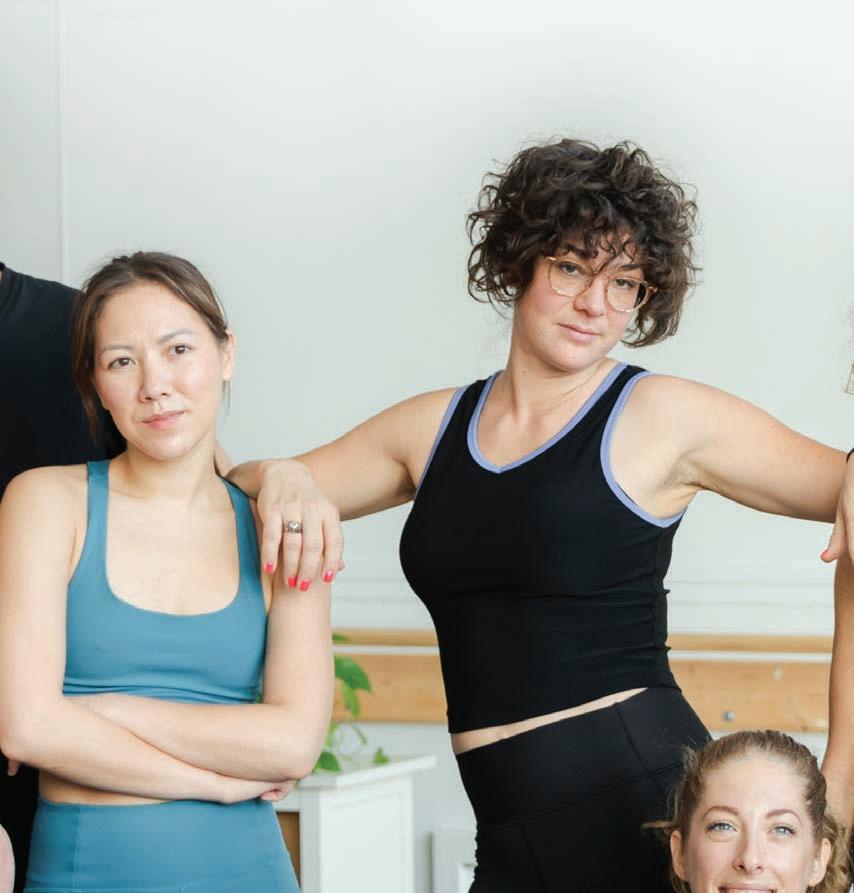


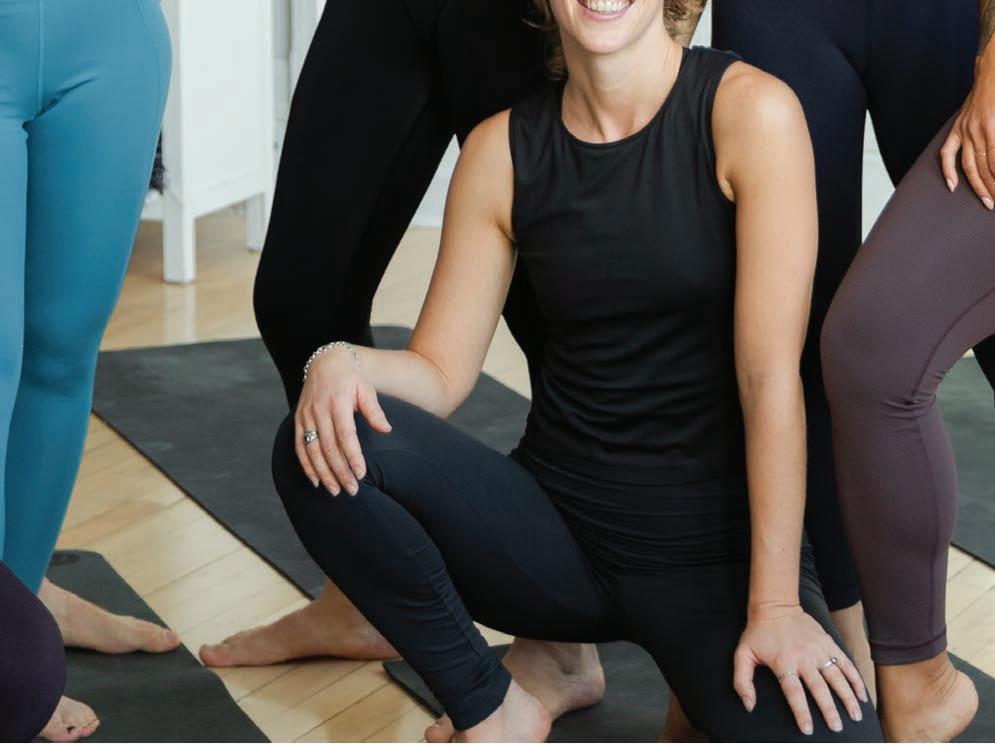

Virtuagym
Why is exercise monitoring and tracking so powerful?
To measure is to know. Exercise monitoring and progress tracking enables club members to see where they’re at and assess how they’re doing along the way. A great way to measure progress is through body composition monitoring, since the majority of members aim to either lose body fat or gain muscle mass, or both. In addition to the use of professional scales in a club, such as Inbody or Tanita, members can measure progress at home with a club mobile club app and an integrated bluetooth home body scale, such as the NeoHealth Onyx. Measuring progress enhances motivation. Through the use of wearables and fitness apps, you can not only visualise results during exercise, but also track and follow performance over time to meet goals. This informed approach contributes to members feeling more empowered, valued and willing to keep progressing on their fitness journey. Motivated members are more likely to stay and get better results, which ultimately leads to a healthier business.
We build industry-leading technology solutions, which empower businesses, health professionals and consumers to create sustainable lifestyle change, including fitness and nutrition apps, club management software and corporate wellness systems. Virtuagym enables the creation of fitness communities to get clients involved using groups, challenges and leaderboards.
We’re at the tip of the iceberg in regards to what exercise monitoring can contribute to our health.
In 2023, I expect fitness providers to use wearable technology as a core element of their offering to attain a complete view of member health and preferences, integrating with check-in and booking systems and mobile fitness applications to inform realistic member goals and strategies to reach them.

I anticipate further innovations in this area, from gamified experiences to automated calorie goals or workout plans that adjust intensity by measuring exercise and heart rate. As wearables become increasingly accessible, we’ll see exercise monitoring shifting from being an add-on to an integral part of the connected fitness experience. More: www.business.virtuagym.com
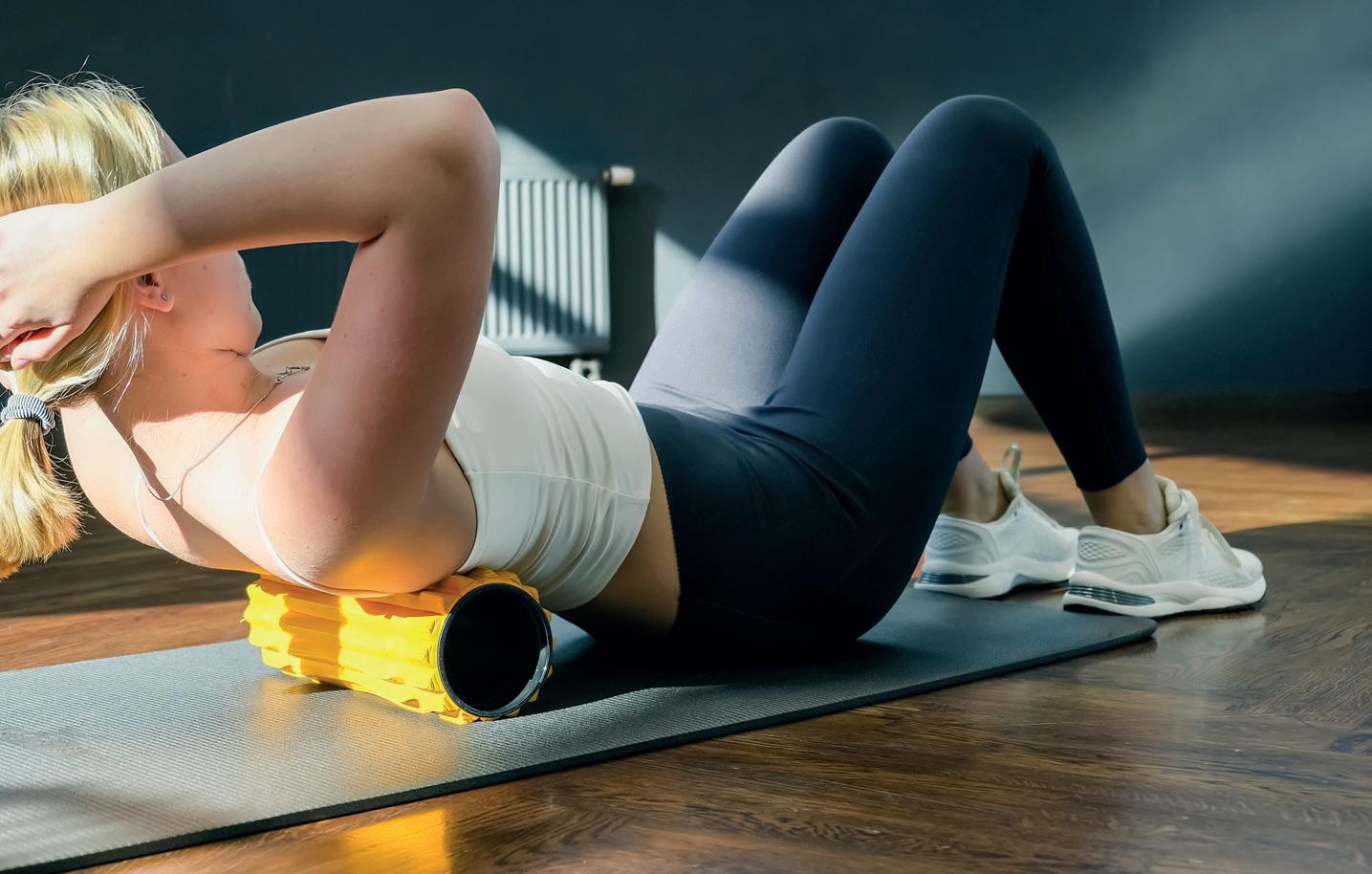
There are huge opportunities to drive engagement and retention through gamificationPHOTO: SHUTTERSTOCK/ SHYNTARTANYA PHOTO: VIRTUAGYM
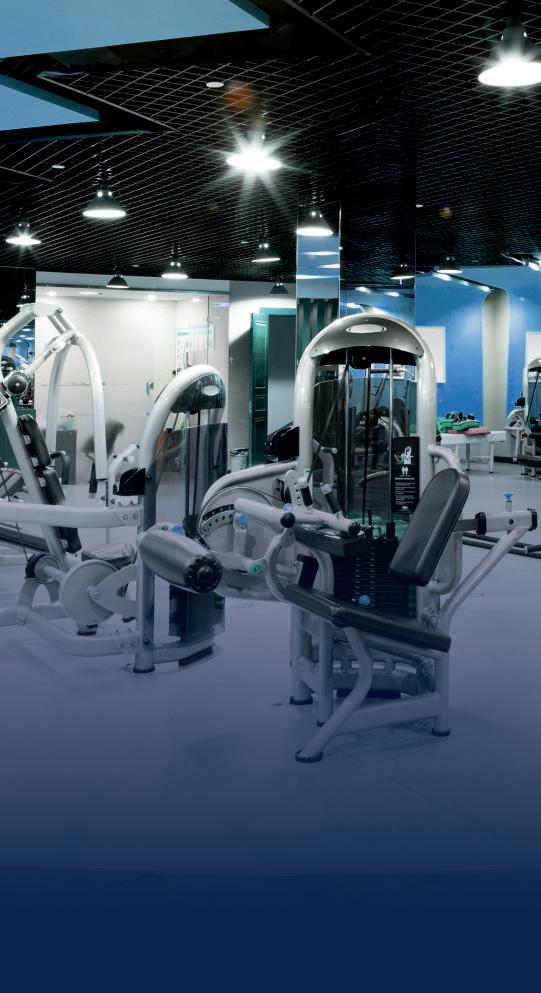







As the industry in the UK gears up for this annual trade event, HCM gives the lowdown on what you can expect

Since its launch in 2016, Elevate has been driving the union between physical activity, fitness and sports therapy in the name of national health and wellbeing.
Seven years on, the need for face-to-face discussion, business relationships, innovation and support across the sector remains as crucial as ever and
Elevate 2023 will be a huge stride for an industry poised to capitalise on the call for the nation to get active.
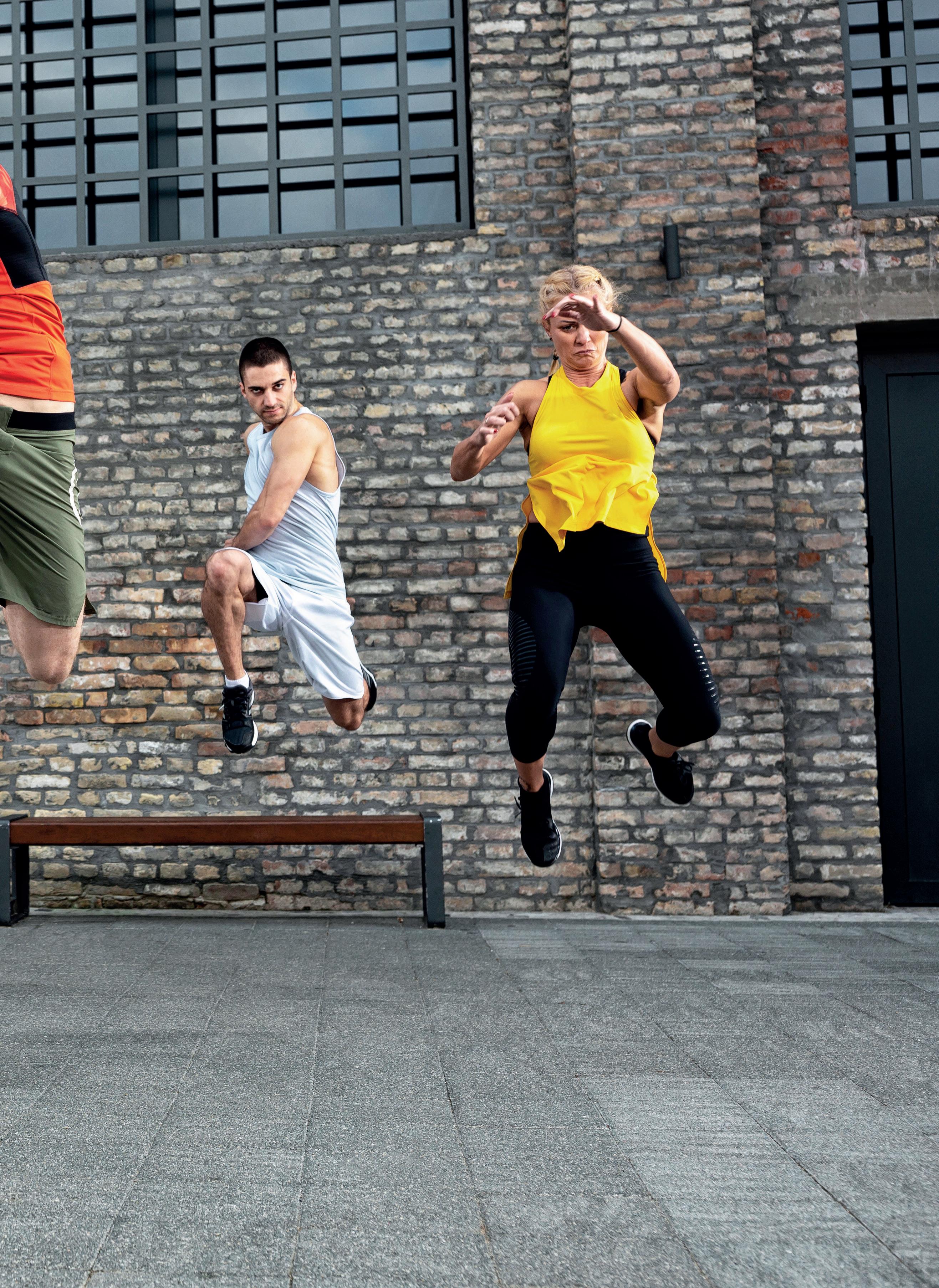
The need to get the nation active is more important than ever
The event brings opportunity, ideas, technology and innovation from hundreds of suppliers and thought-leaders together in one place. We pride ourselves in being accessible, keeping registration free for professionals who want to reconnect, celebrate resilience and look forward to a future full of exciting new opportunities.
Lucy Findlay, event director, Elevate
Elevate is the UK’s largest trade show dedicated to physical activity, fitness and sport therapy. During two full days, 7,000+ decision-makers from gyms, studios, sport clubs, sports therapy practices, universities, personal training, schools and private practice meet 250 suppliers, showcasing thousands of product innovations designed to ‘elevate’ physical activity levels in the UK. Elevate 2023 will also offer networking and deliver learning from 200 expert speakers and is made possible by the support of 50 industry associations, media partners and NGOs.
Technogym, Myzone, Active IQ, Egym, Matrix, Powerplate, Origin, Stages Cycling, Xn Leisure, Woodway, Cranlea, Jordan, JP Lennard, Swim England and Keiser. New for 2023 – Studio Grow, Gym80, Balanced Body, Randox, CDM, Brass Monkey, Airius, Tribox, Alternative Systems Production, Hydrohex and many more.
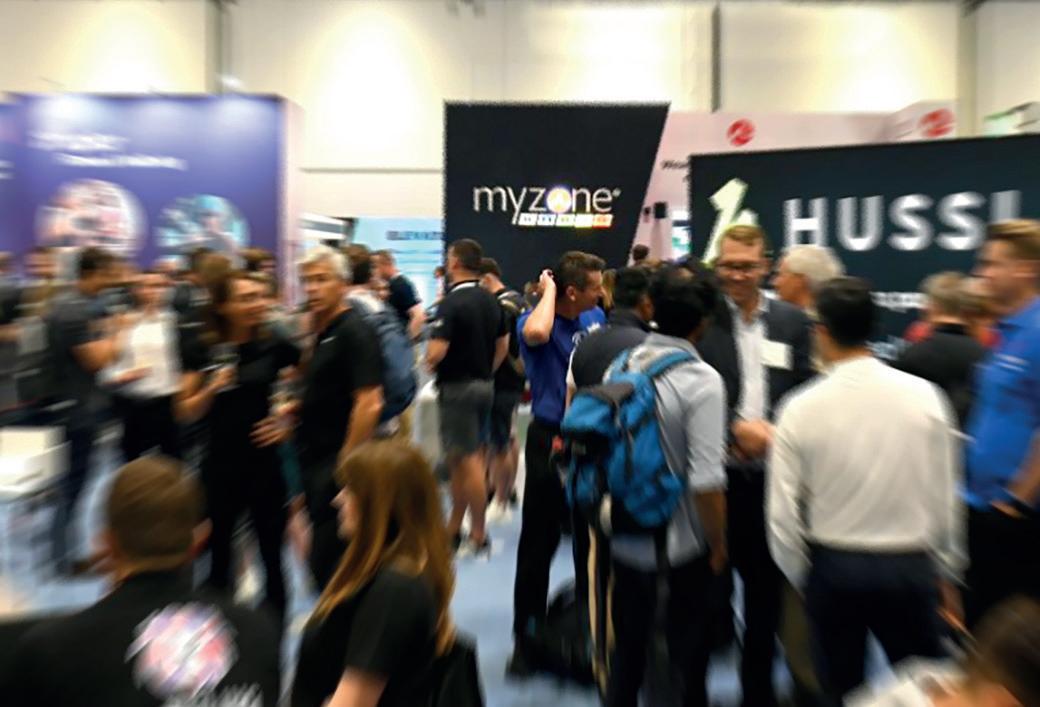
Elevate remains the largest live learning opportunity for the UK fitness and physical activity sector. Five streams of content will be on offer, with insight from industry leaders, including Sport England, UK Active, CIMSPA, Future Fit, Physios
In Sport, Moving Medicine, LeisureDB, Europe Active. Thanks to those involved, the entire programme will be free-to-attend, allowing the sector to come together without a paywall to focus on key issues, opportunities and successes.
The Elevate Thought Leaders Conference will host an Equality, Diversity and Inclusion series – focusing on creating true accessibility and delivering expertise from Equitable Wellness, Sporting Equals, Brighton University, Sport England, NGBs, and UK Active.
Each of the 11 designated Elevate Theatre targets a different subject – whether you want to explore how to get more people active (Activating the Nation Theatre) learn from the latest trends and technology to build your business (The Business of Physical Activity Theatre) discover the latest from wellbeing and nutrition (Future Performance and Wellbeing Theatre) or see the best practise and science from Sports Therapy (Sports Therapy in Practise Theatre). There will also be workshops with Third Space and Heart Centred Business as well as hands on Pilates education from Merrithew. The full Elevate programme can be accessed at www.elevatearena.com
Elevate remains the largest live learning opportunity for the UK fitness and physical activity sectorDecision-makers from the worlds of sport, fitness and wellness will come together over two days at Elevate PHOTO: ELEVATE
Alliance Leisure has developed 220+ projects and invested more than £300m into public sector leisure. As development partner for the UK Leisure Framework, the company has a proven delivery vehicle to speed up the procurement process while remaining compliant. Turnkey solutions from feasibility to construction and after-sales support, marketing and training are offered.
■
Airius has a range of destratification fan systems, designed to reduce heating and cooling costs by 35 per cent on average, while balancing temperatures to improve comfort levels. Its destratification units work simply and inexpensively to save energy, cut costs, improve comfort and reduce CO2, in swimming pools, sports halls and gyms.
With its worldwide patent, the Allegro 2 Reformer from Balanced Body is engineered and built to withstand everyday use, providing Pilates workouts for all fitness abilities in group reforming classes, small group training and during personal training.
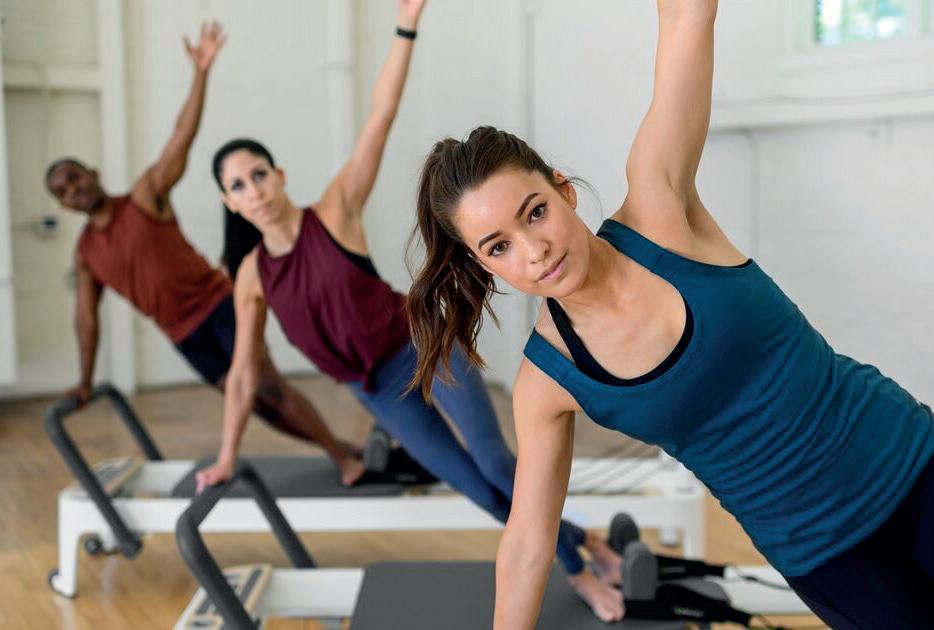
Pilates reformer work builds strength, balance, flexibility and the connection of mind and body, offering full body conditioning, the restoration or development of muscular balance, as well as targeted exercise for specific movement patterns, such as upper body rotation, range of motion and hip stability. It also reduces the risk of injury.
BASI Systems’ Pilates Reformer has an Enhanced Pulley System (EPS) that provides finely-tuned control,
while an expanded gear system allows precision in spring resistance settings. With a large carriage cushion and long track, it offers comfort and range of motion and comes with four prepared ports to deliver an expandable system that adapts to a wide range of needs.

Bioniq offers personalised supplements. An initial blood test assesses 50 parameters and the results are used to create a personalised multivitamin, ensuring the body is getting the nutrients it needs based on blood data. The service includes a nutrition consultation to understand the results and give health and lifestyle tips.
Brass Monkey offers fully automated, ice-generating ice baths which are controlled by an app so they can be fine-tuned to the location.
The Silverback model is a commercial-grade ice plunge designed to work in multi-user environments, powered by patented ice cycle technology, and cleaned with dual filtration and UV disinfection.
Flex from Future Fit is a digital learning management system that allows operators to set up, run, monitor and report on training for an entire organisation from one central location.
Designed for both large and small organisations, Flex helps
drive compliance and engagement, utilising a user interface to provide learning experiences and an administrative panel to delivers management information.
The company will be exhibiting the Pure Kraft Strong Press Bench which delivers an intensive chest workout. Its load drop mechanism allows the weight to be reduced by up to 30 per cent during the workout so drop sets can be undertaken without having to leave the training position to remove the weight discs from the machine.
The machine has two independent training arms, a sevenway, height-adjustable seat, an integrated boarding aid for optimal starting position and storage pins for weight discs.
The Box12 rolling circuit from Hatton Boxing takes 36 minutes to complete (12 x 3 min rounds) during which virtual coaching screens instruct members through a boxing and functional workout.
The operator can switch on the virtual coaching screens to play all day, meaning the success of the experience is not dependent on staff.
The rolling circuit model means a member can start the workout every three minutes, and can be operated as a class or via an open-door policy.
Hydrohex is a new service that brings the benefits of virtual to aqua fitness.

Providing participants with engaging classes, combined with split views from above and below the surface, Hydrohex offers a workout experience that’s easy to follow and challenging.
Hydrohex offers four class types, each with its own focus and style so instructors can direct the class from the pool, making following easier.
Elevate is partnering with Hyrox to give all companies within the industry the opportunity to get involved in a tailor-made Hyrox race.
The Elevate X Hyrox partnership will aim to engage a range of physical
activity professionals and operators, allowing them to undergo the Hyrox Physical Fitness Test (PFT).
The Hyrox race will be open to all Elevate attendees and is an opportunity for four team members to represent their brand as one team. The Elevate X Hyrox PFT will be half the length of a normal Hyrox race and everybody is invited to participate in their company’s team of four – from sales teams to facilities staff and from to PTs to managers.
“We’re delighted to support Elevate 2023,” said Hyrox’s Edward Dier. “As the UK’s largest trade show dedicated to fitness, sport and physical activity, it’s a fantastic opportunity for us to showcase how the Hyrox Experience can be part of any facility.”
Indigo will showcase the Raze Shadow XD lifting rack, as recently installed at Third Space Moorgate. Racks are designed and manufactured in-house using materials specified to increase longevity. This includes the
Elevate Theatres will highlight 11 industry topics during the event’s conference‘Future Performance and Wellbeing’ will be at one of the Elevate Theatres PHOTO:
legs that are constructed from 304 stainless steel to increase strength and resilience.
The Helix Power Rack by Jordan will be on show. The freestanding rack can be installed on a level surface anywhere indoors, with 5mm-thick steel brace plates and a longer base frame securing the workout.
The rack includes a 150kgrated chin-up bar as standard and numbered 18mm holes at 35mm intervals to enable the use of 17 compatible Helix attachments.
The Life Fitness team will be consulting with visitors to explain how they create tailored solutions using the Life Fitness and Hammer Strength brands. Visitors will also be able to experience Life Fitness On Demand+ which offers a library of instructor-led on-demand workouts and interactive terrains while also enabling operators to become their own content creator.
Life Fitness On Demand+ is free to new and existing customers with Discover SE3 HD consoles.
Merrithew’s all-black V2 Max Reformer (Onyx) Bundle has been designed for boutique studios, clubs, fitness facilities, as well as private homes which have a dedicated Pilates space.
The reformer is versatile and allows for easier transitions between exercises for efficient group and oneon-one training. A six-position, highprecision gearbar means users can achieve greater precision and superior ergonomics when setting or altering the tension between exercises.
The Miha Bodytec ‘Move’ (m.ove) workstation and travel station are the latest medically approved additions to
the range, and have been designed for enhanced portability and versatility. Move is perfect for operators such as spas, medical clinics, boutiques and PT studios.
The equipment does not require a permanent power supply and uses Bluetooth to connect to the EMS suit, giving greater freedom to train.
The company will be showcasing its access control solution that enables members to get into a gym or sign into classes and activities quickly and easily via a branded member app. This can transform the members journey and increase App usage while also reducing fraudulent entry and increasing revenue.

Plastic usage is also reduced, with less money spent on cards, tags or bands.
Omega Security will be launching two new products at Elevate – a pool alarm system and an inhouse assistance alarm system that can cover entire facilities.
The system has mobile pendants, sauna-proof buttons, an easily managed system with multiple zones and can be used in accessible areas with pool cords and push buttons, as well as poolside and in remote areas, such as tennis courts.
Orbit4 will be showcasing its allin-one asset management system, service ticketing portal and fully connected procurement ecosystem.
The system drives more data to gym operators so future procurement decisions can be
scientific and data-driven. The solution is subscription-based and each of the four pillars can be implemented anytime.
Perfect Gym will showcase its allin-one gym management system at Elevate, which is used by 1,500+ facilities in 55+ countries.
Using automation and digitalisation, the platform enables facility owners and managers to enhance their customers’ personal fitness journeys with the aim of enabling them to transition from facility of choice to brand of choice.
The Power Plate Rev bike with built in vibration will be on show at this year’s Elevate.
With patent-pending VibeShift Technology, the Rev delivers consistent, safe, precise, and predictable vibration through the pedals – a press of the lever shifts the mode from
standard to full-on vibration.
The new product offers health and fitness clubs a vibration concept that delivers accelerated results in a minimum amount of time, while increasing muscle activation.
Precor will be joining the exhibition floor, as well as sponsoring the Business of Physical Activity Theatre, one of Elevate’s 11 conference theatres.
The company will showcase its range of cardio solutions, including the Precor StairClimber, which uses patented technology.
The Precor StairClimber is designed to cater for exercisers of all shapes, sizes and fitness levels with easy-to-negotiate step-on and step-off platforms, its trademarked Dynamic Step Control – which creates a consistent step for each exerciser’s size and speed – and a range of between 20 and 165 steps per minute.
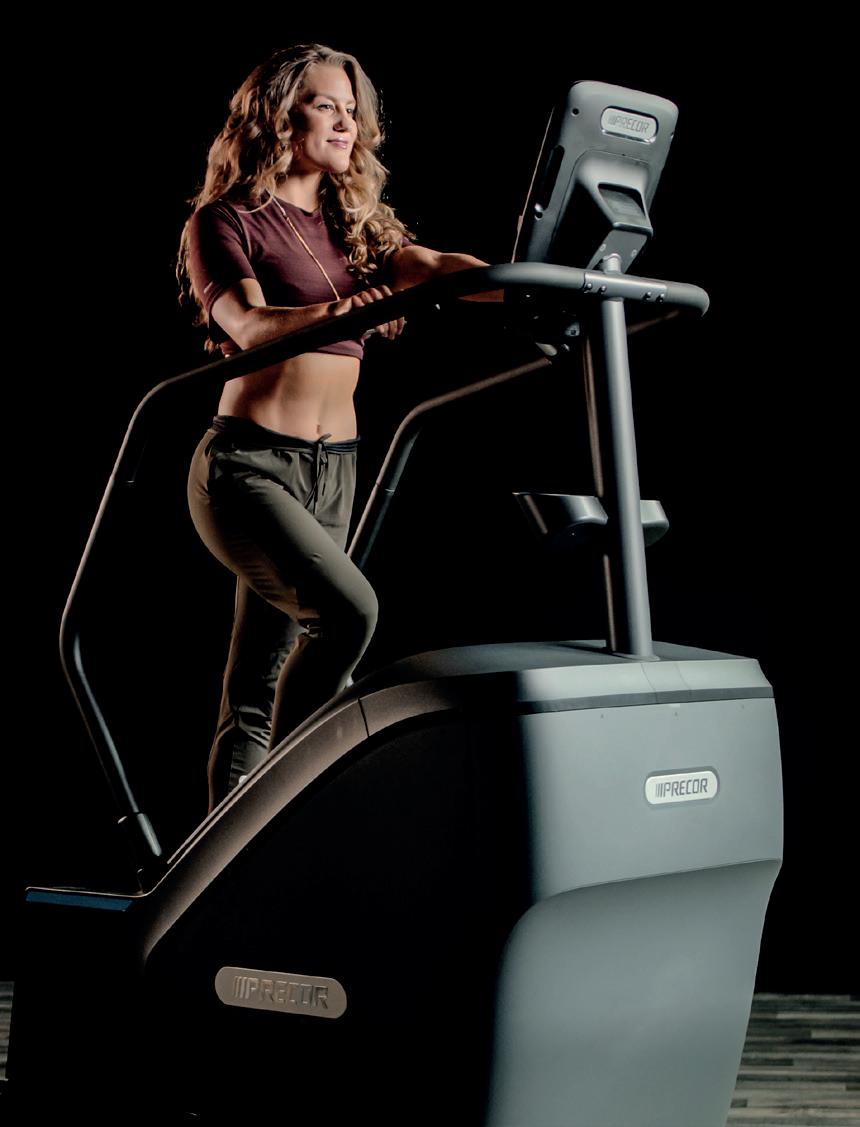
Quoox Alchemy is a specialist business support service for Small Group Personal Training (SGPT) gyms which offers Alchemy, the Quoox gym management software,

at its core. The Quoox Alchemy system offers a range of resources and pre-made tailored content designed to increase turnover, attract new members and maintain a high renewal rate.
Salto’s patented networked locking systems are designed for mid- to large-size locker installations requiring a comprehensive locker management solution and integration with third party solutions.
The keyless lock is equipped with anti-theft protection and Elevate visitors will have the opportunity to see how the lockers are used in real-time.
Lockers can be configured to charge USB appliances, while web-based locker management software offers a real-time audit trial, utilisation reports and the possibility to assign lockers from mobile devices. The networked system is hardwired, doesn’t use batteries and is environment-friendly
The Stravigym XP isolator floating floor system – intended for use in free-weight areas – offers structural resistance and acoustic performance, and can withstand and absorb
the energy from high impacts.
The product is engineered to reduce noise, dampen vibration and minimise bounce, thereby reducing the risk of injuries and it is suitable for commercial gyms.
Technogym will exhibit its Ecosystem which comprises connected smart fitness equipment, digital services and training content.
Technogym’s Mywellness CRM enables people to connect to their personal training experience anywhere, via equipment or mobile devices. Other innovations
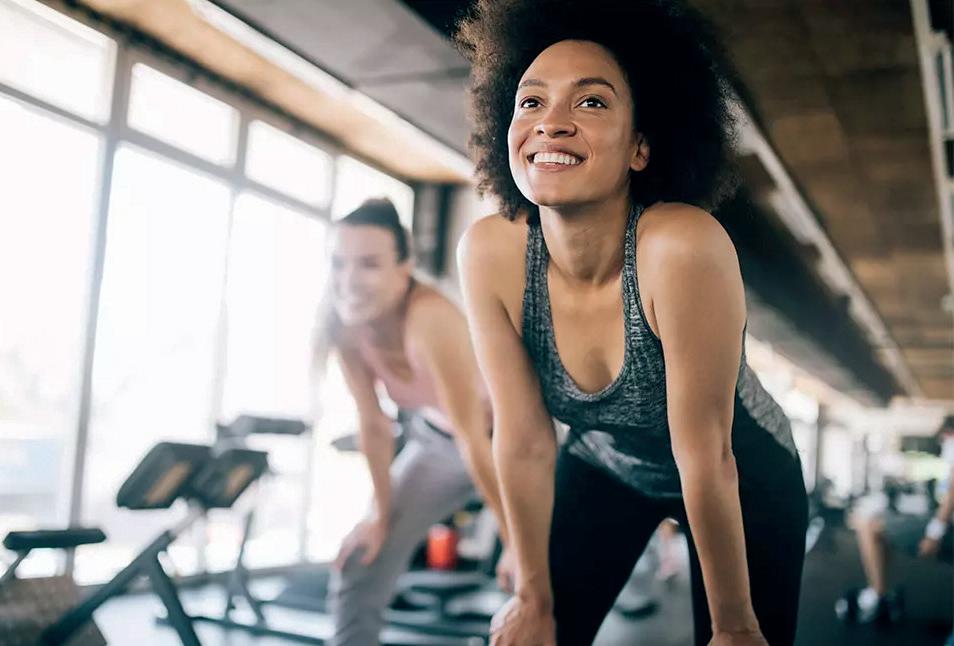
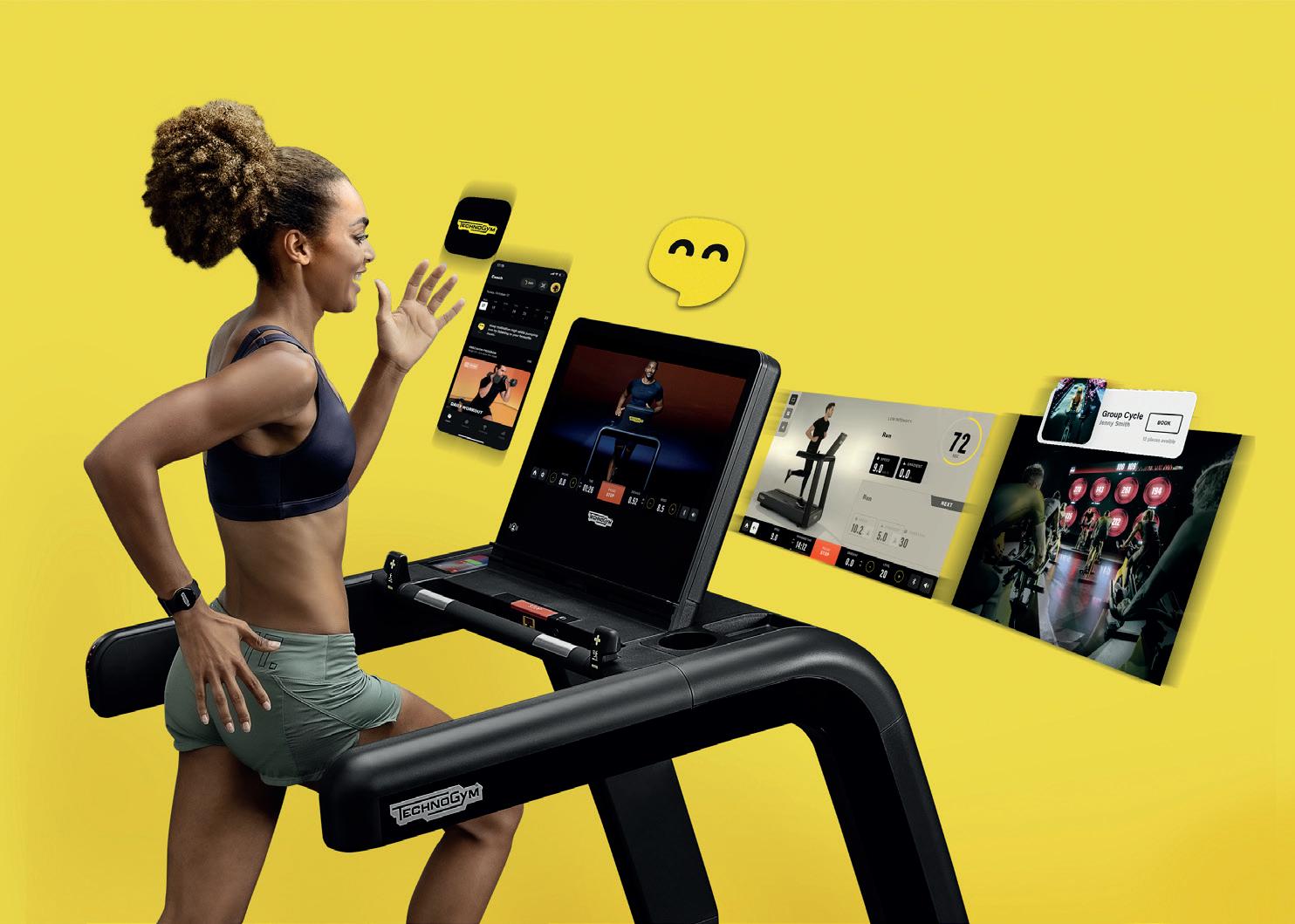
highlighted at Elevate will include the Technogym Skillrun Bootcamp which redefines the bootcamp experience and makes it available for a wide range of consumers; the Universe Cage, a functional strength training platform equipped with a variety of tools and accessories.
Also on show will be Excite Live, a line of fitness equipment with space saving design. It also offers digital content and Biostrength, which uses AI to adapt the workout to each user and ensures 30 per cent greater results.
Technogym will be running five workshops each day in its theatre, focusing on core topics such as consumer training and lifestyle needs, trends and insights surrounding functional strength and how businesses can optimise efficiency through digital transformation.
■ Xplor
Xplor Gym will be displaying its all-inone gym management software with embedded payments and integrated access control, as well as the Legend by Xplor software which brings together leisure centre software, membership payments and valueadded services – all powered by one platform – allowing operators to run leisure facilities efficiently. l
PHOTO: SHUTTERSTOCK/ NDAB CREATIVITY Technogym’s Ecosystem will be on show Xplor will showcase its two software products PHOTO: TECHNOGYMFor more insight, or to get in touch with the companies featured, visit www.fitness-kit.net and type in their keyword

Eleiko has expanded its Prestera System to include a complete Rig offering – the Prestera Strength System –which consolidates a range of training methods, from free weights to body weights
and cable training – into one complete system.
The update introduces new configuration options, blurring the lines between traditional racks, rigs, and cable machines, helping facility managers do more with their space.
“The Prestera System aligns with today’s training preferences, whether in a high-performance facility or commercial gym, and is designed with rigour and expertise to keep lifters at the centre for the ultimate training experience,” says Eleiko’s Erik Blomberg.
“With the expanded Prestera System, we can
help customers cater to their athlete needs and client training preferences in ways that better utilise their space and facilities.
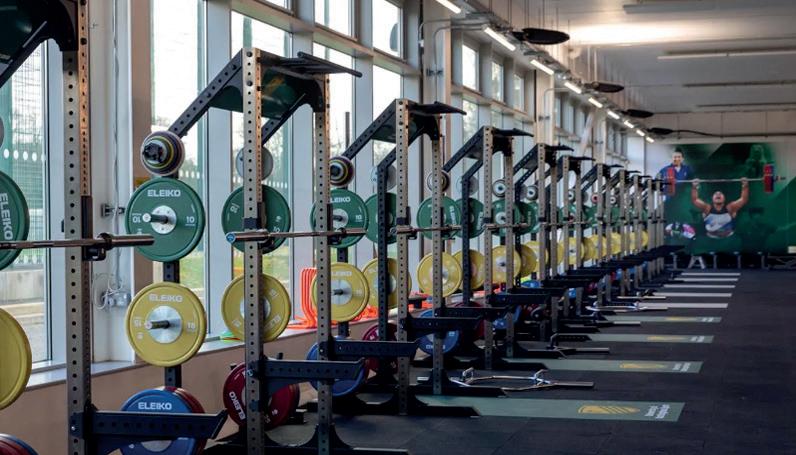
“In addition, smart storage solutions keep free weights,
Wattbike has launched Hub+, a subscription version of its app that delivers more personalisation for a customised workout experience, integration with third-party apps and new, exclusive training content curated by athletes, sports scientists and researchers.
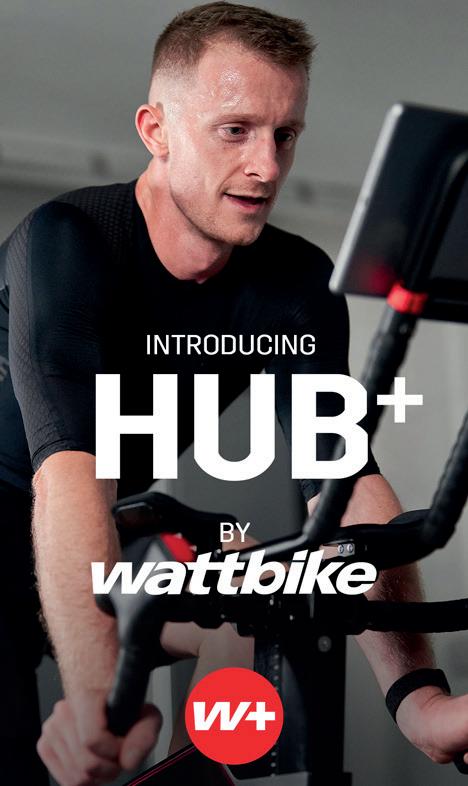
Hub+ subscriptions can be packaged for operators, independent gyms, studios, coaches and PTs in order to provide members with bespoke club workouts, extra training content, challenges and individualised
member sessions at just the touch of a button. This can help clubs to personalise content effectively to meet differing goals and abilities.
Hub+ incorporates a Workout Builder, a tool designed with drag-and-drop via which users, coaches or PTs can configure their own workouts within the app.
Duncan Bradley, Wattbike’s chief product and brand officer, says: “Performance is personal, whether it’s about professional achievement, fitness goals, taking care


Blomberg
attachments and accessories at the lifter’s fingertips, creating more effective and efficient training sessions and a more positive experience.
fitness-kit.net keyword
http://lei.sr/y5A3K Eleiko
of mental health or rebuilding strength after injury. Hub+ can help our customers achieve those goals with more control of their training.”
keyword
http://lei.sr/u5C4g
The expanded Prestera System enables operators to distinguish their training experiences
Erik Blomberg
We’re helping customers exert more control over their training
Duncan Bradley● The Prestera System enables better space optimisation PHOTO: ELEIKO ● The Wattbike Hub+ is the company’s first subscription model PHOTO: WATTBIKE
“If you’re going to redesign a bestselling product, you have to do it in a very considered way,” says Physical’s sales and marketing director, James Anderson.
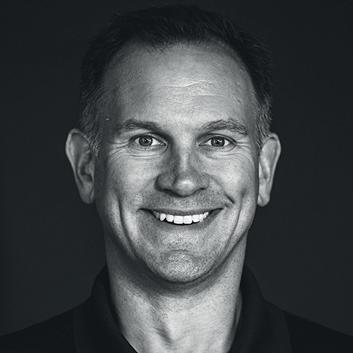
“You have to be sure you’re not over-complicating things or bringing in change for change’s sake and you have to base all tweaks on customer feedback, so each refinement enhances
detracting from an experience that people are already enjoying.


“This is what I can confi dently say we’ve achieved with the launch of our new RBX Rubber Pump Set – one of many fantastic new products in the 2023-24 Physical catalogue,” he adds.
The new set comes in a black, grey and teal colour palette, meeting customer requests for equipment that blends more subtly with their own colour schemes.




















Other key feedback informing the new design related to plate shape and grip.

Designed to meet customer needs


“We had a lot of requests for fl attened edges on the new discs to stop bars rolling away in class, but other customers said they wanted round discs
for exercises such as ab roll-outs,” says Anderson. “We’ve delivered the best of both worlds: our 5kg and 2.5kg plates have fl attened edges to prevent rolling and provide stability in fl oorbased exercises; our smaller 1.25kg plates are circular.”


10kg plates can be purchased separately and feature anti-roll edges.




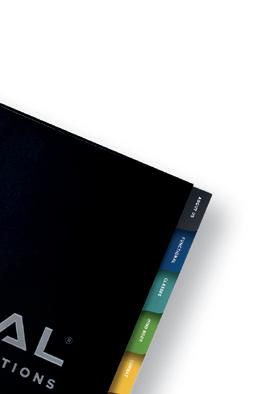




Other feedback related to the enhanced use of plates as hand-held weights when used off the bar.
Previously manufactured with three grip holes, the new RBX plates have just two – one each side – for a perfect horizontal grip when doing ‘steering wheel’
exercises and an easier hold when used for things such as overhead tricep extensions.
The durable virgin rubber plates also have a textured surface and three grip positions – double-handed, singlehanded and over the centre – thanks to grip texture on the inside and outside of handles. This enables a wide range of exercises that would normally require dumbbells or kettlebells.
The set includes a 1,400mm, 2.5kg premium bar with 50kg max loading, plus two x black 5kg plates, two x grey 2.5kg plates, two x teal 1.25kg plates and snap-lock collars as standard.
Physical’s new RBX Rubber Pump Set incorporates user-centric functionality for an enhanced experience, says James Anderson● The set includes rounded and anti-roll plates
For more insight, or to get in touch with the companies featured, visit www.fitness-kit.net and type in their keyword
Base Bench from Escape Fitness has been designed to promote whole body engagement.
The product is an adjustable pad that clips to Escape’s Octagon frame range, supporting the upper body while engaging the
glutes, leg, feet and core muscles to provide lower body stability across a wide range of pushing and pulling exercises, to delivers a whole-body workout with every repetition.
The lightweight pad, made from PU Foam in a mild steel case, is designed for both individual and partner training and designed for use when doing supine, seated, prone and support exercises.
When not in use, Base Bench is easy to move and store due to its lightweight construction.
Ritchie Januszek, product and service executive director at Escape Fitness, told HCM : “Base Bench is

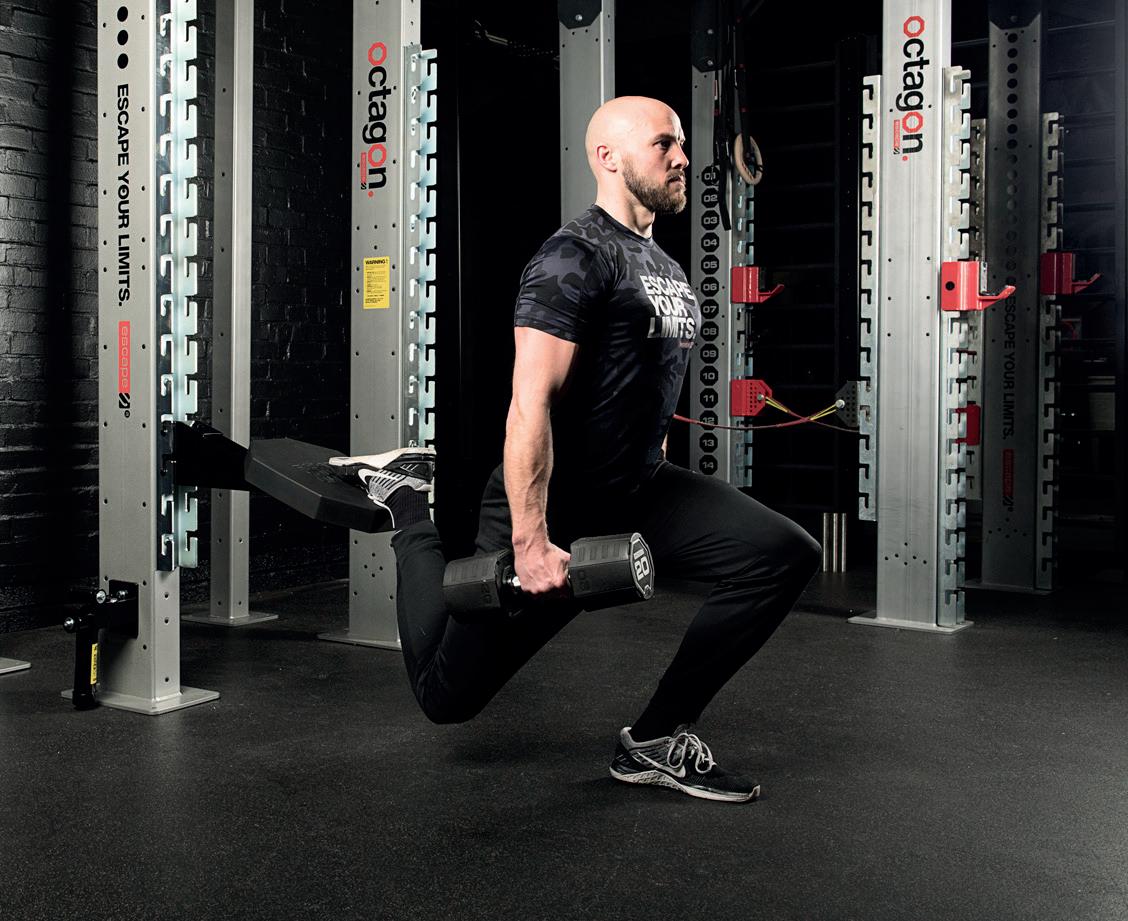
Core Health and Fitness has launched the StairMaster 4G for the vertical market, says Ella Verhees
Core Health and Fitness has announced the 4G, the first StairMaster StepMill designed for the vertical market, which fits into more spaces with its footprint of 54” x 29” and height clearance of eight feet.
Designed to fit into health clubs, gyms, studios and hotels, as well as multihousing gyms, the 4G is from the same family as the StairMaster 10G and recently launched 8Gx.
Core’s Ella Verhees, says: “As a product developed for both light commercial and residential use, we had to ensure it could
The StairMaster StairMill enables the sharing of real-time data
Ella Verhees
stand on its own in an unsupervised space.
“Our OpenHub 15” Embedded Console connects with Apple and Samsung Galaxy watches for real-time data sharing between
designed to optimise the output of every repetition through the engagement of multiple muscle groups.
“Used as an anchor point, a seat or a torso rest, the frame introduces a multitude of exercise and movement
options. With its quick-fix attachment via the Octagon frame’s height adjuster teeth, Base Bench can be added to any functional training space with an Octagon frame.”
http://lei.sr/P9f3i
equipment and watch, to keep users on target with their favourite devices,” she said.
NFC technology enables a tap-to-pair connection, making data tracking easier. The 4G stands alone with
enhanced device connectivity for a user-friendly interface. The StairMaster 4G rounds out the 4 series as the cardio solution for small spaces.
http://lei.sr/W0e9P
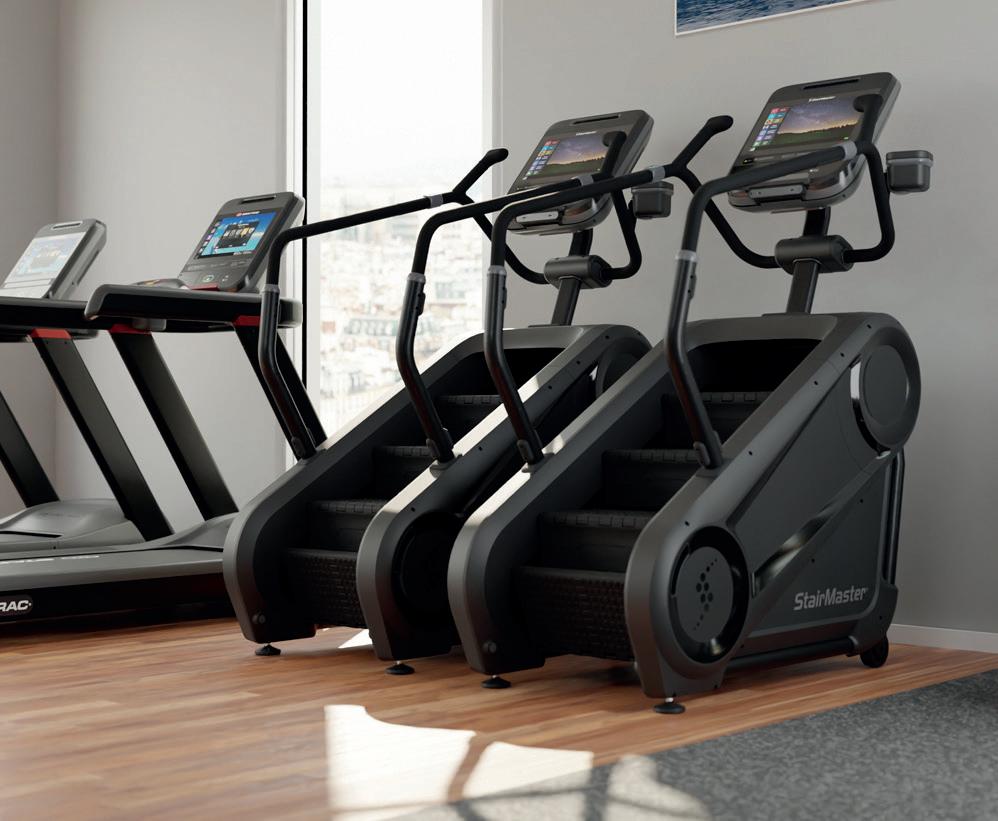
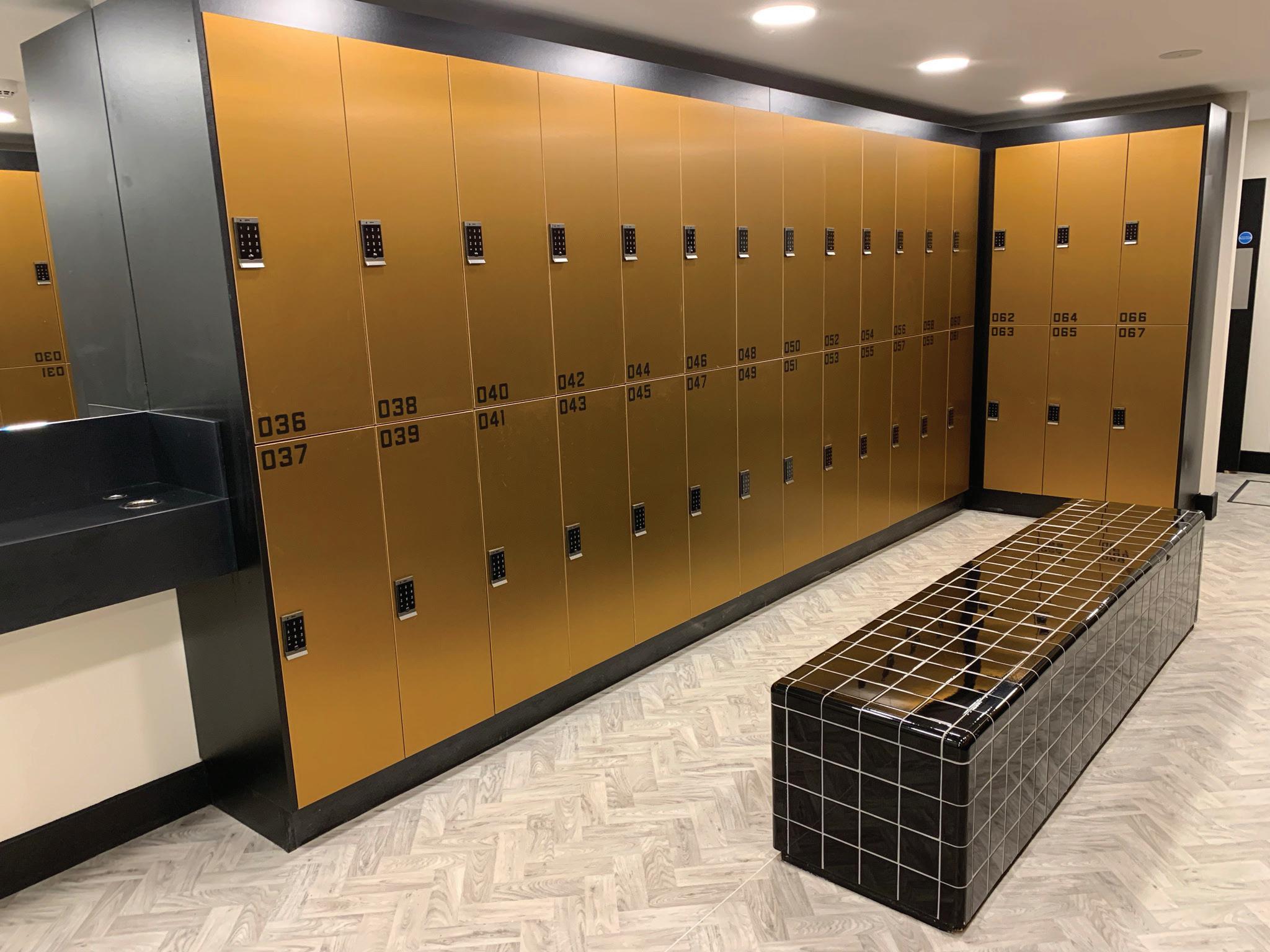
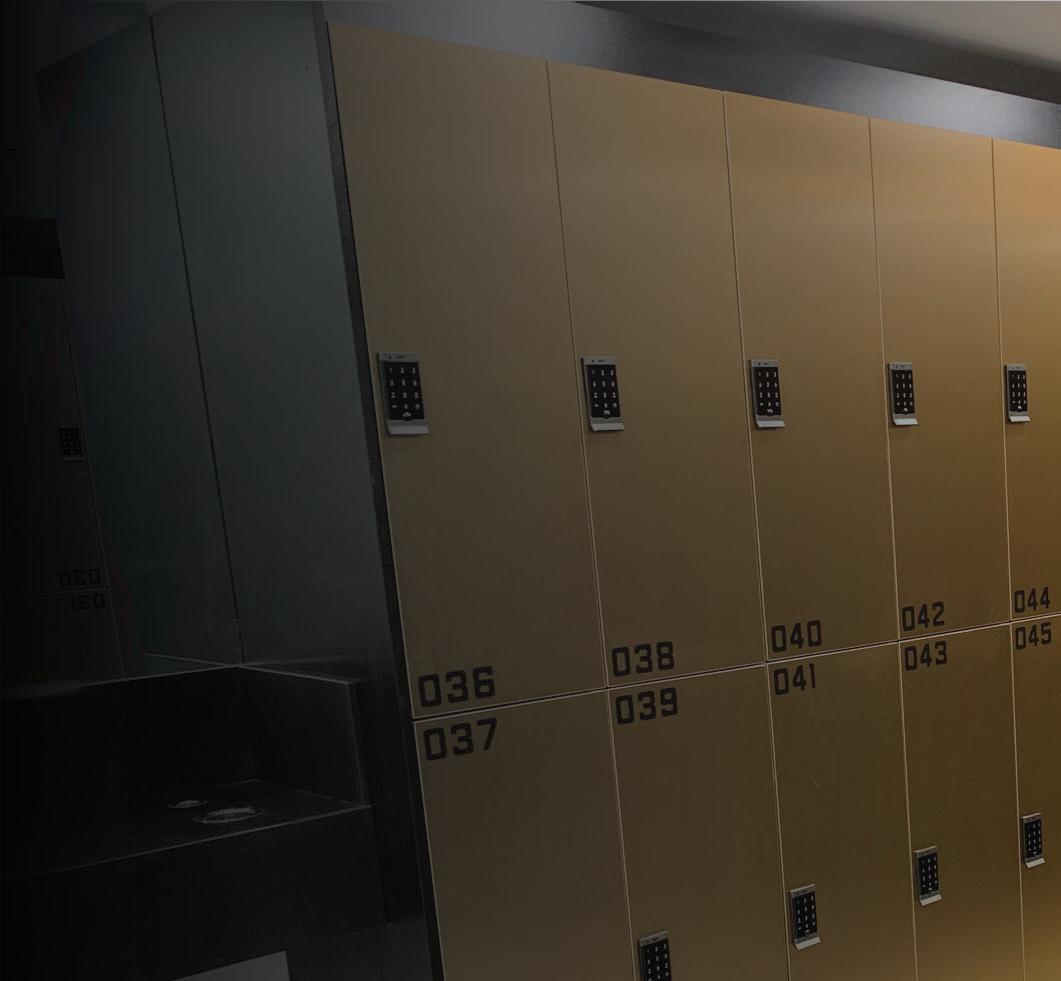

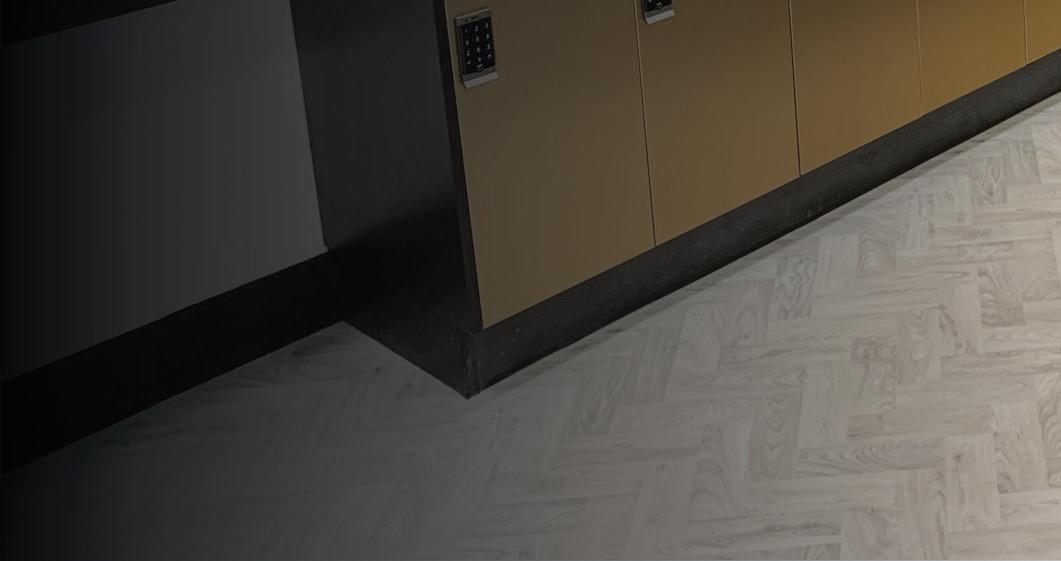


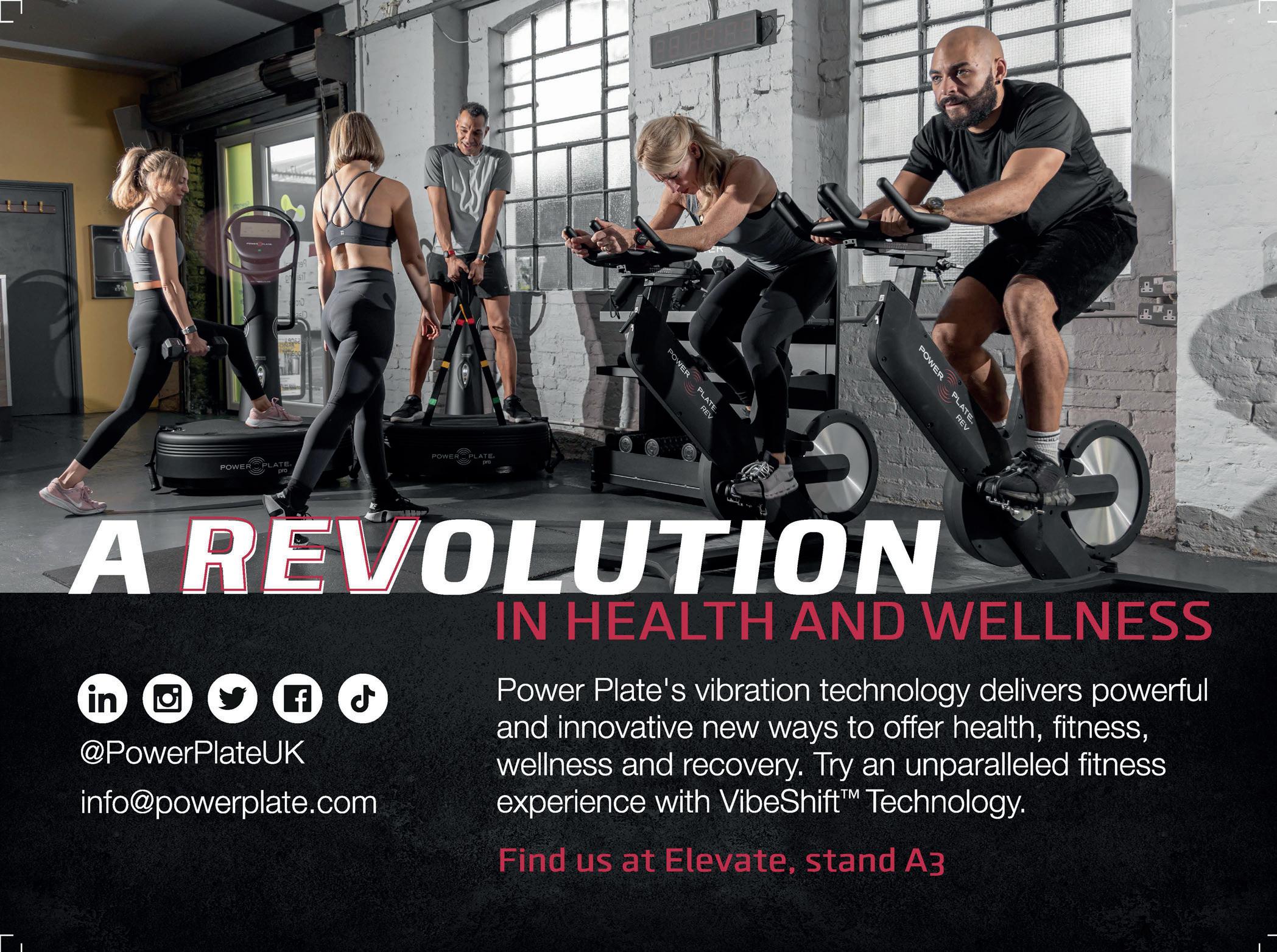





















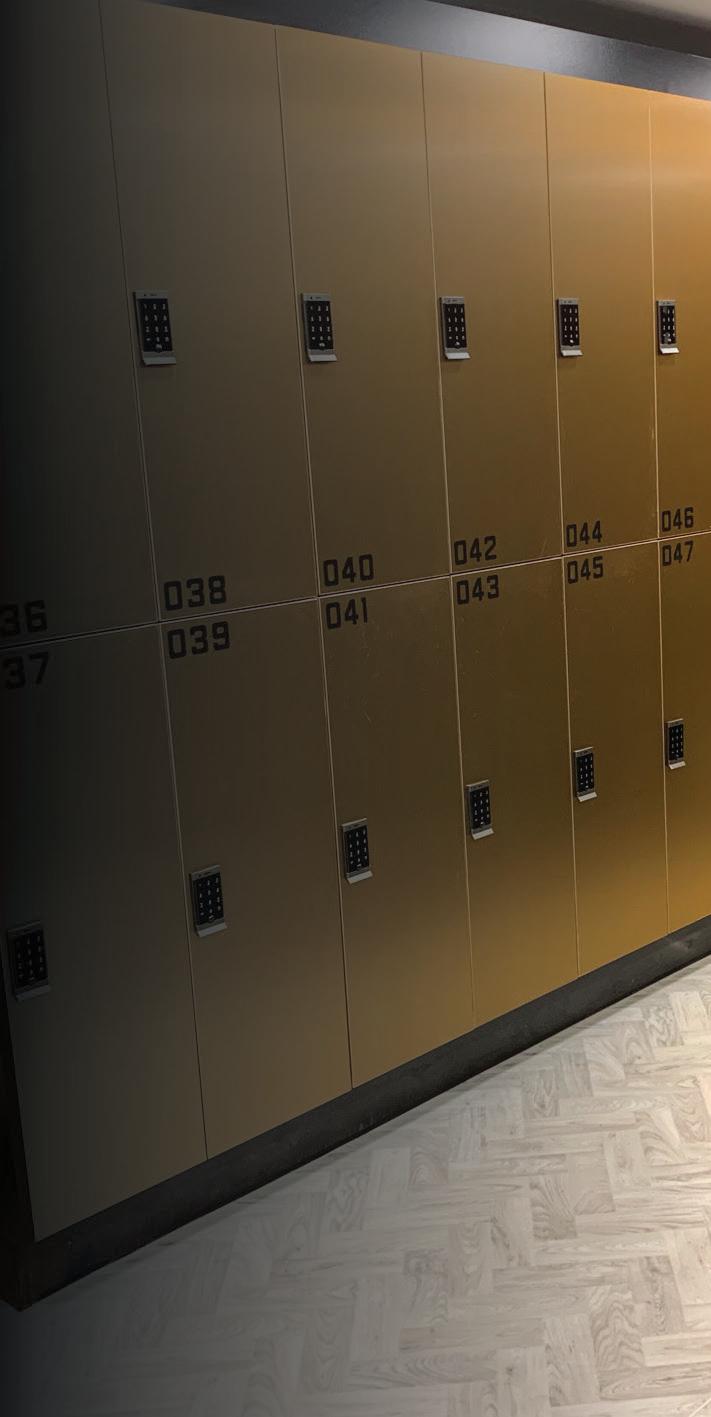
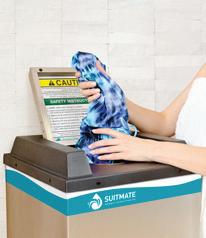







People who get regular, uninterrupted sleep do a better job sticking to their exercise and diet plans while trying to lose weight, according to new research
Apresentation, given by the American Heart Association, charted the findings of a study in which researchers examined whether good sleep health was related to how well people adhered to various lifestyle modifications prescribed in a year-long weight-loss programme.
The programme included 125 adults with an average age of 50 years (91 per cent female, 81 per cent white) who met criteria for overweight or obesity (body mass index of 27-44). None of the subjects had medical conditions that required medical supervision of their diet or physical activity.
Researchers measured sleep habits at three points –the beginning of the programme, at six months and 12 months. The measures were used to score participants as “good” or “poor” on six measures of sleep: regularity; satisfaction; alertness; timing; efficiency; and duration.
Meanwhile, adherence to the weight loss programme was measured too, by recording their daily calorie intake and how many group intervention sessions they attended, as well as charting the changes in moderate or vigorous physical activity.
The researchers found that better sleep health was associated with higher rates of attendance at group interval sessions, adherence to caloric intake goals and improvement in time spent performing moderate to vigorous physical activity.
Those who had better sleep patterns attended 79 per cent of group sessions in the first six months and 62 per cent of group sessions in the second six months. They also met their daily caloric
intake goals on 36 per cent of days in the first six months and 21 per cent in the second six months.
When it came to exercise, participants increased their total daily time spent in moderate-vigorous activity by 8.7 minutes in the first six months and the figures were above those recorded by subjects with “poor” sleep patterns.
The report was presented by Christopher Kline, an associate professor in the department of health and human development at the University of Pittsburgh.
“We had hypothesised that sleep would be associated with lifestyle modification; however, we didn’t expect to see an association between sleep health and all three of our measures of lifestyle modification,” he said.

“Although we didn’t intervene on sleep health in this study, these results suggest that optimising sleep may lead to better lifestyle modification adherence.
“Focusing on obtaining good sleep — seven to nine hours with a regular wake time along with waking refreshed and being alert throughout the day — may be an important behaviour that helps people stick with their physical activity and dietary modification goals.” l
l More: www.hcmmag.com/Sleepadherance
Although we didn’t intervene on sleep health in this study, these results suggest that optimising sleep may lead to better lifestyle modification adherencePHOTO: SHUTTERSTOCK/GORODENKOFF People who get good quality sleep do a better job sticking to their regime


